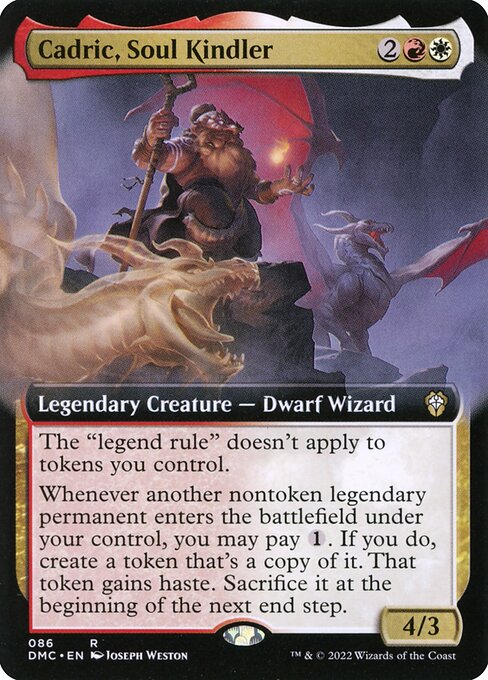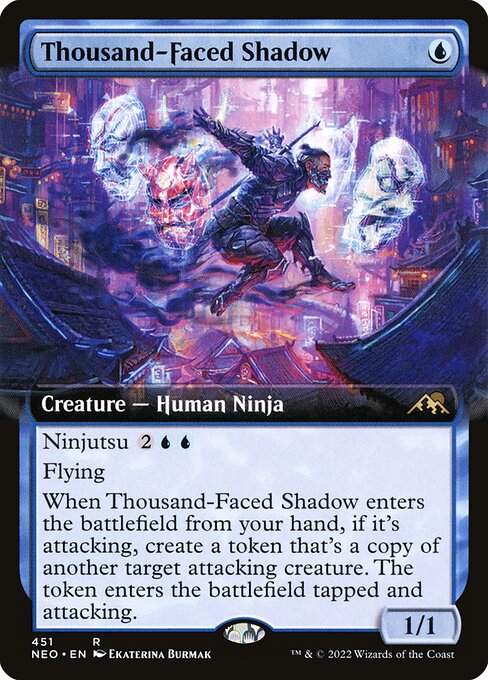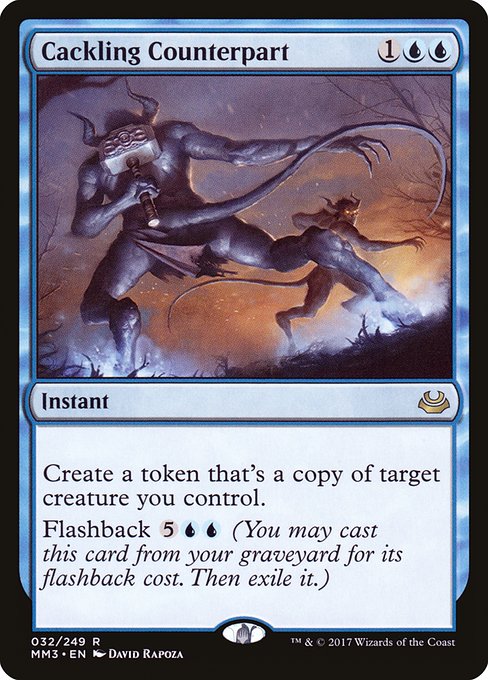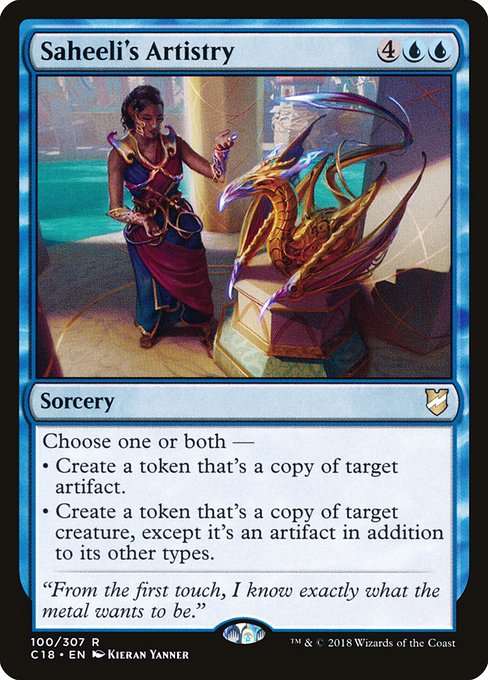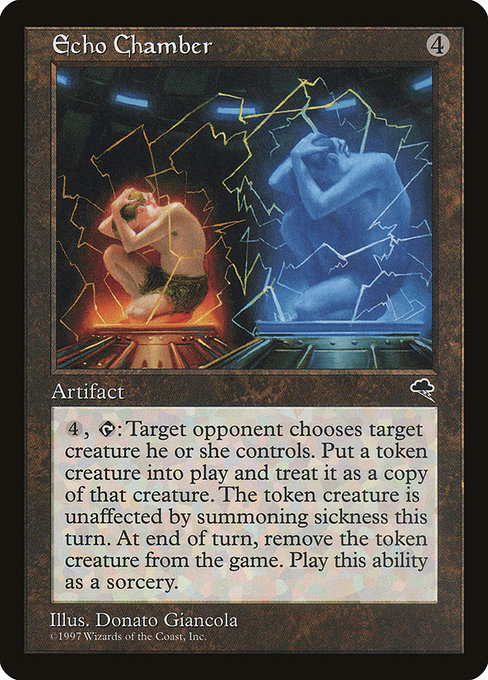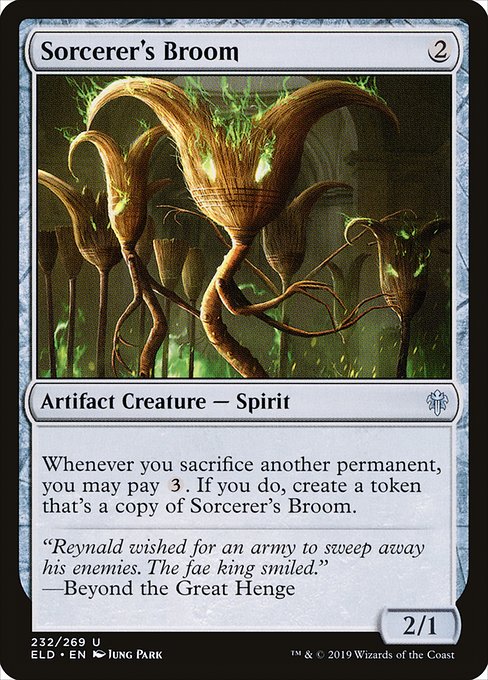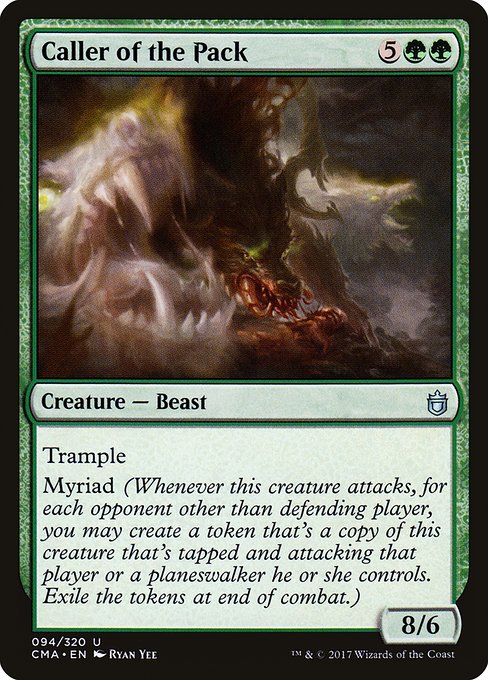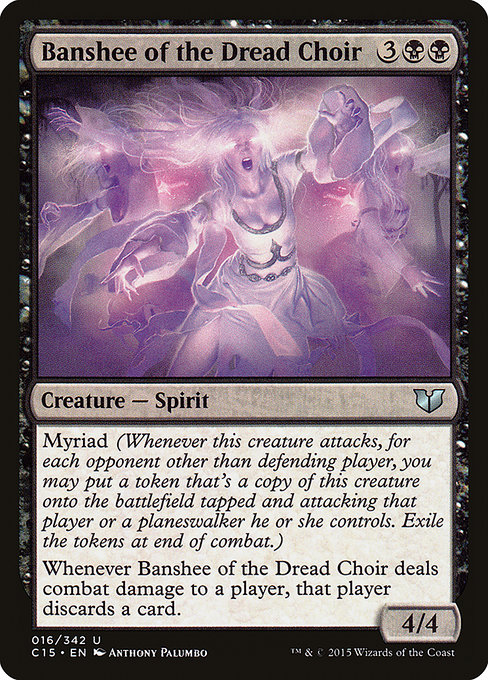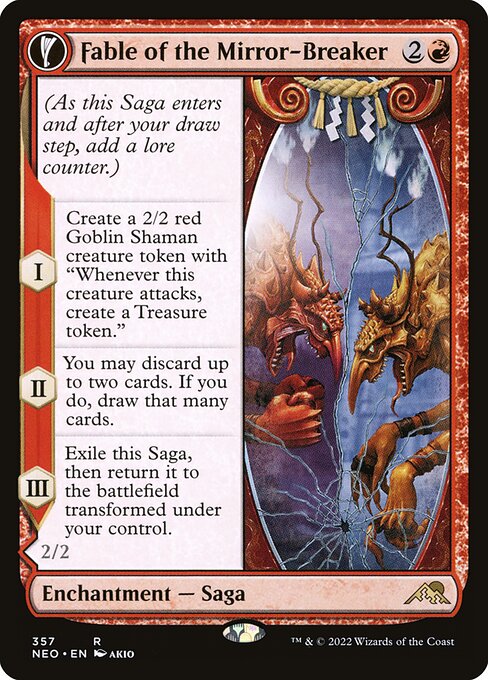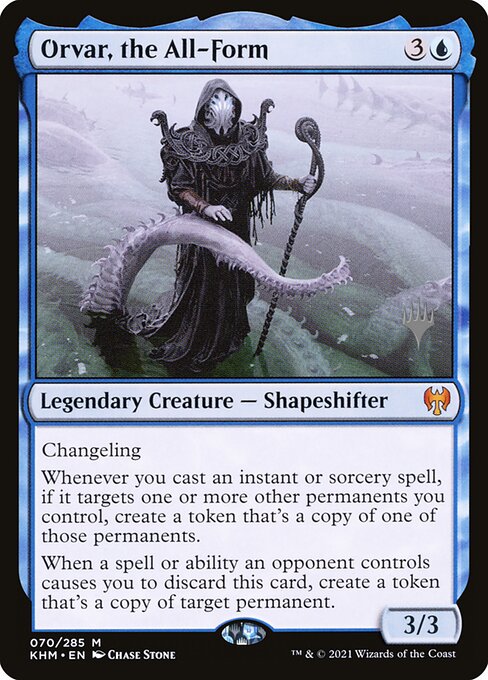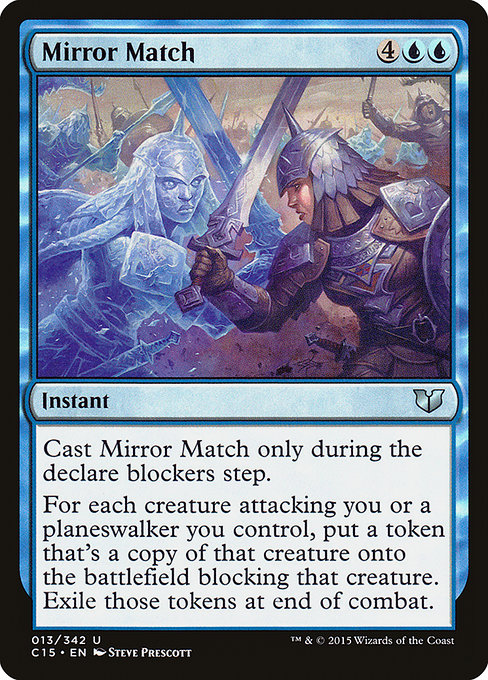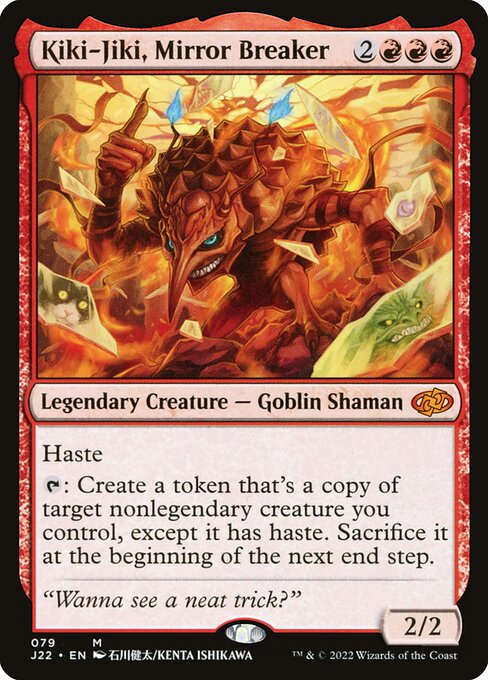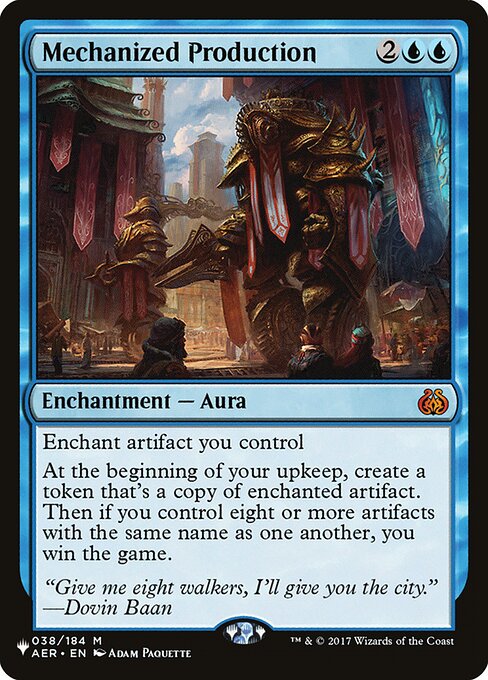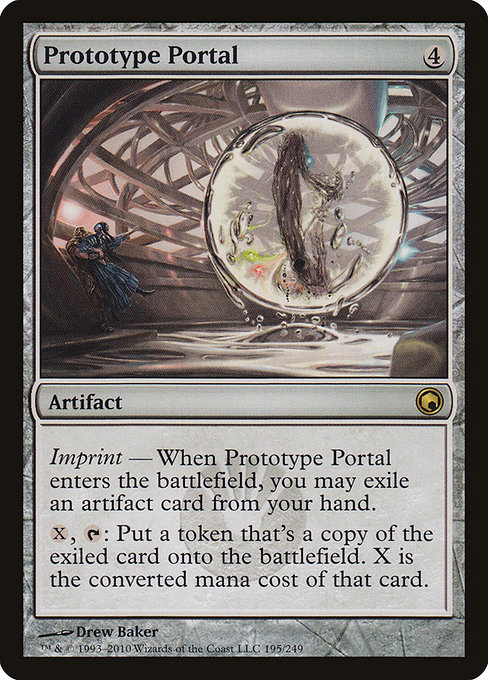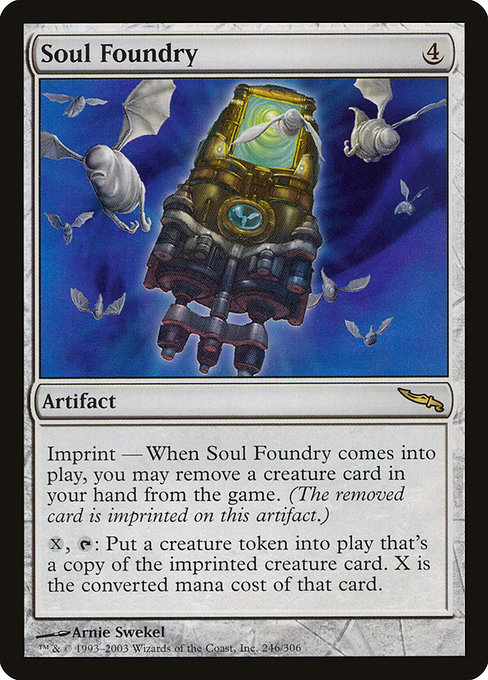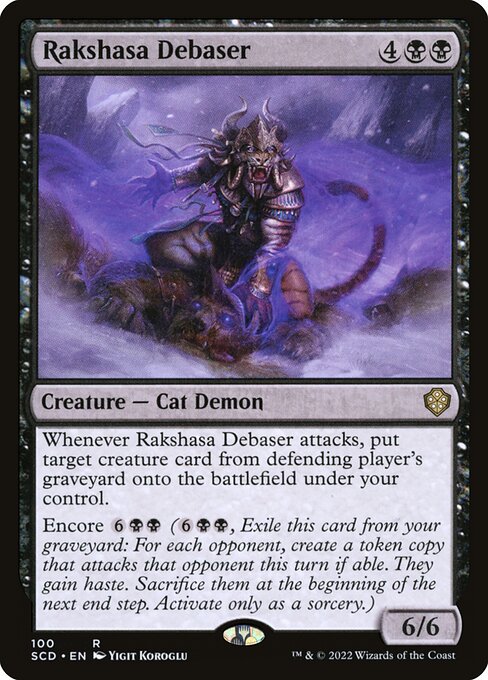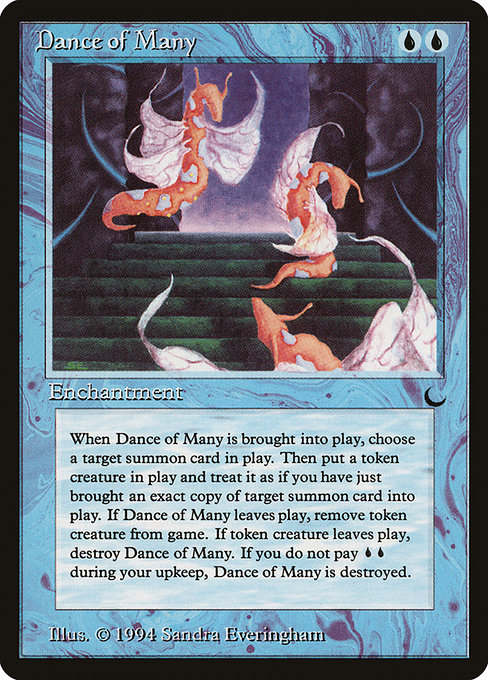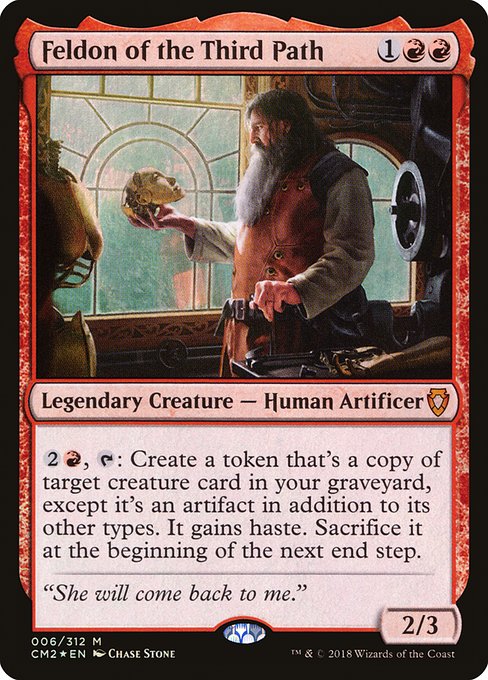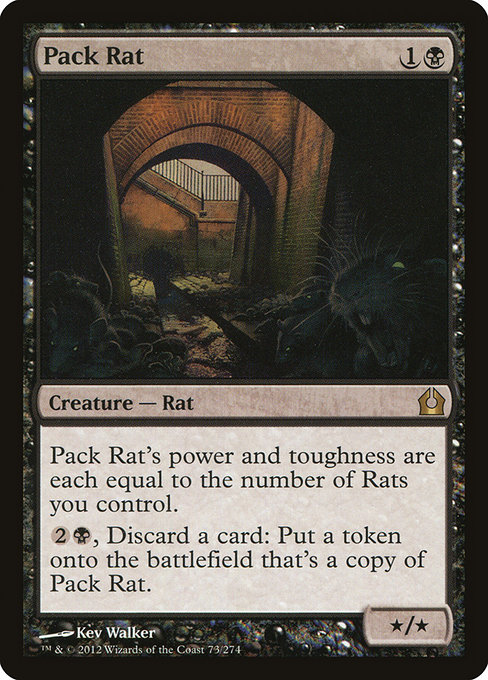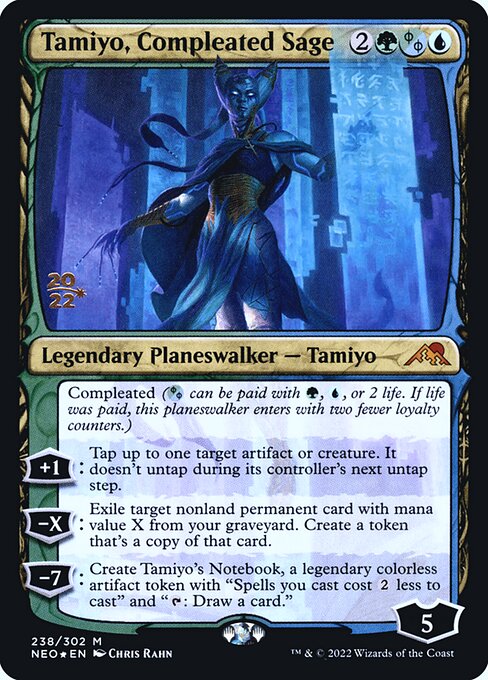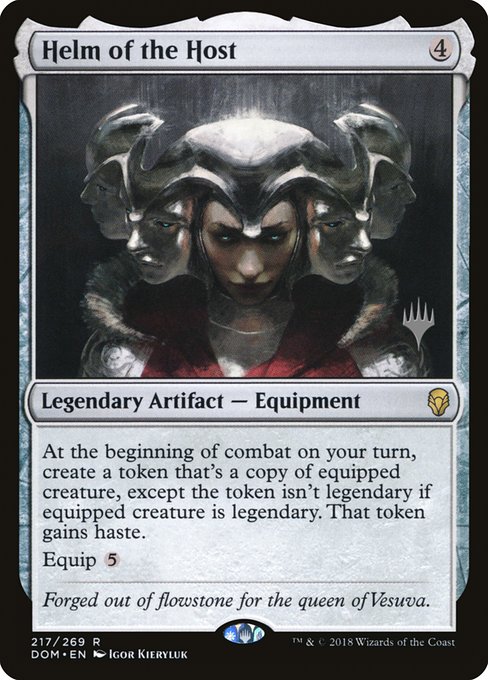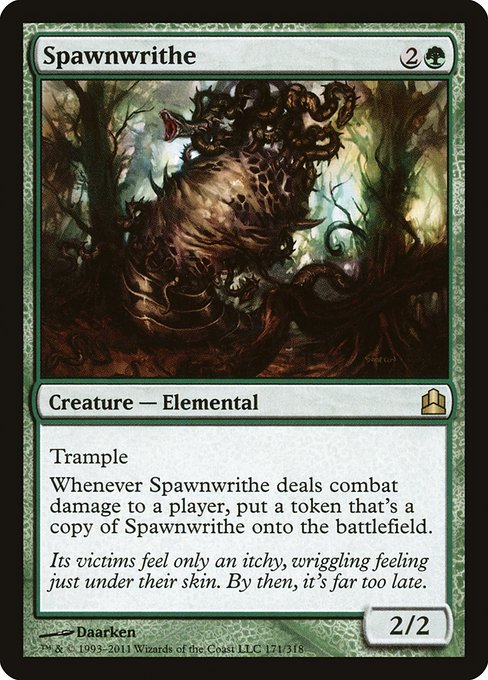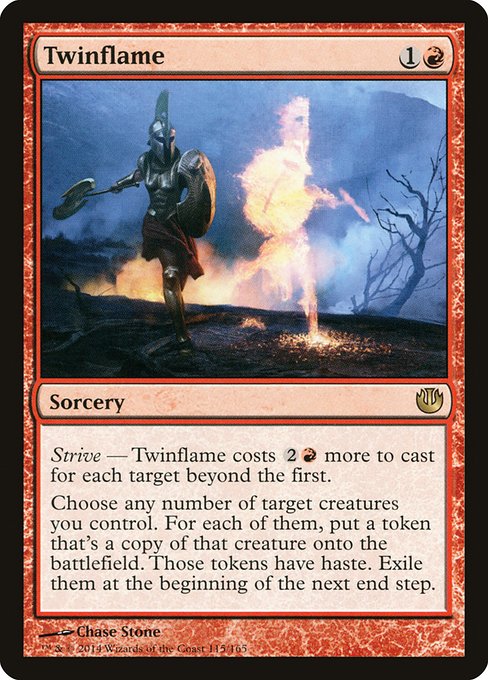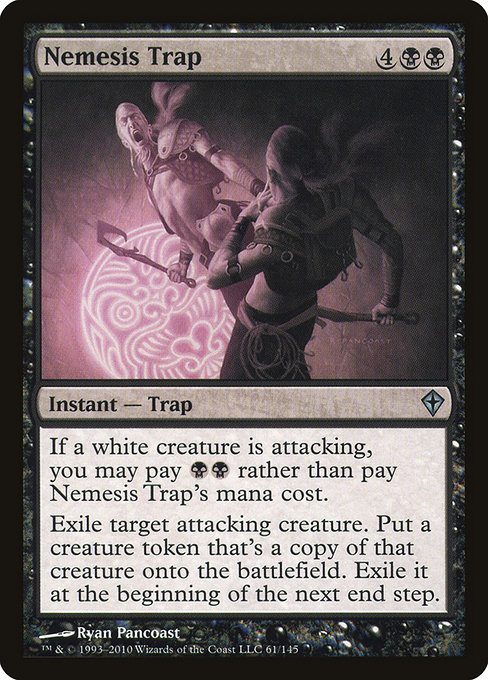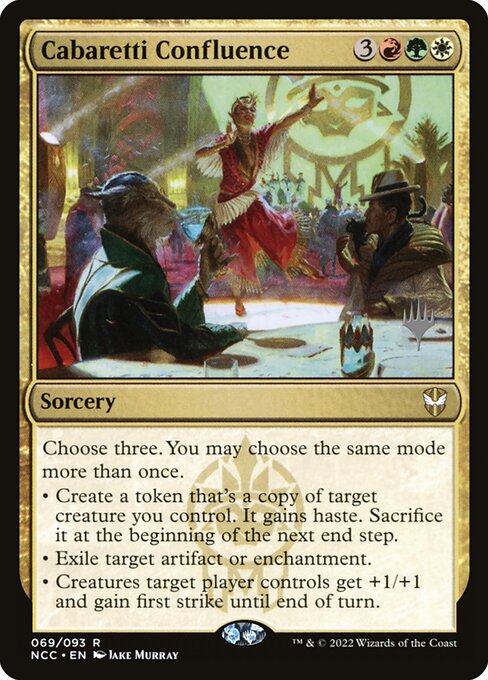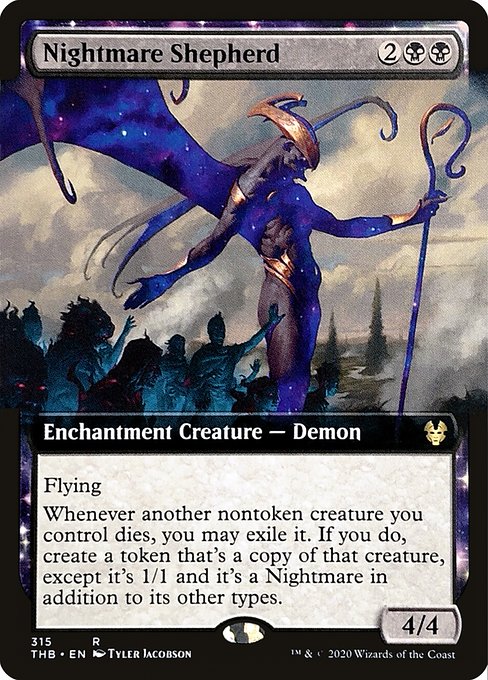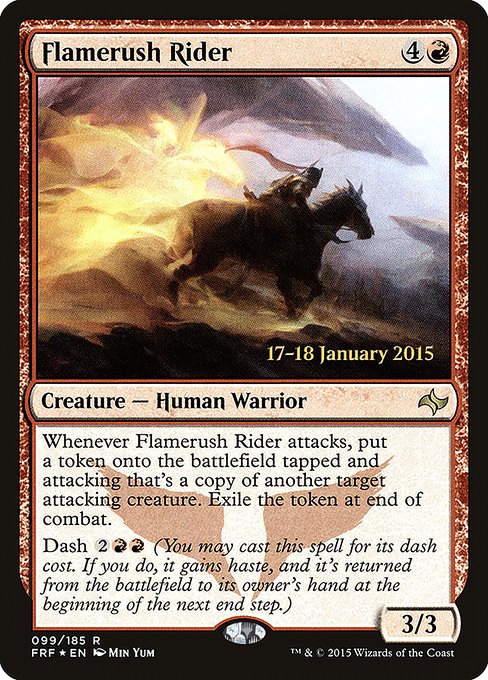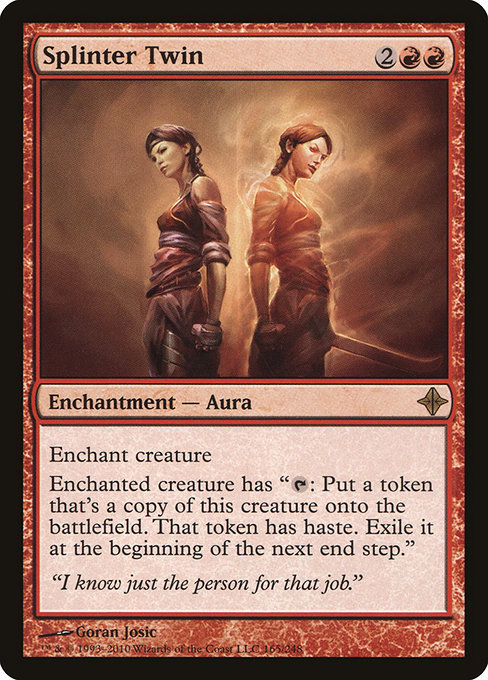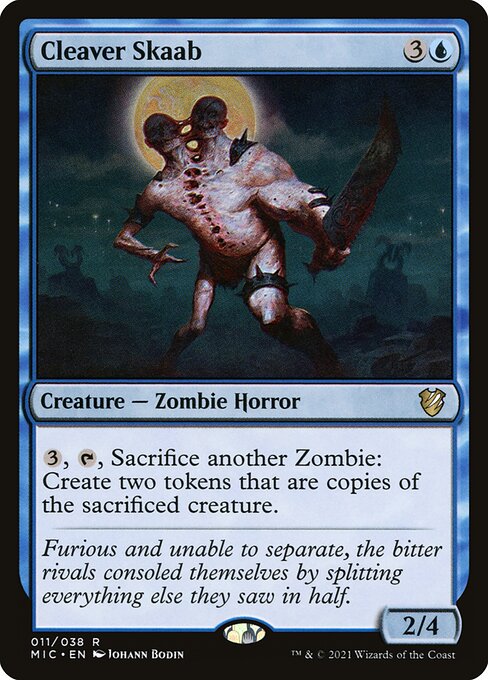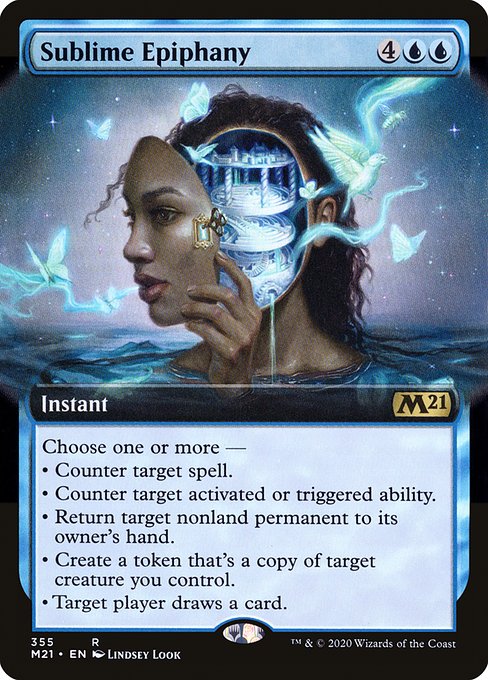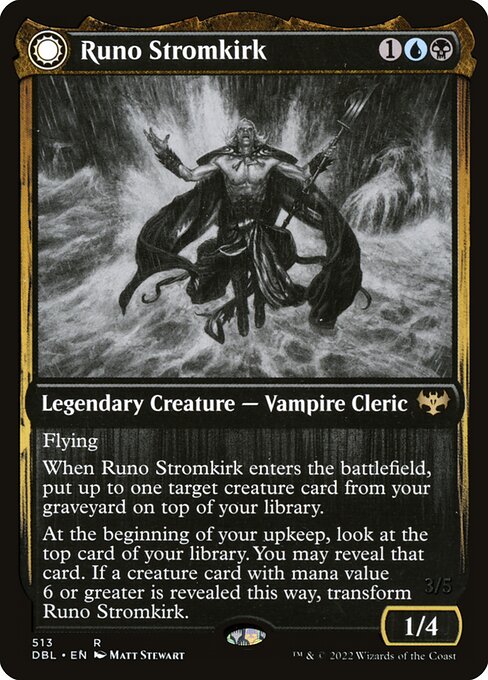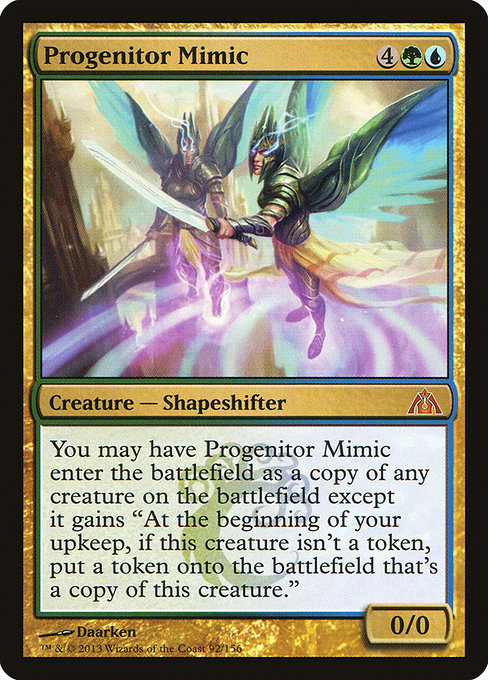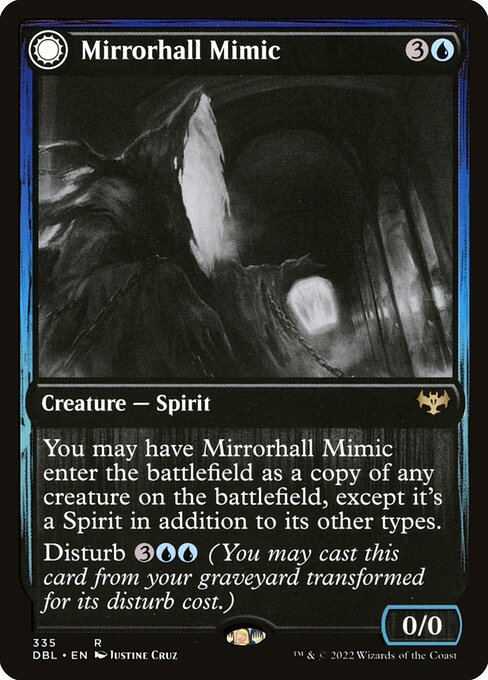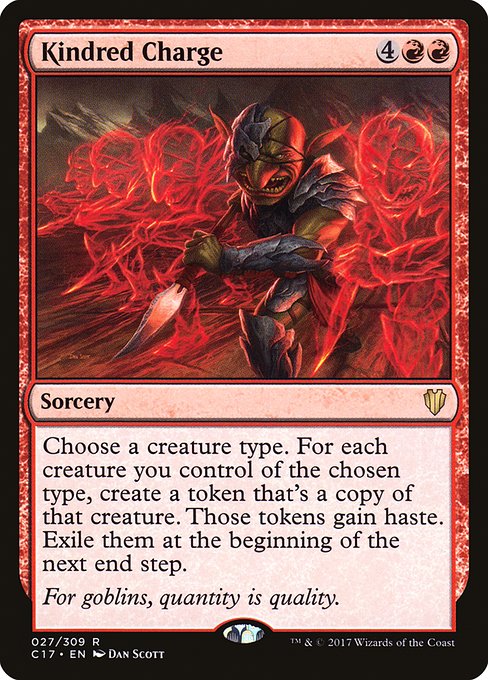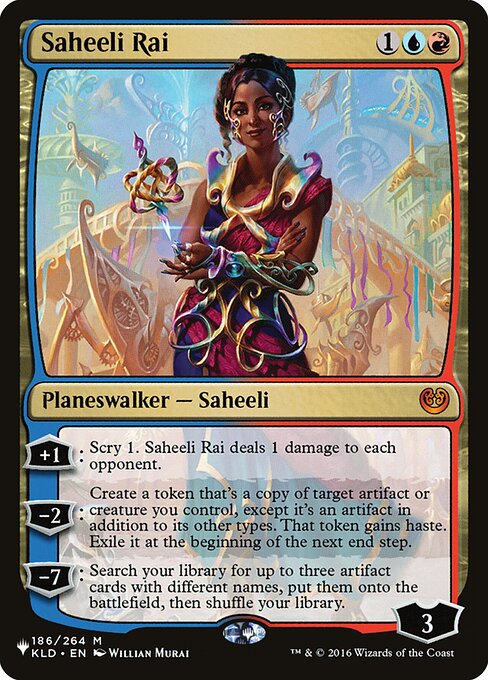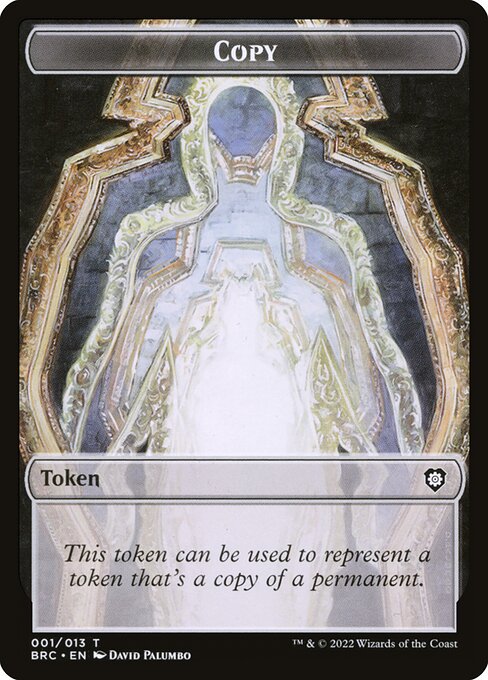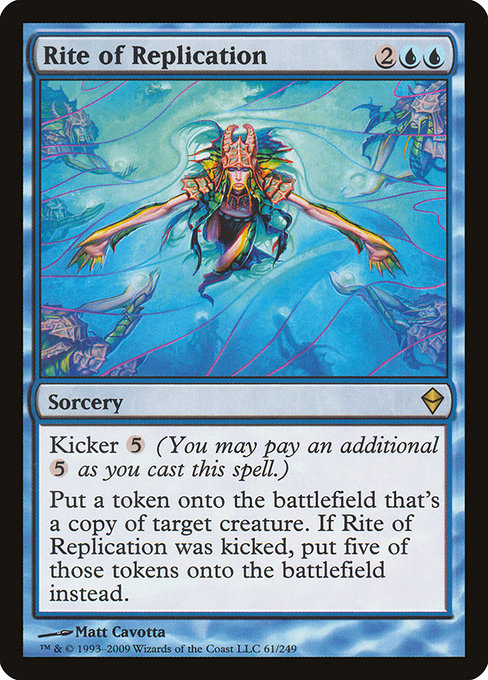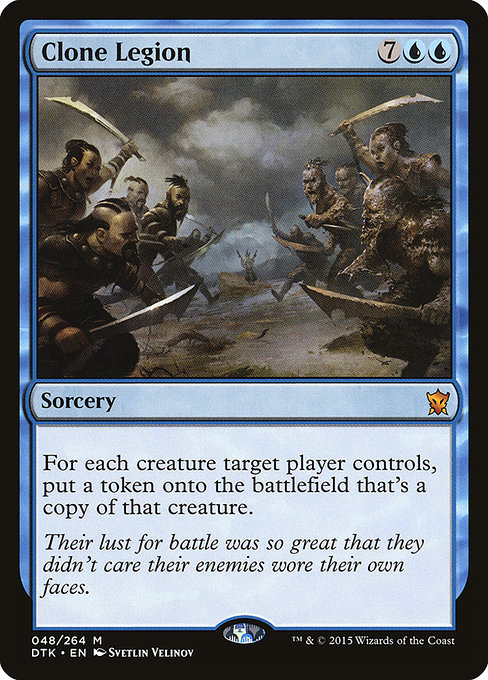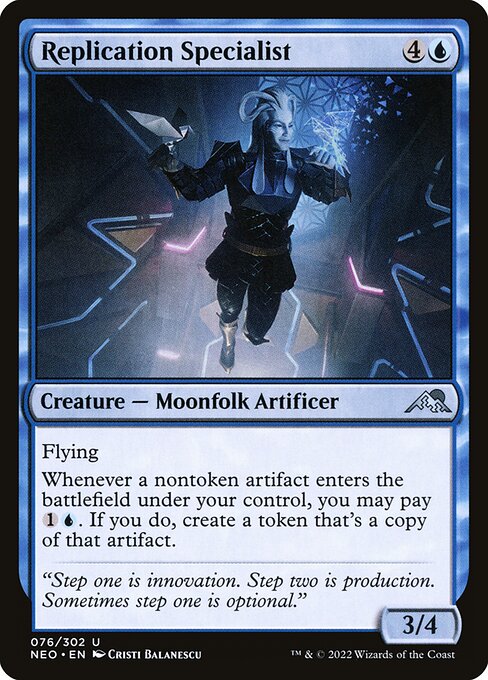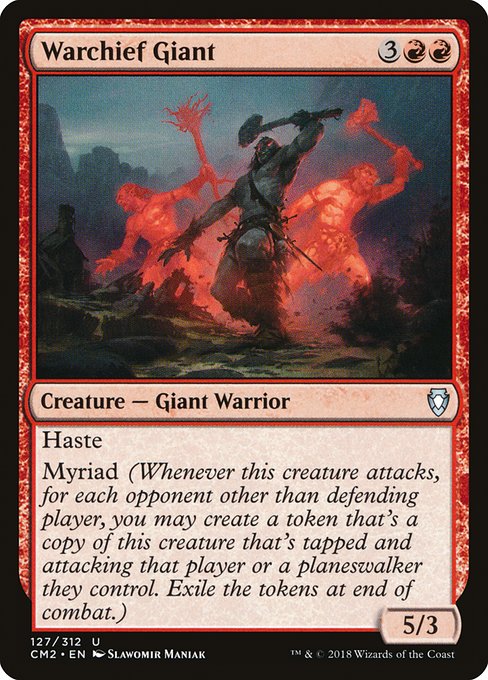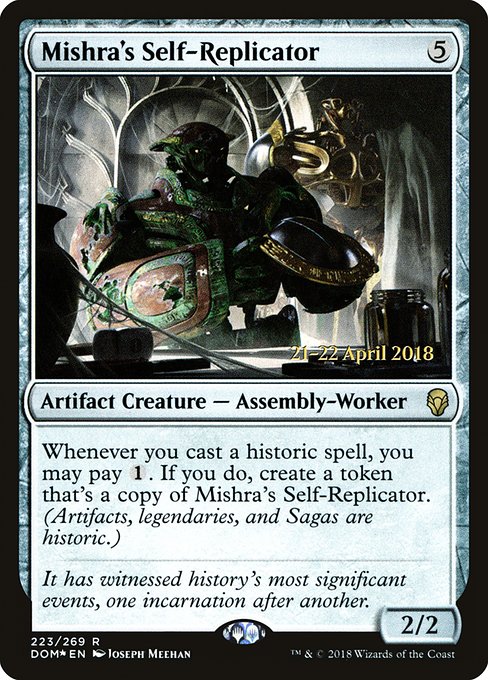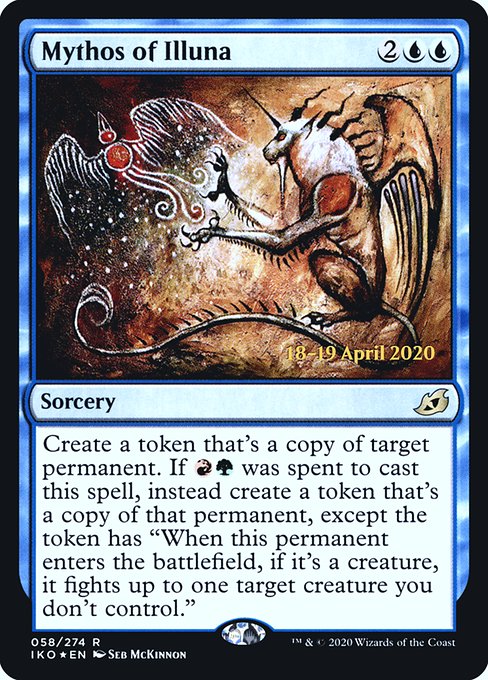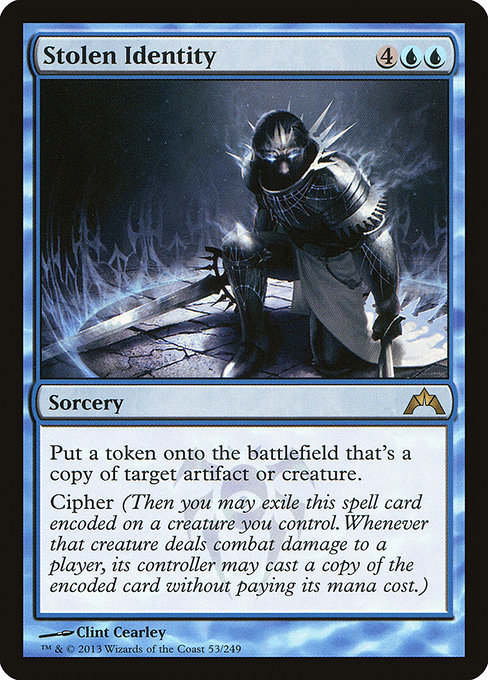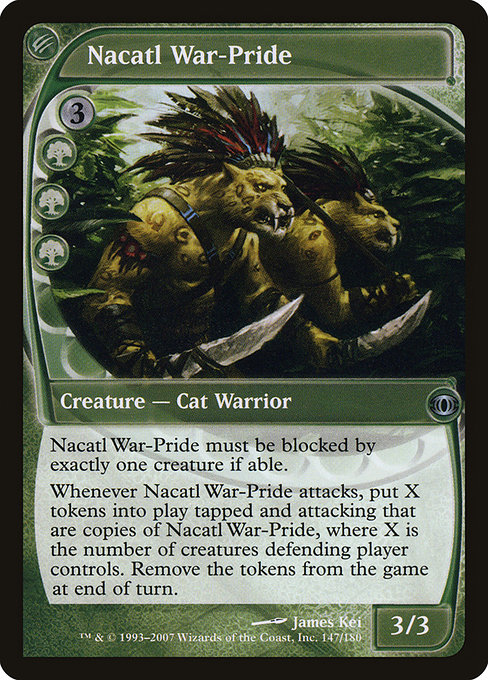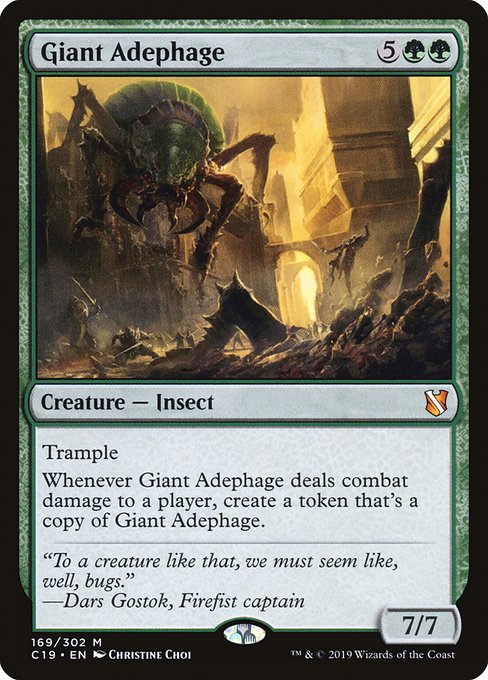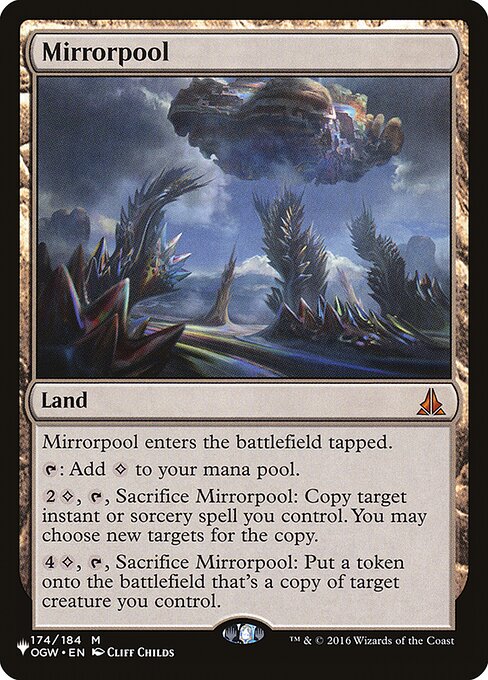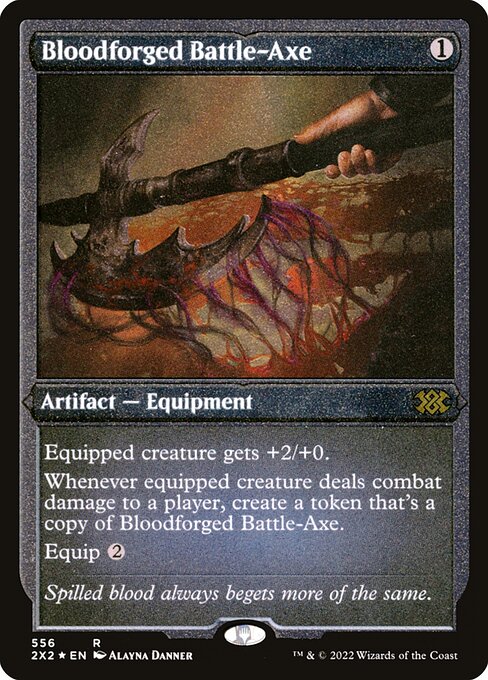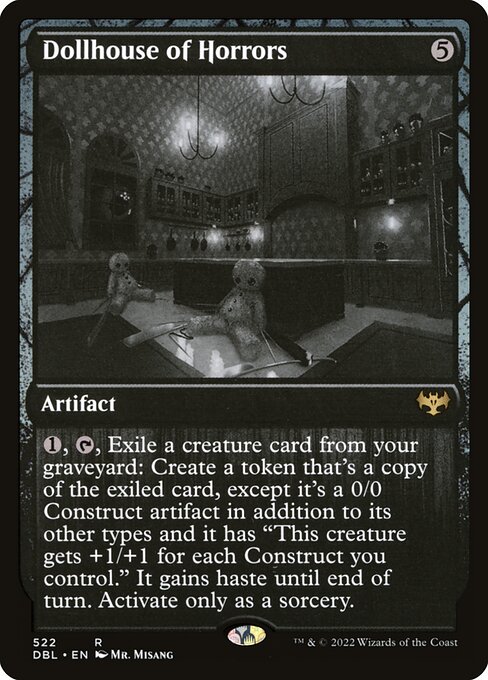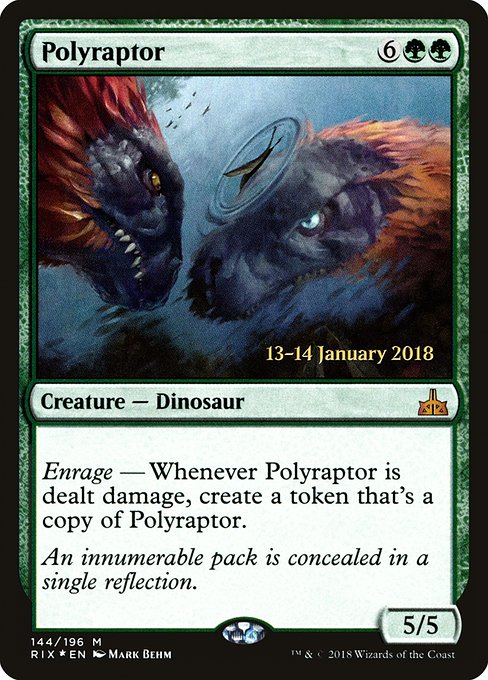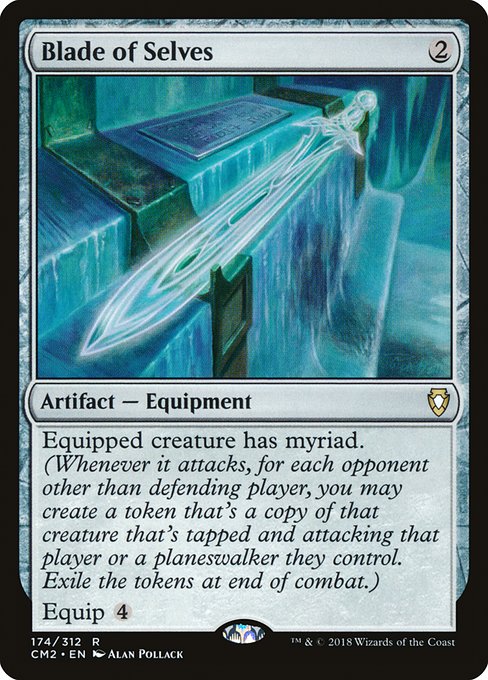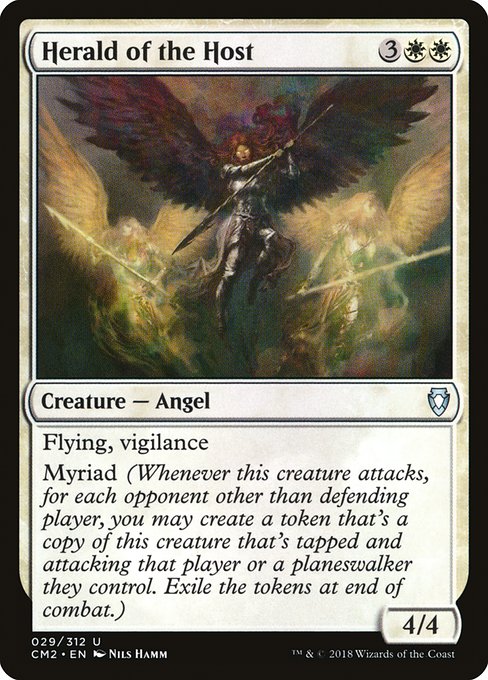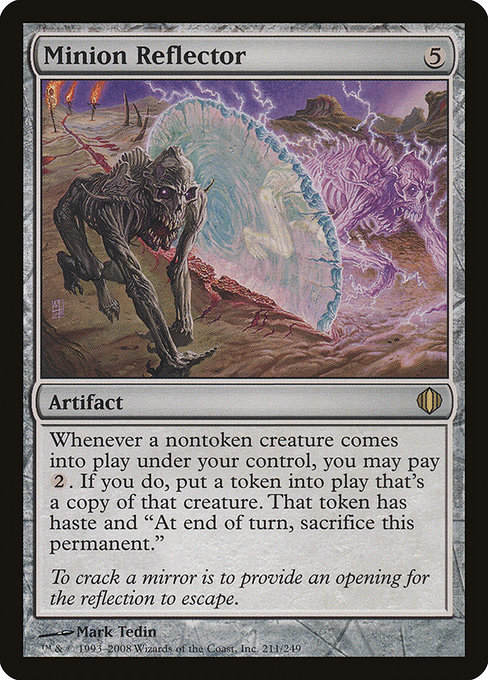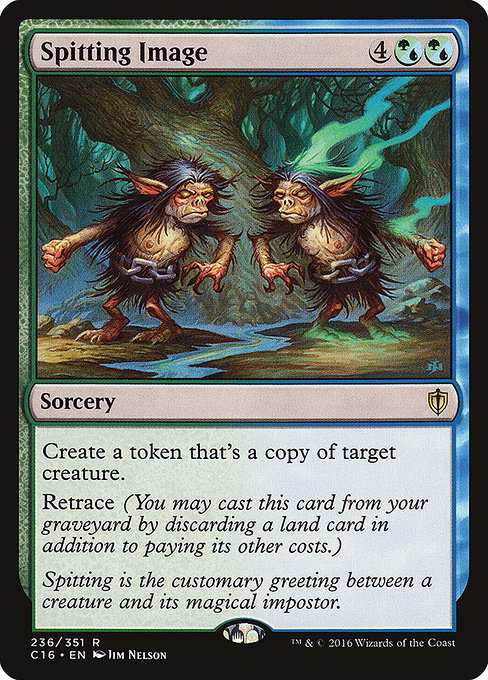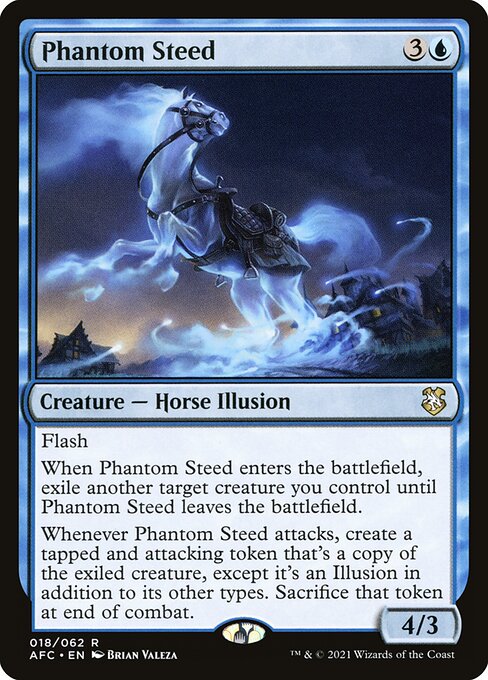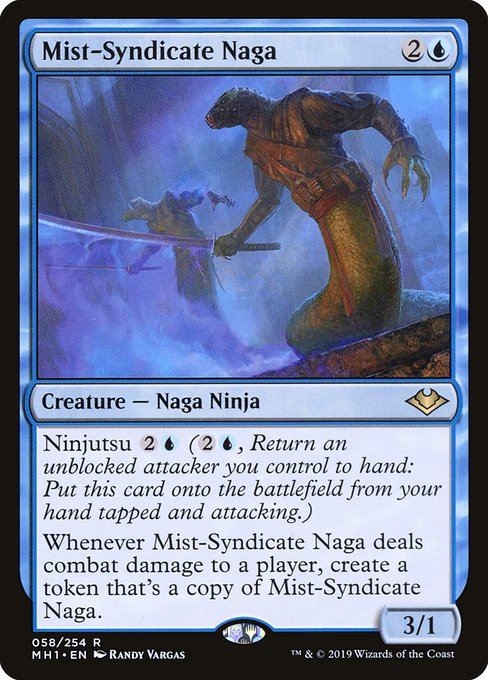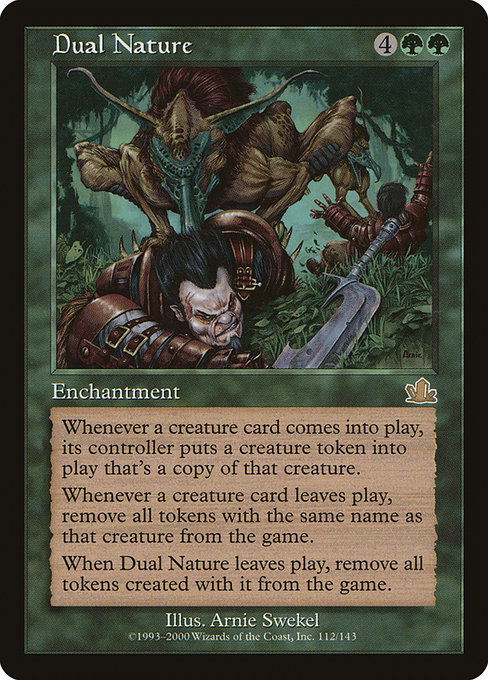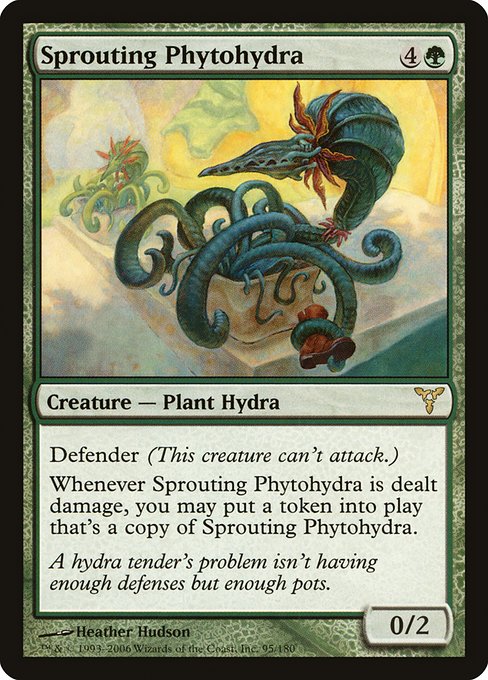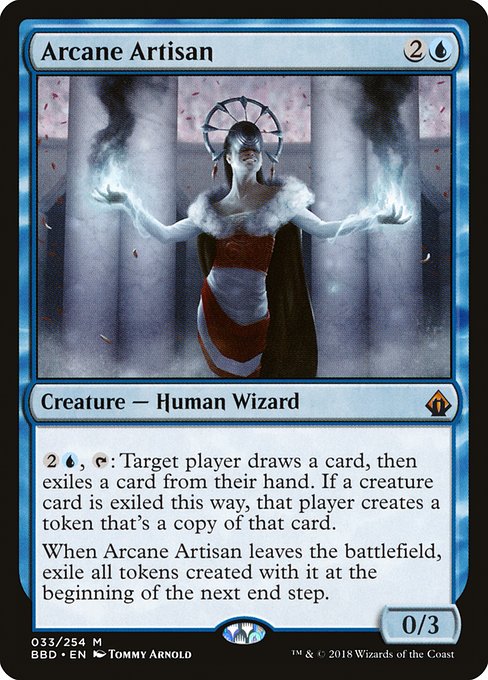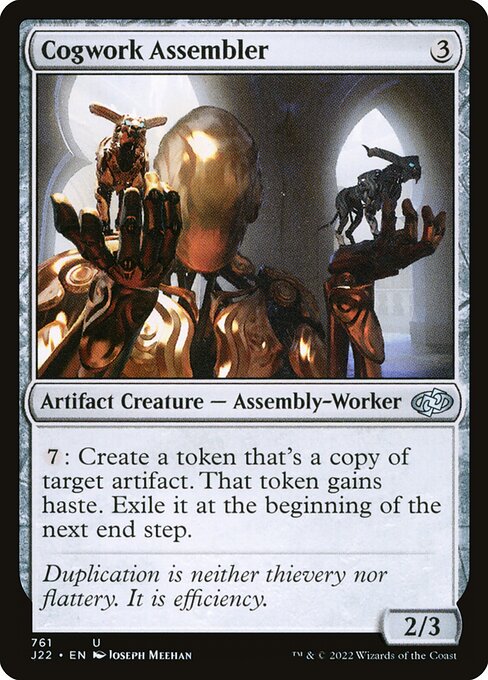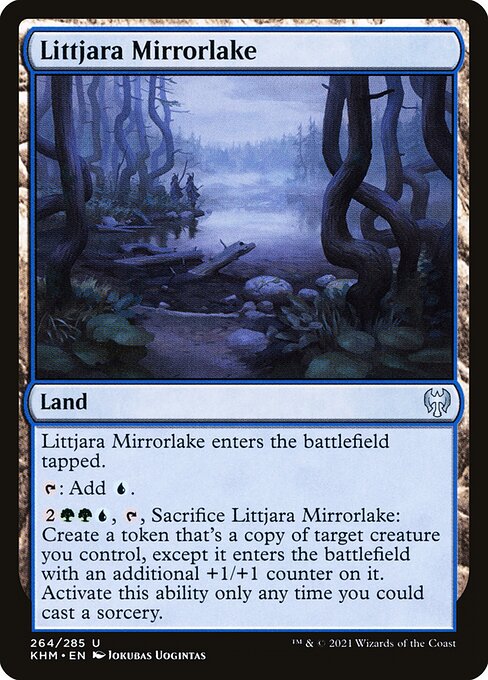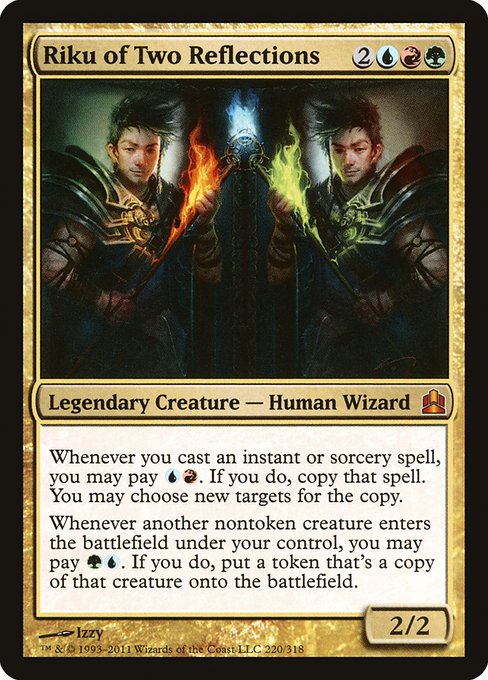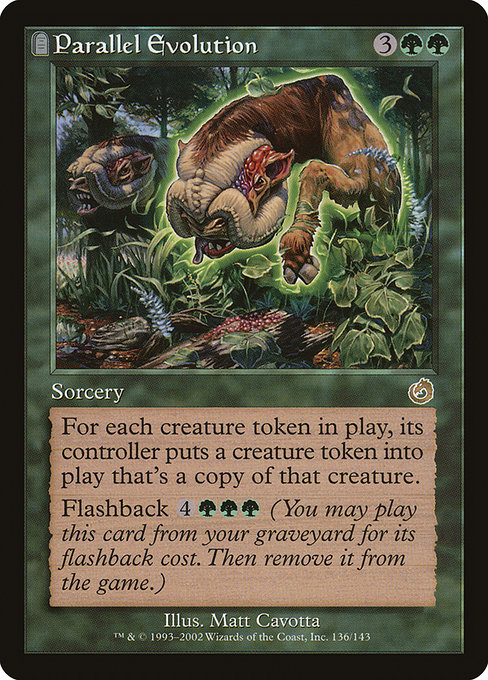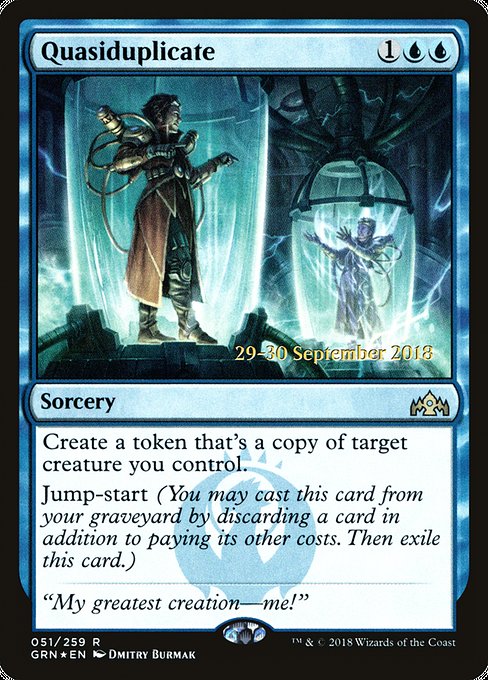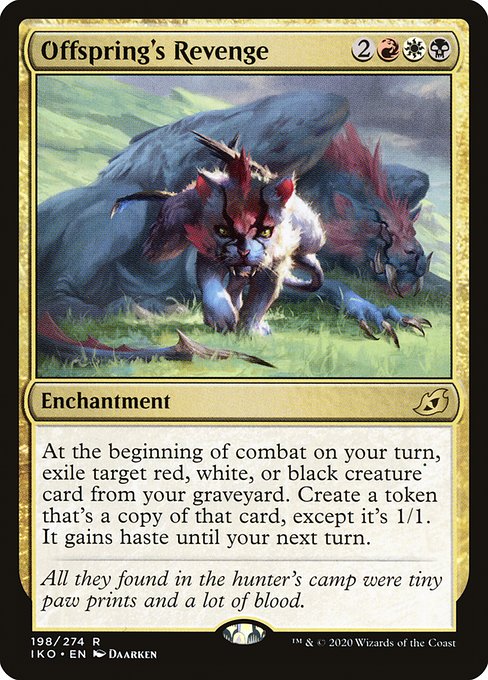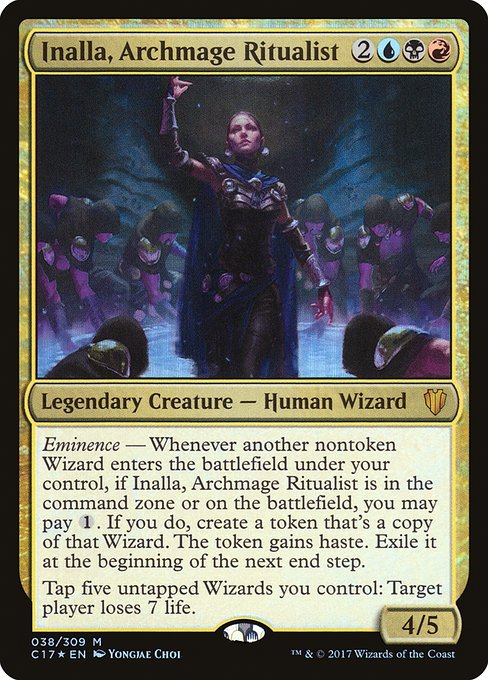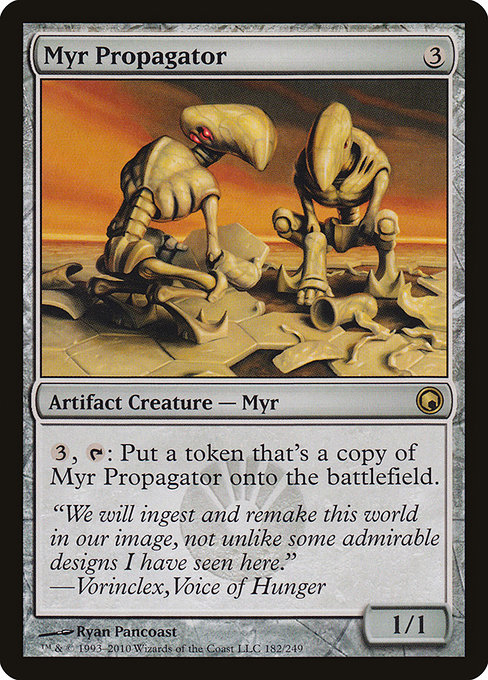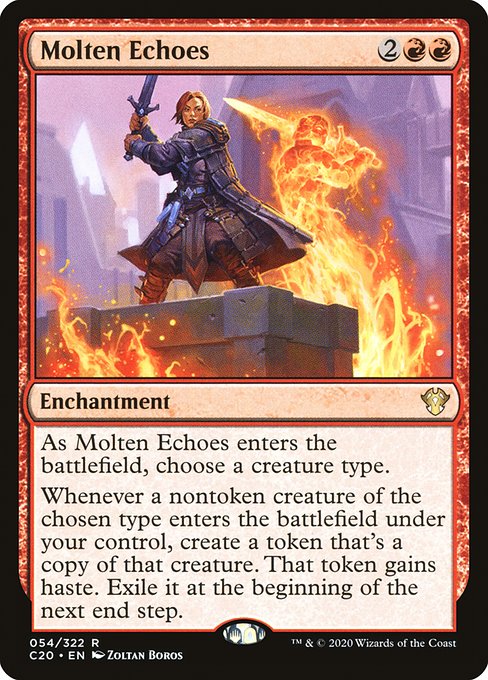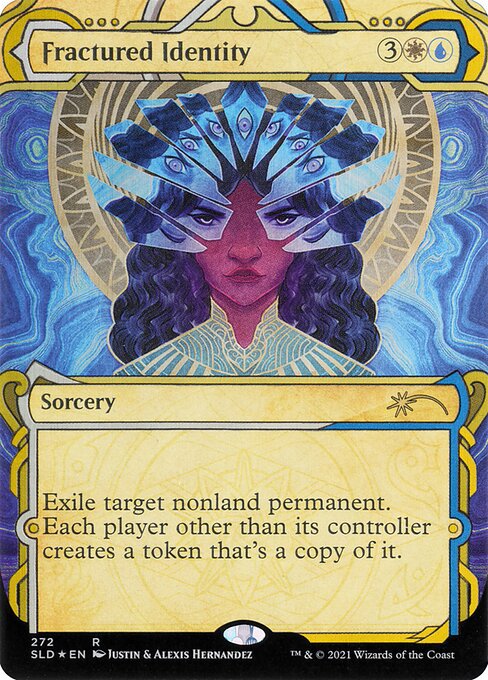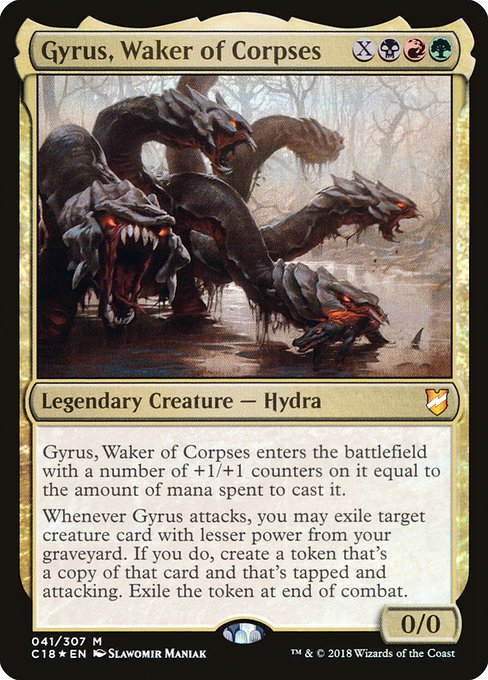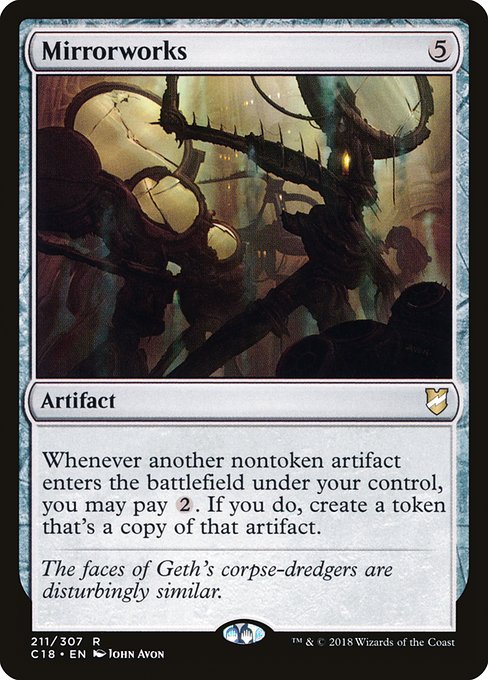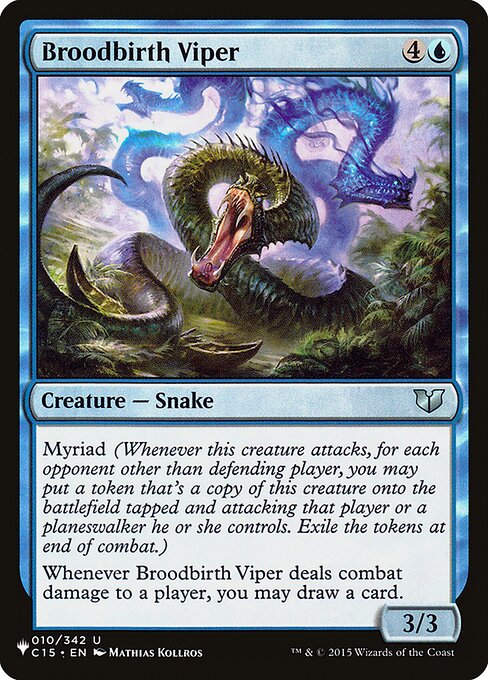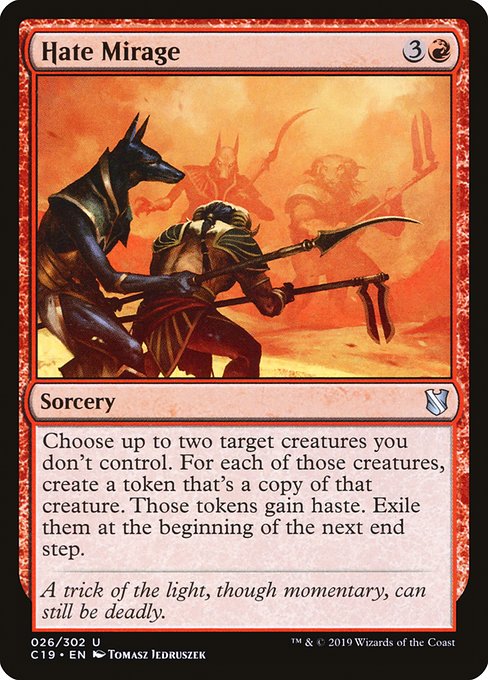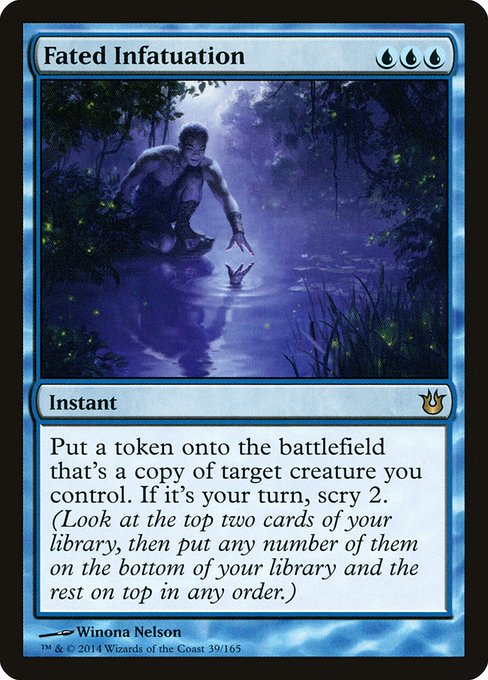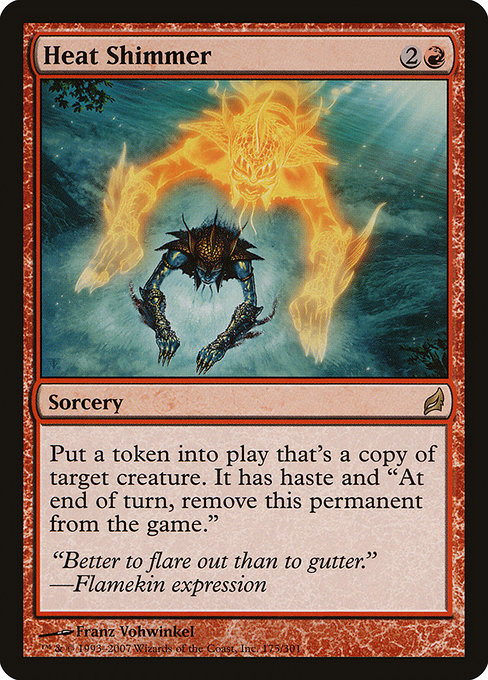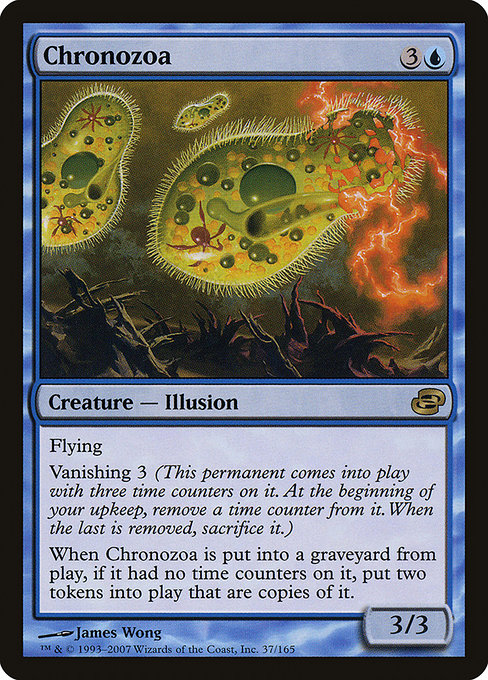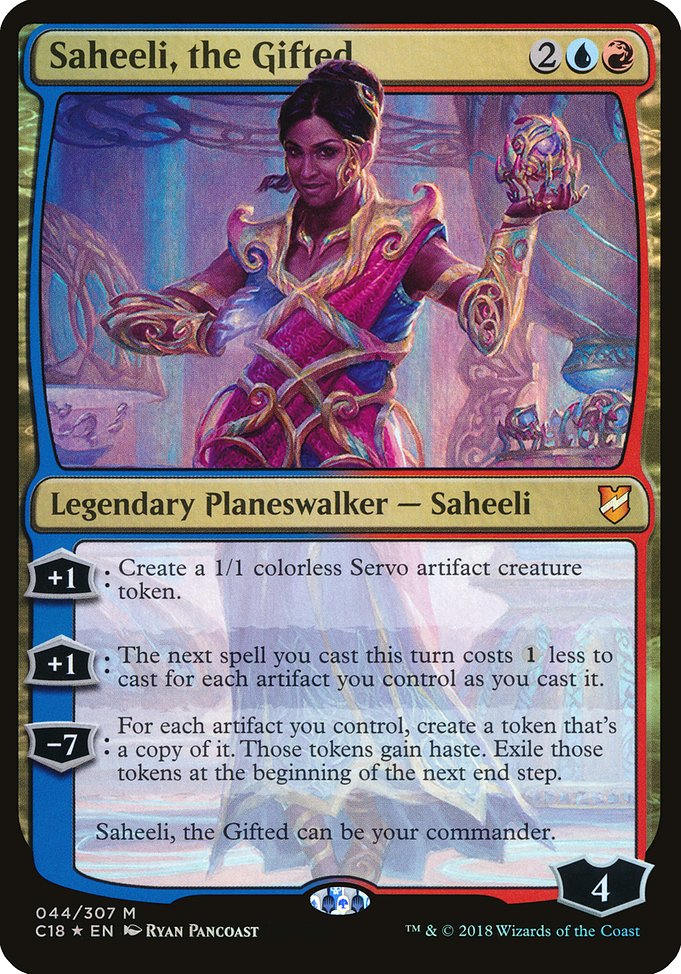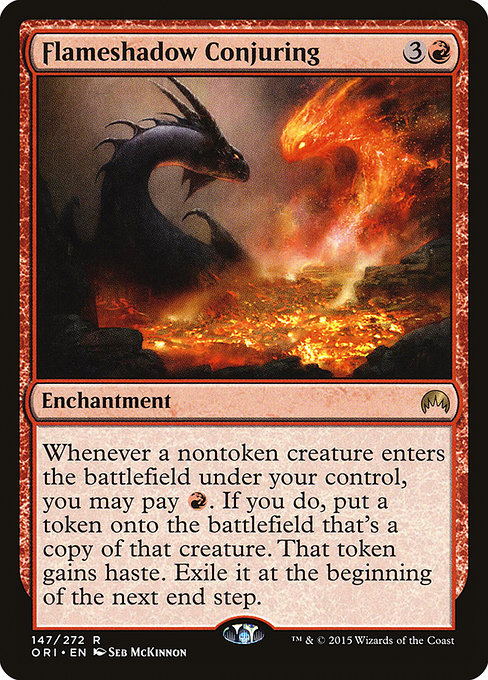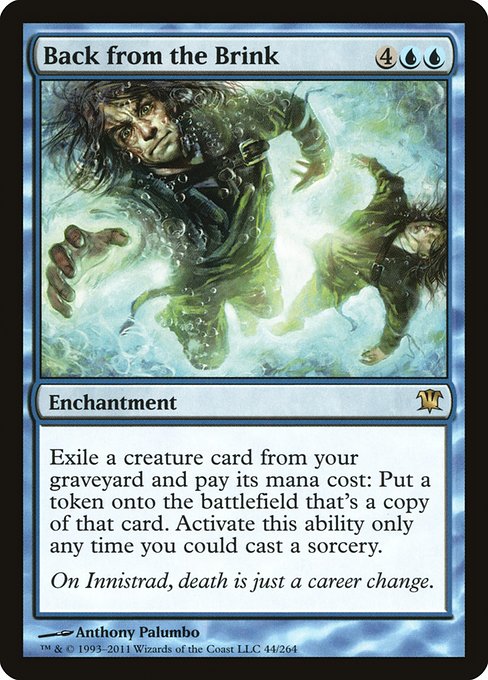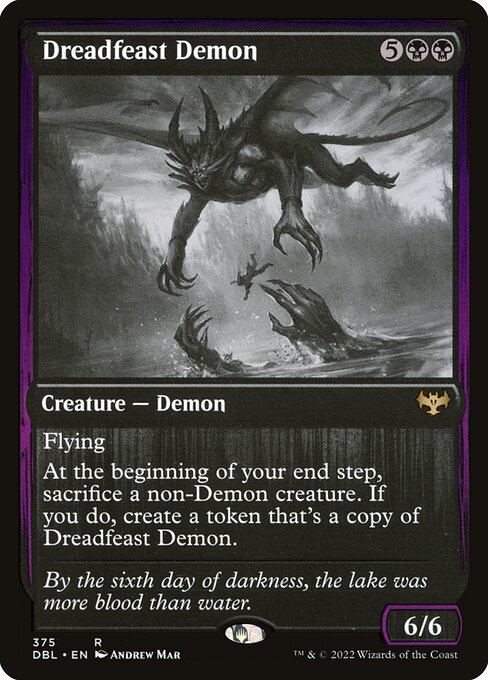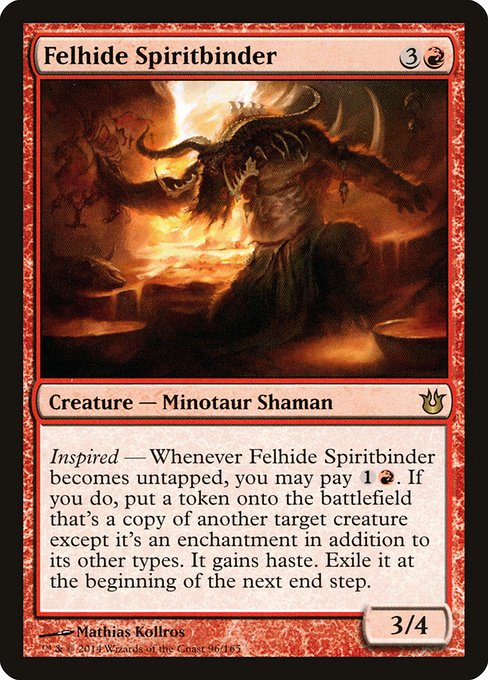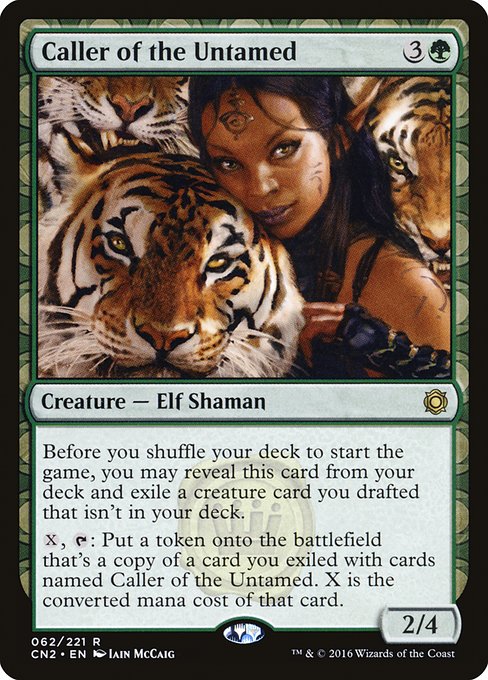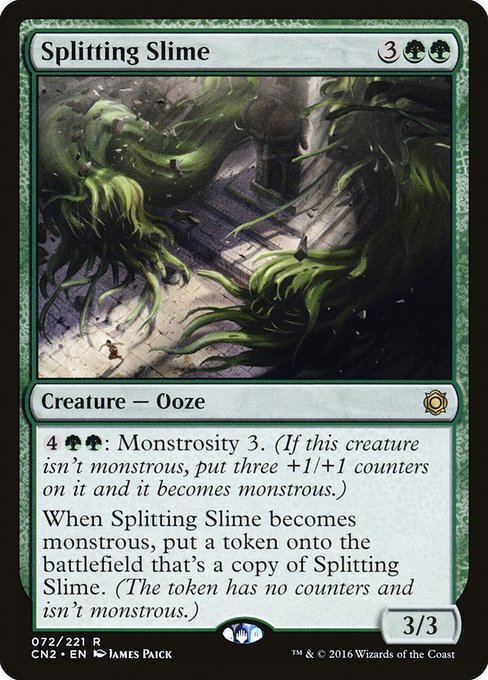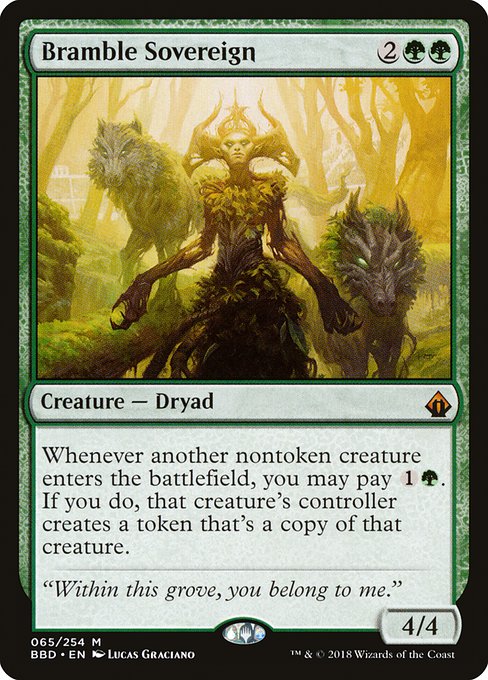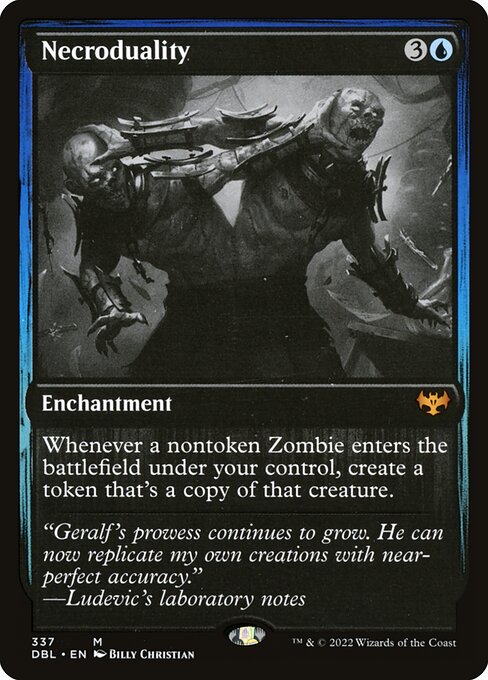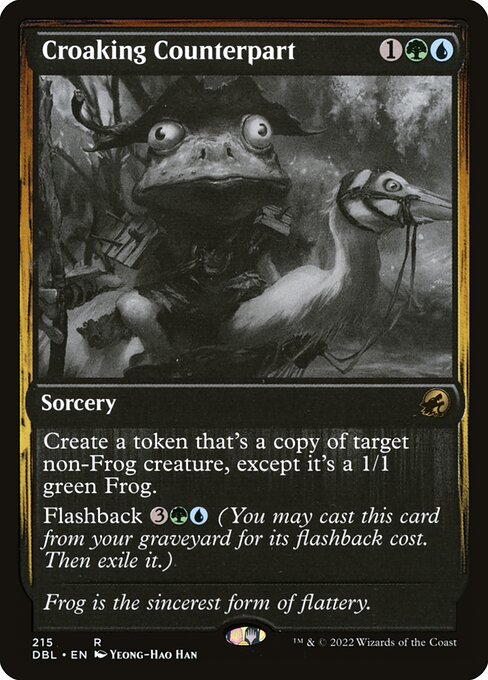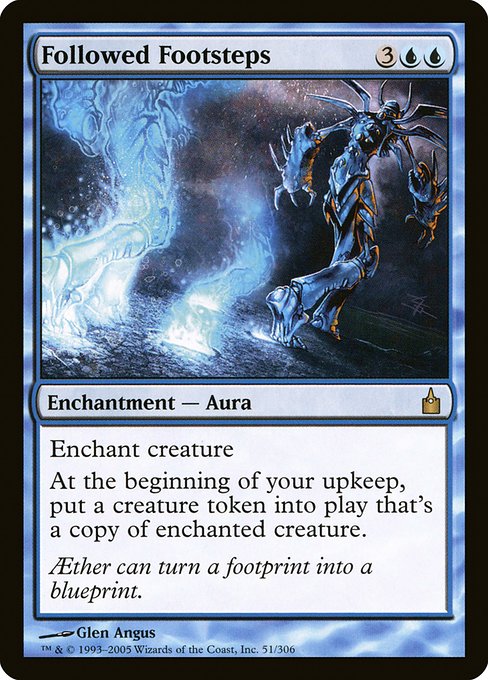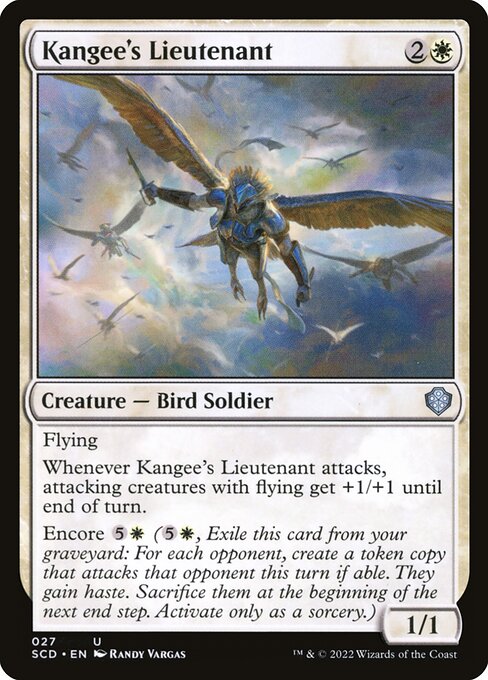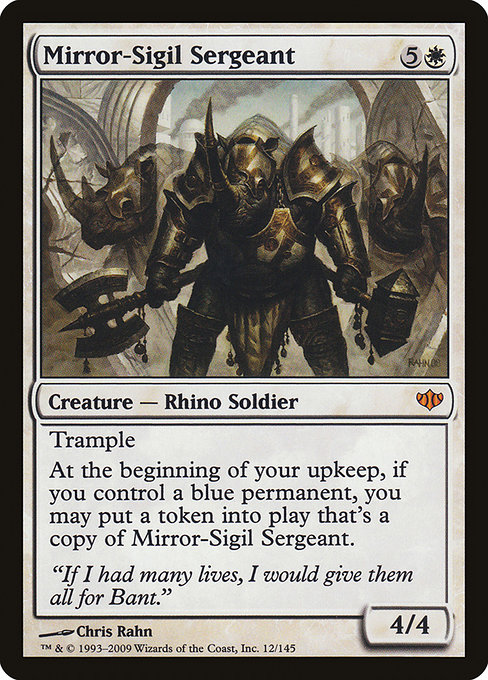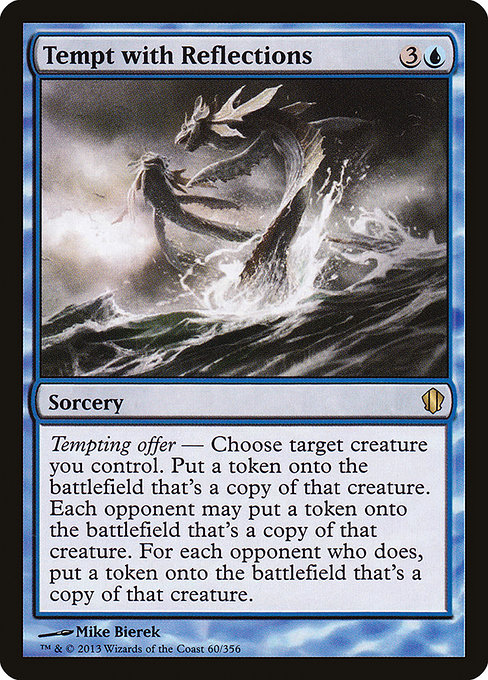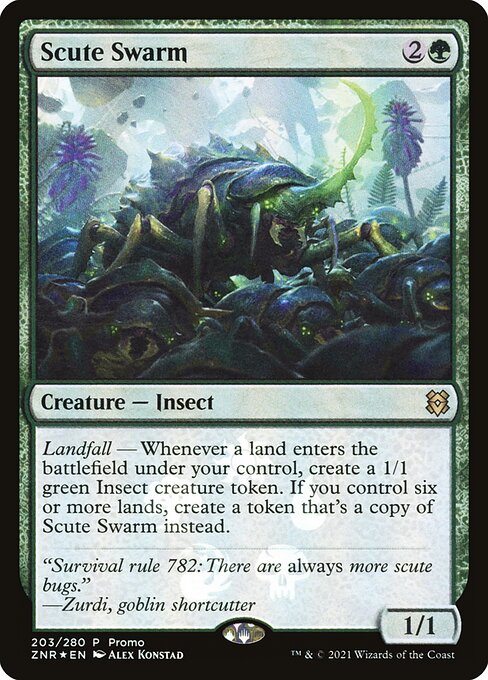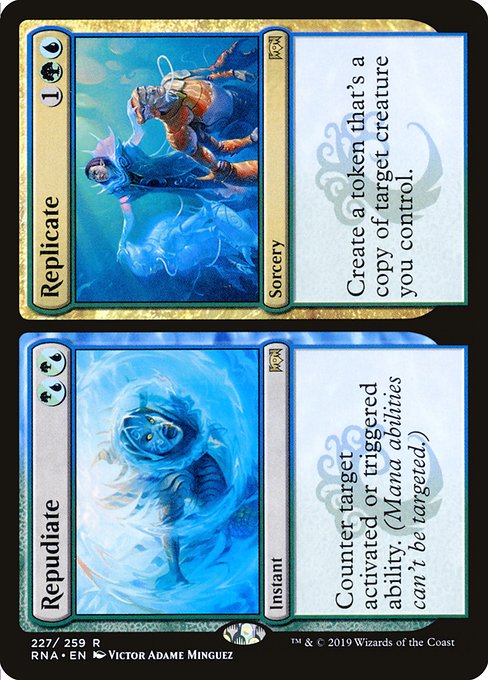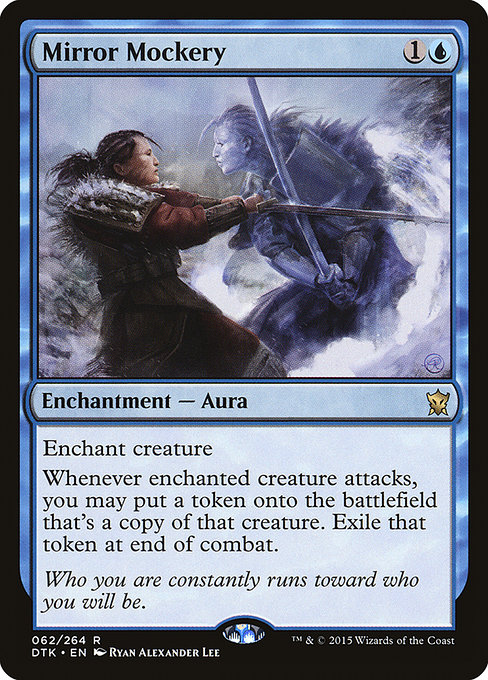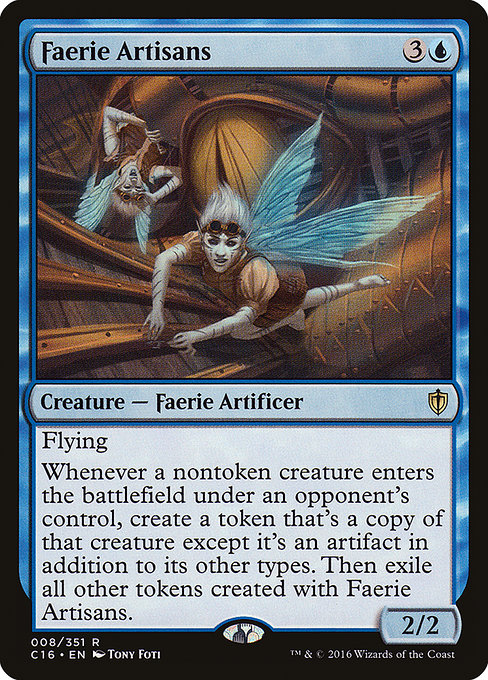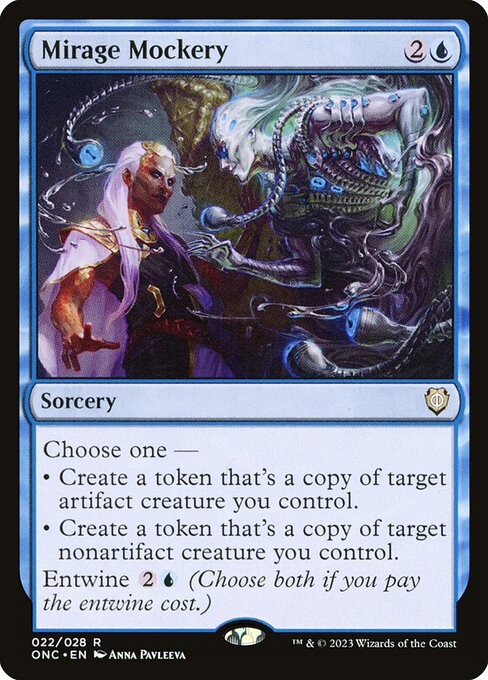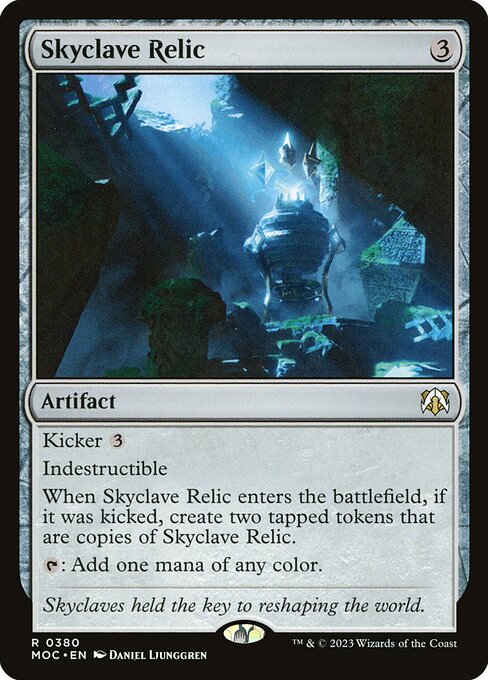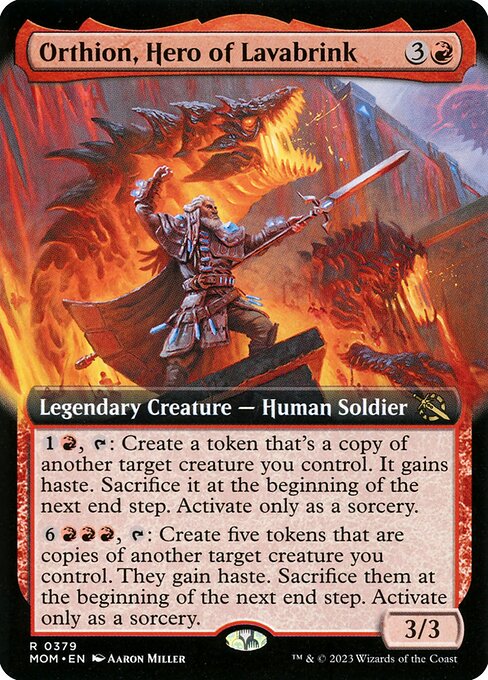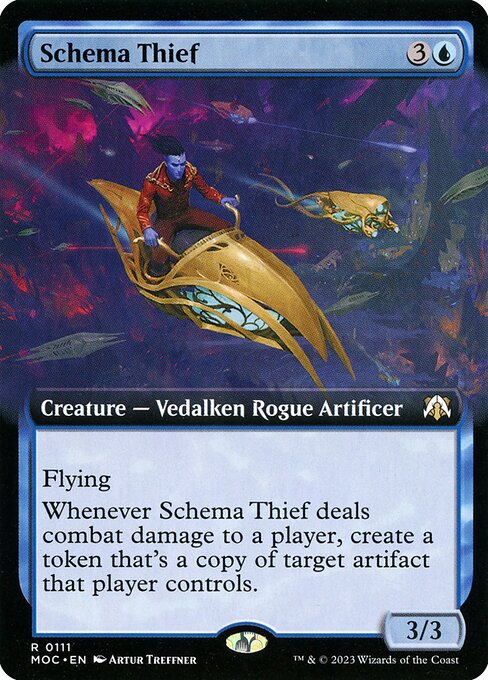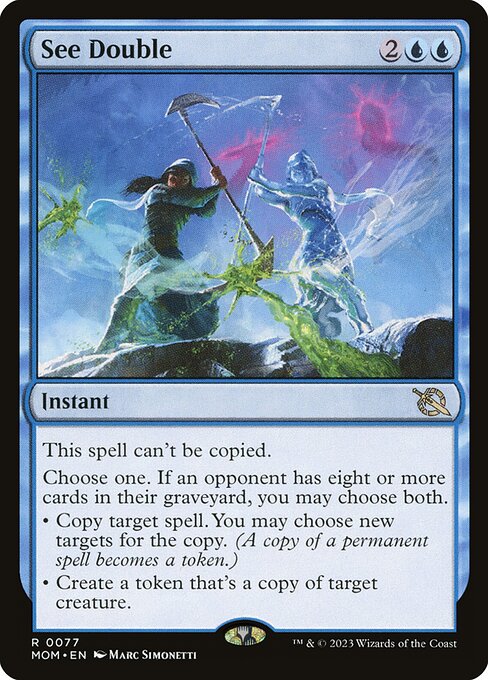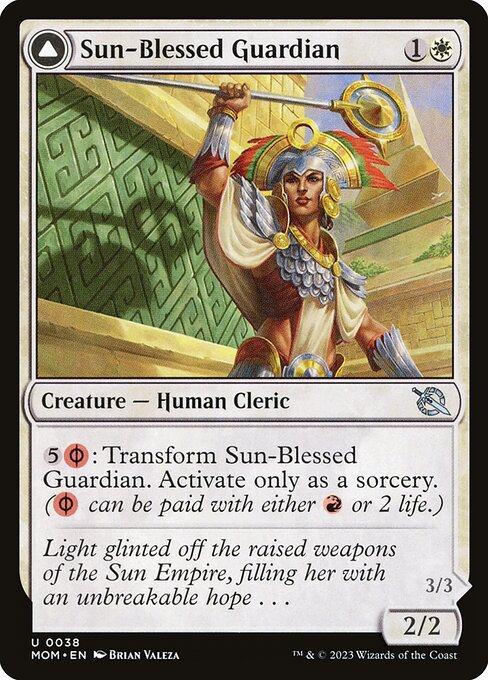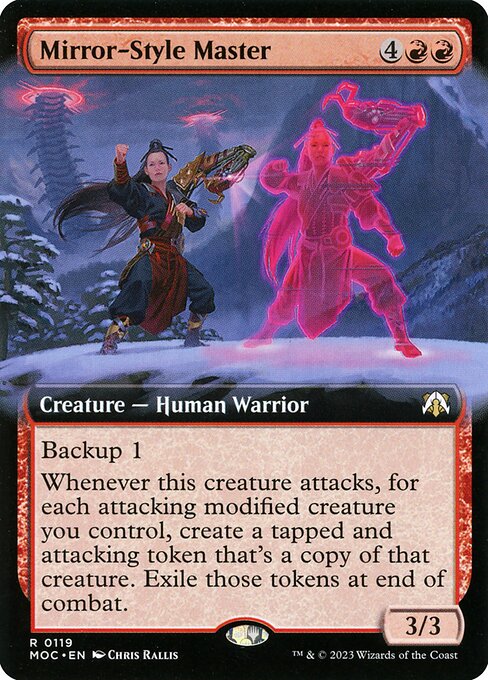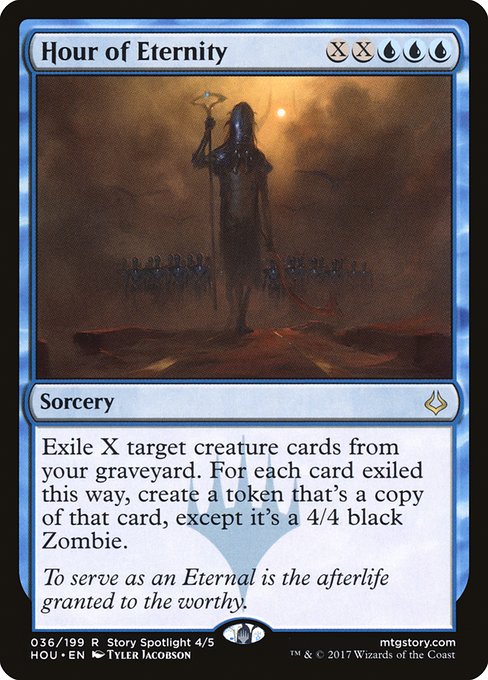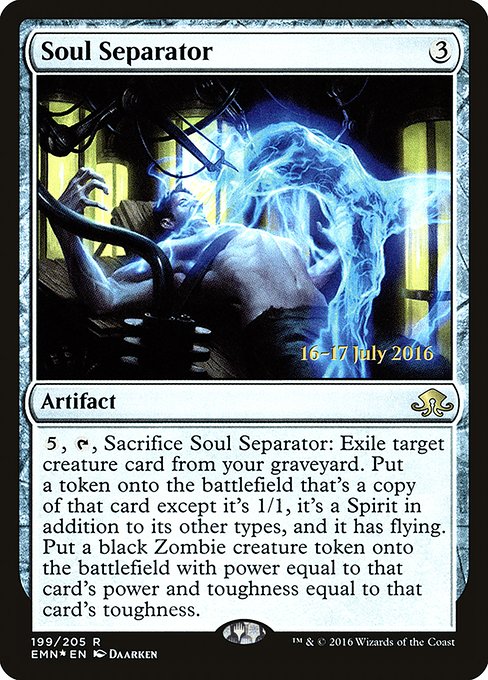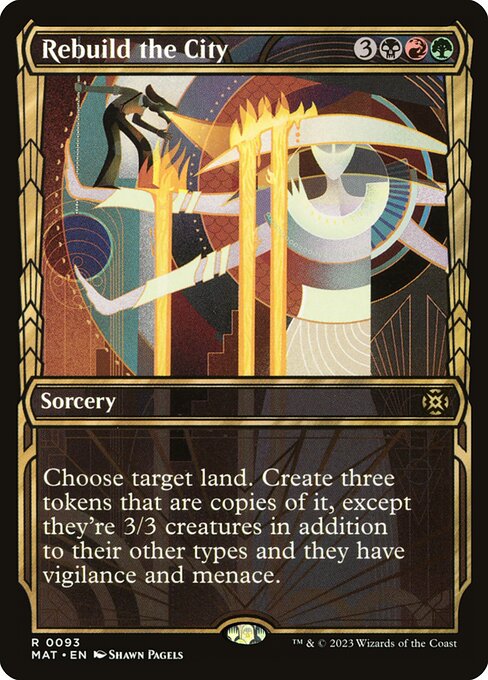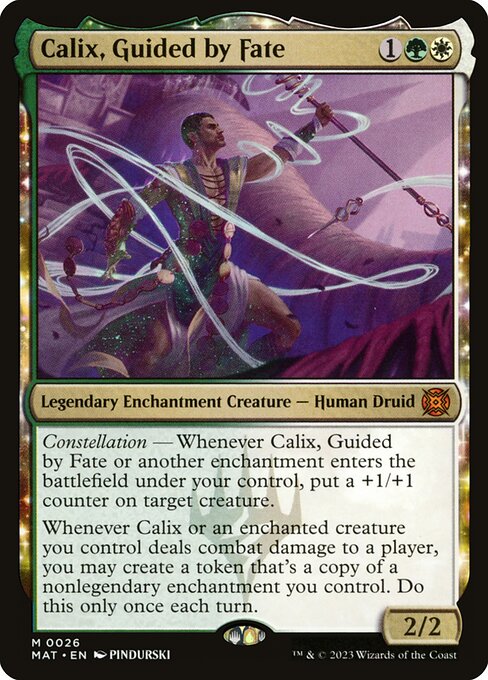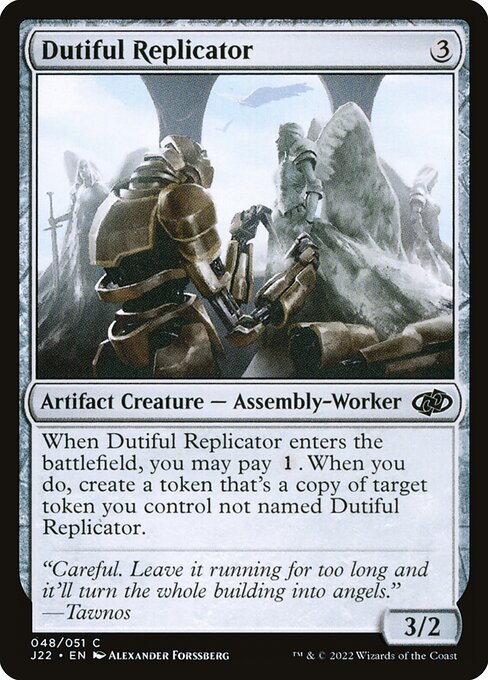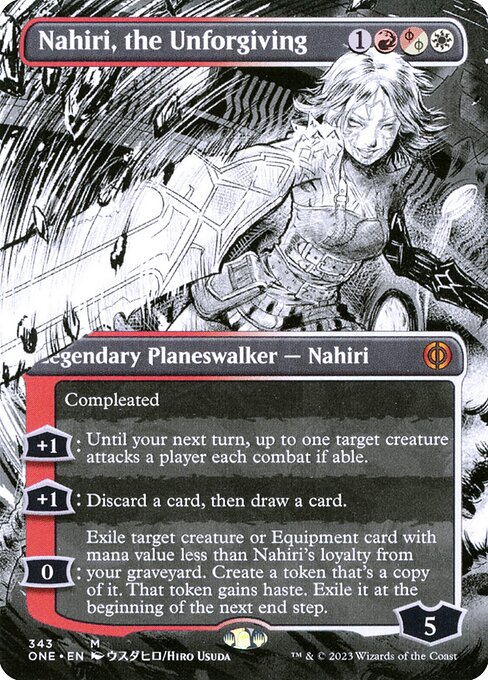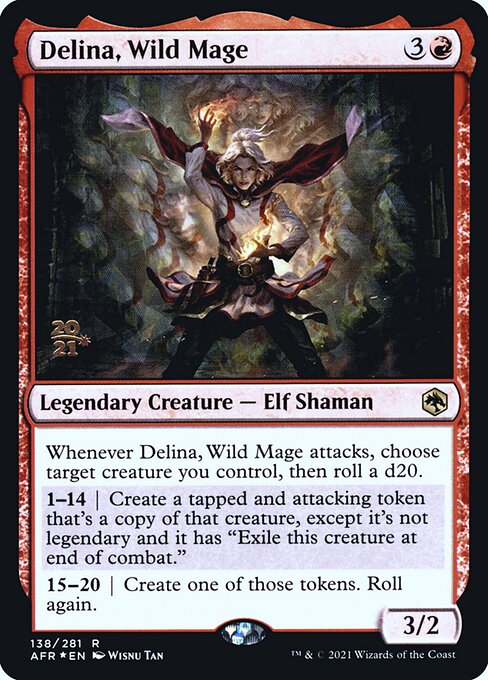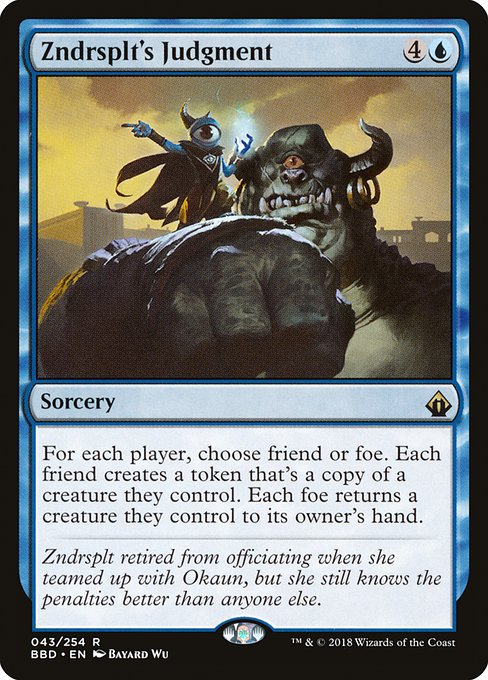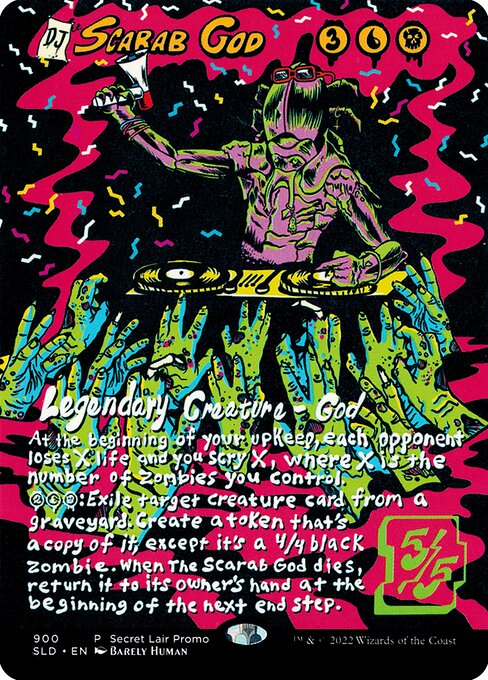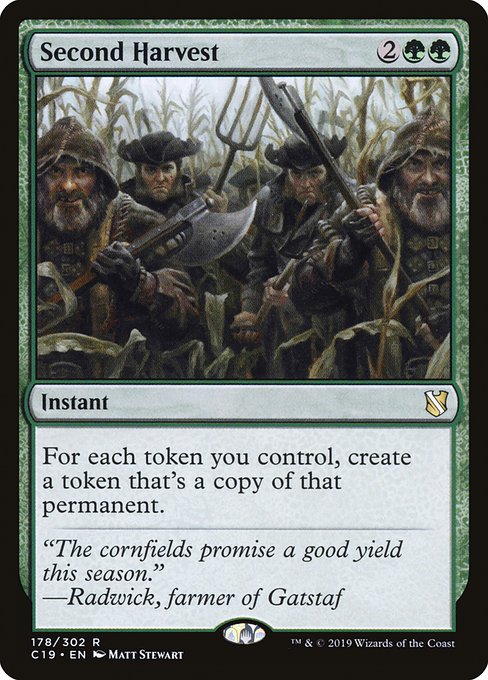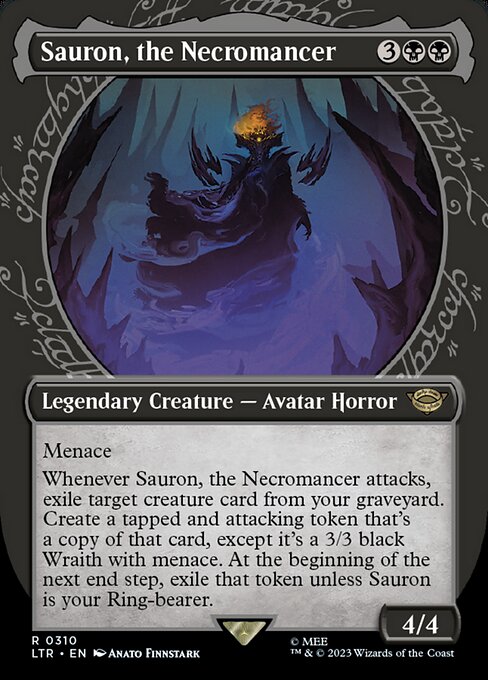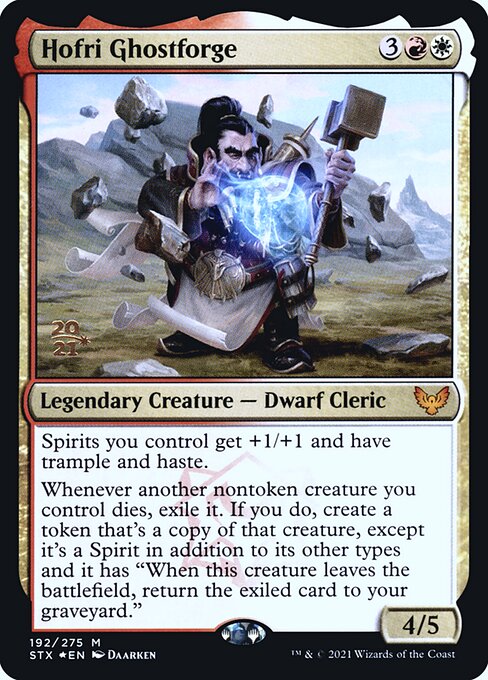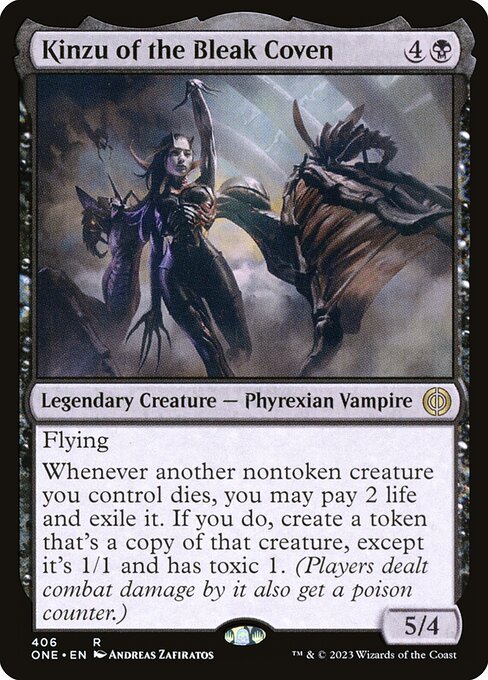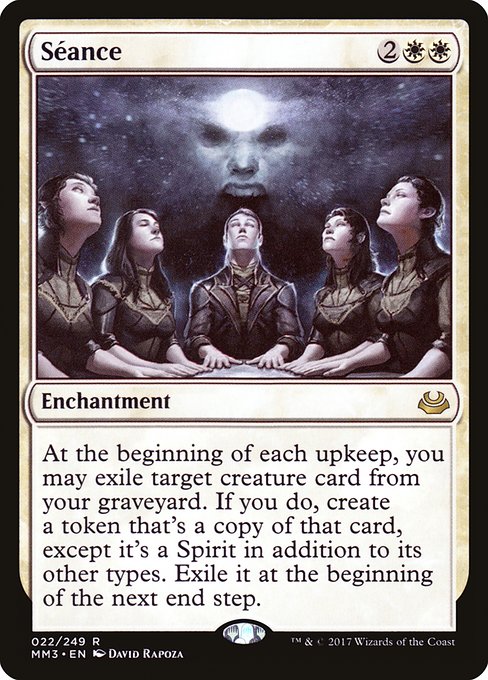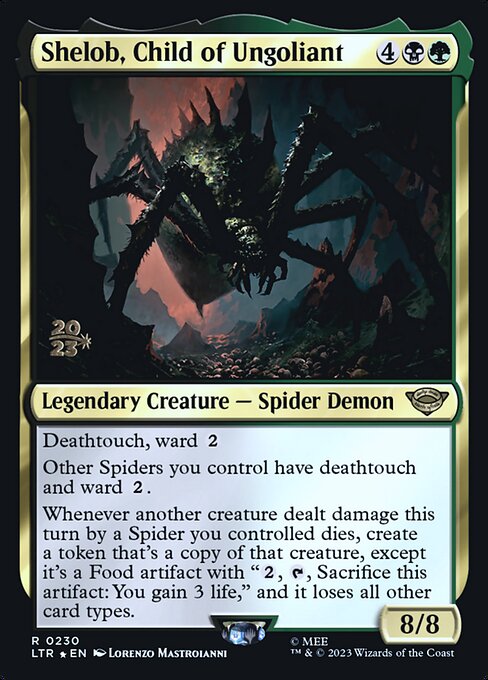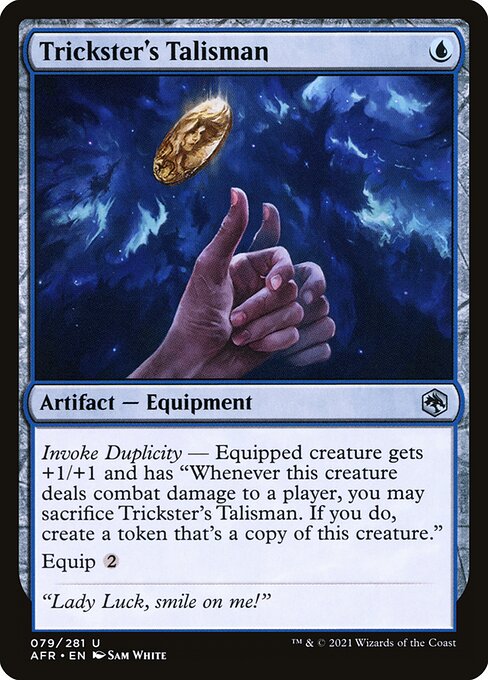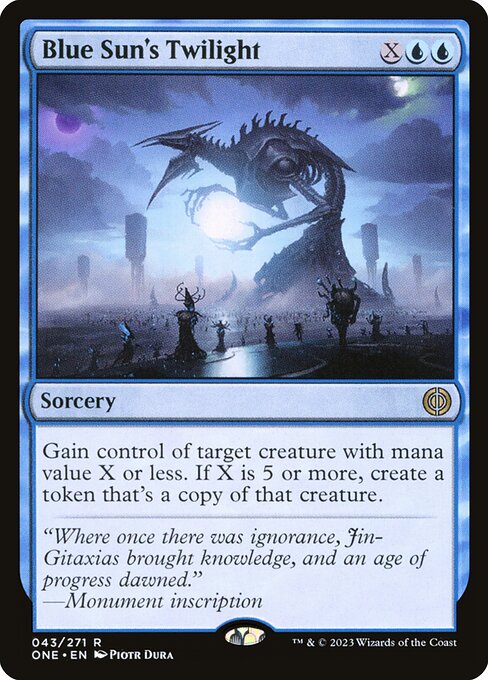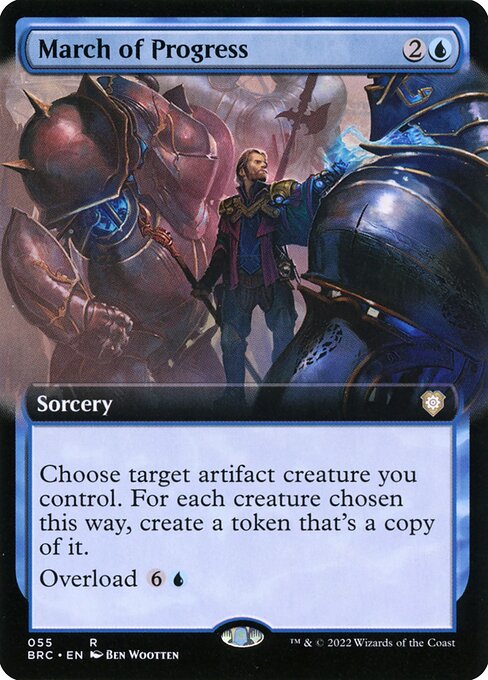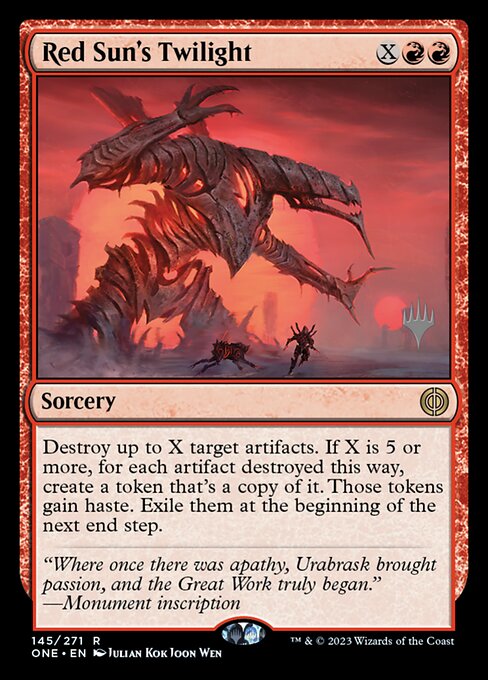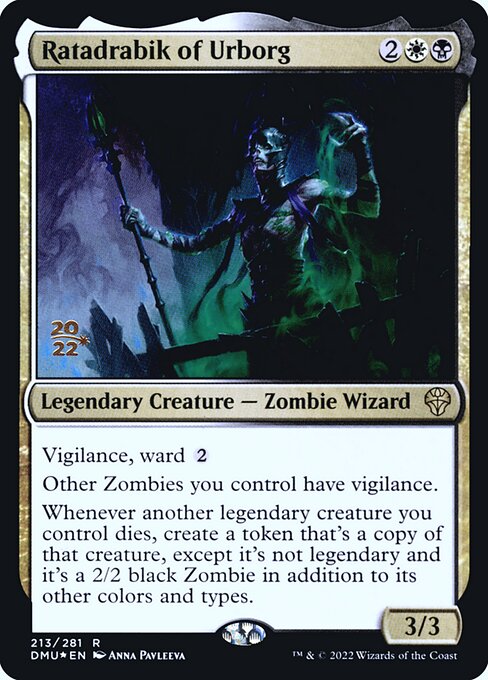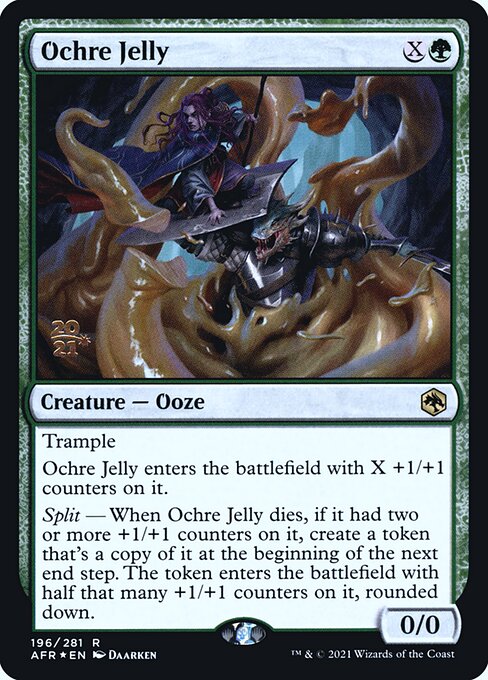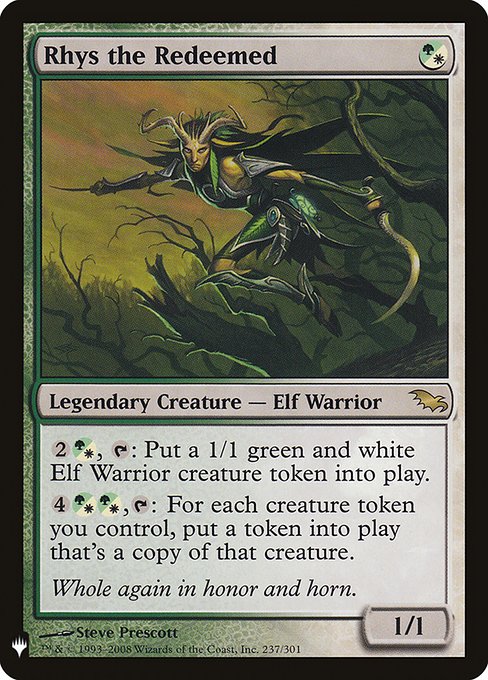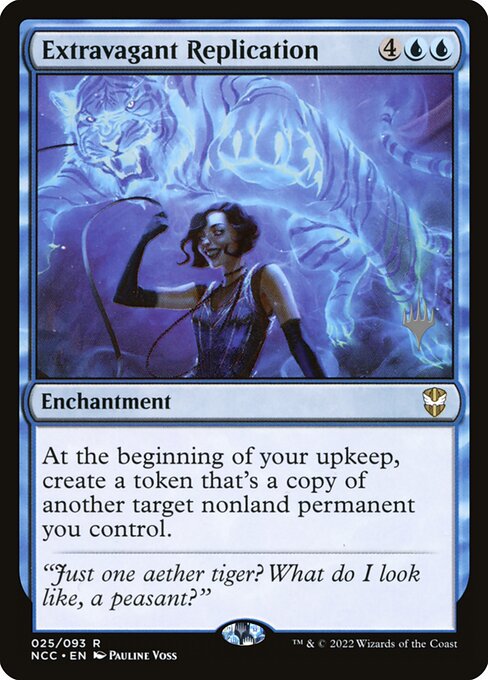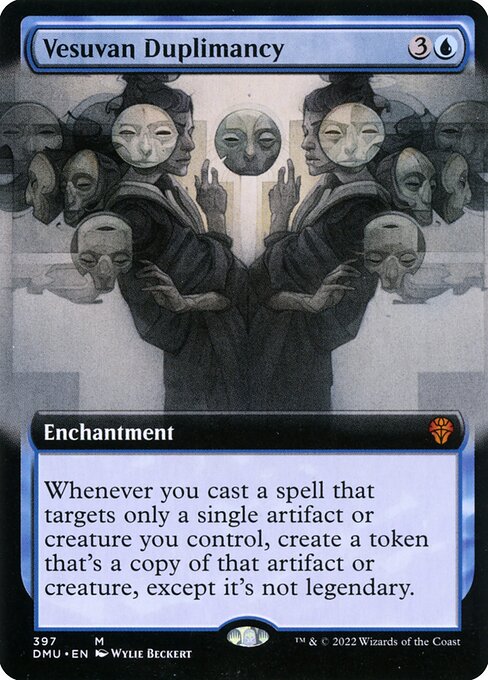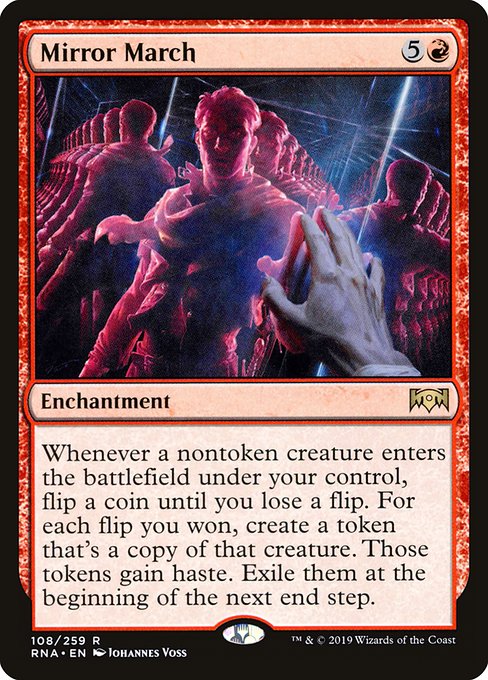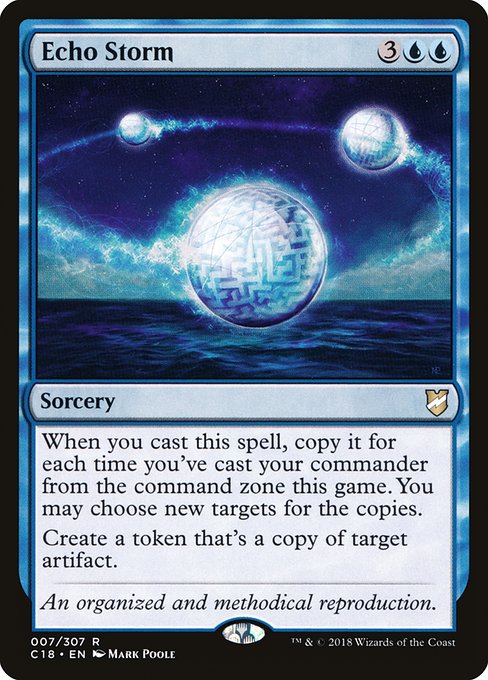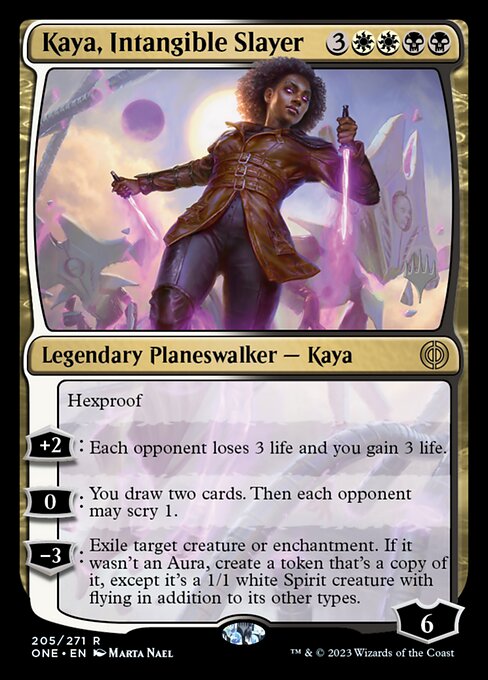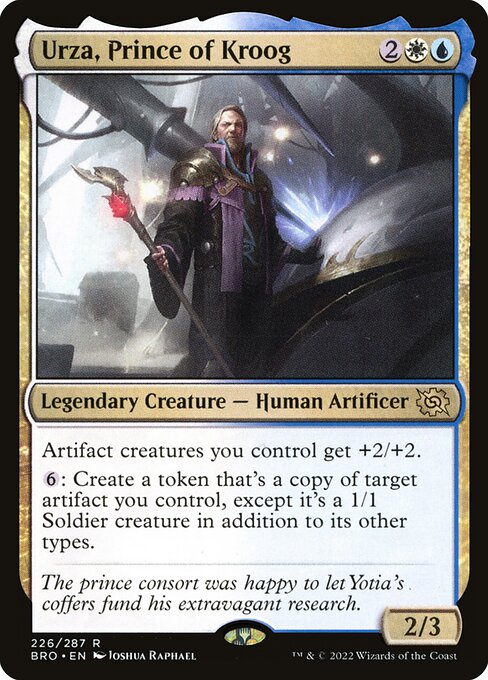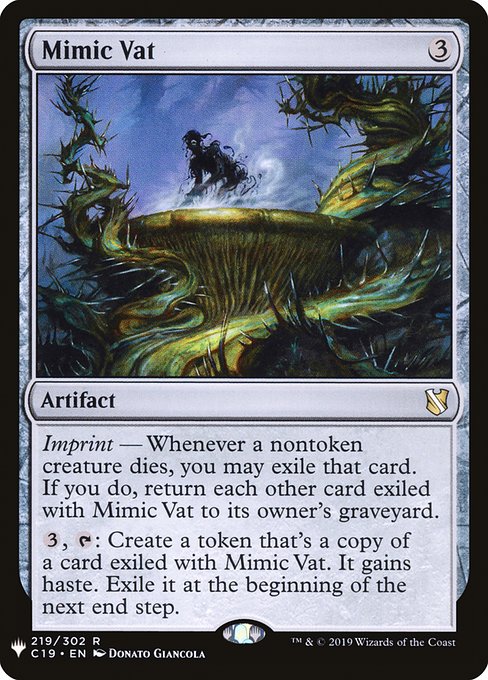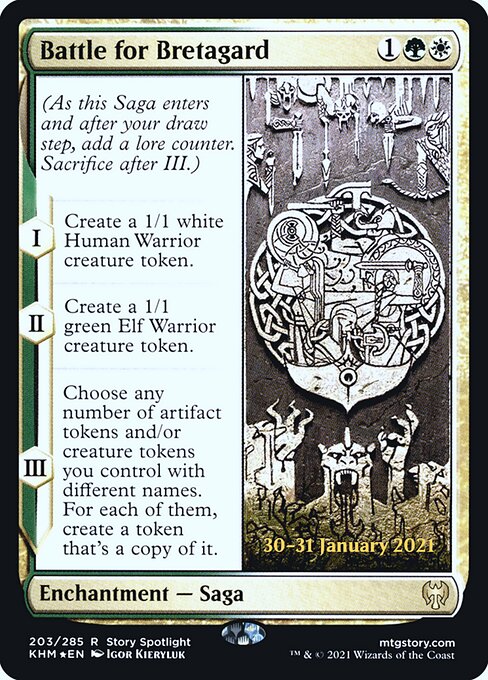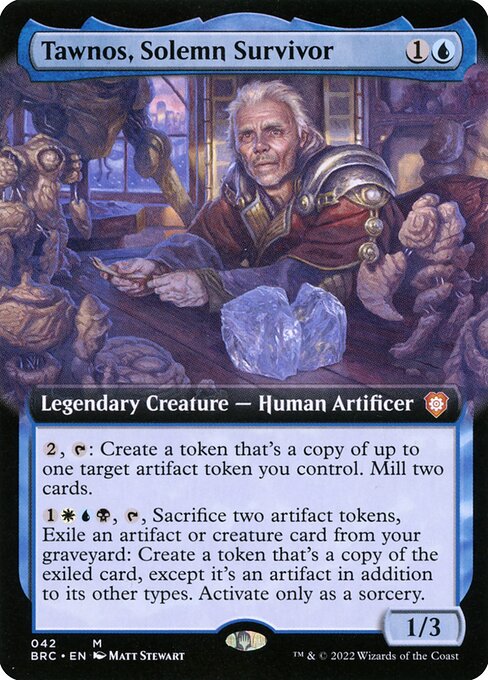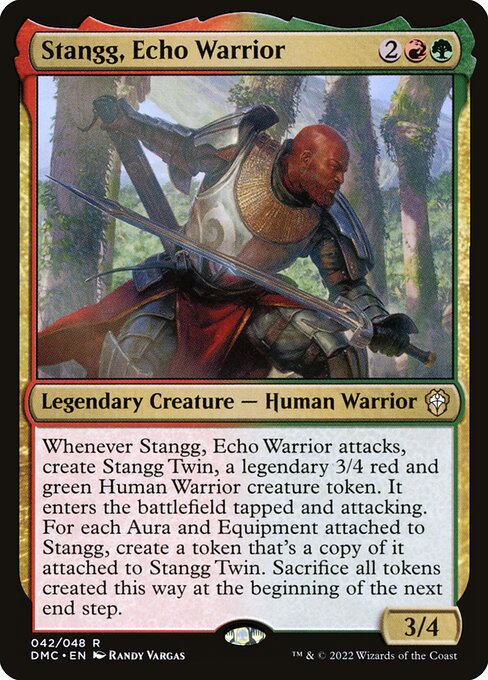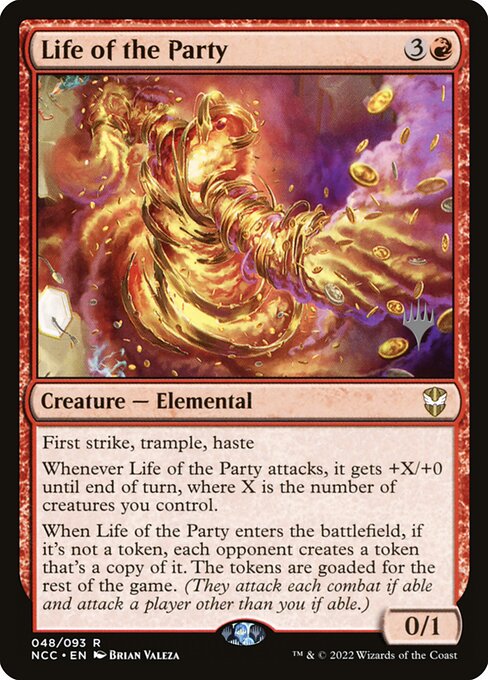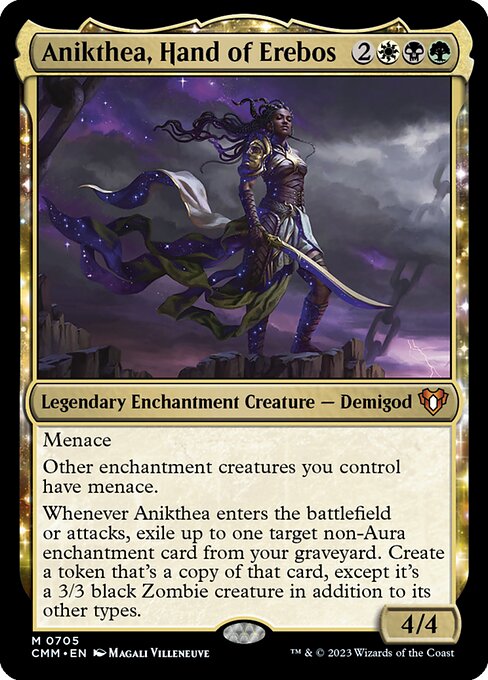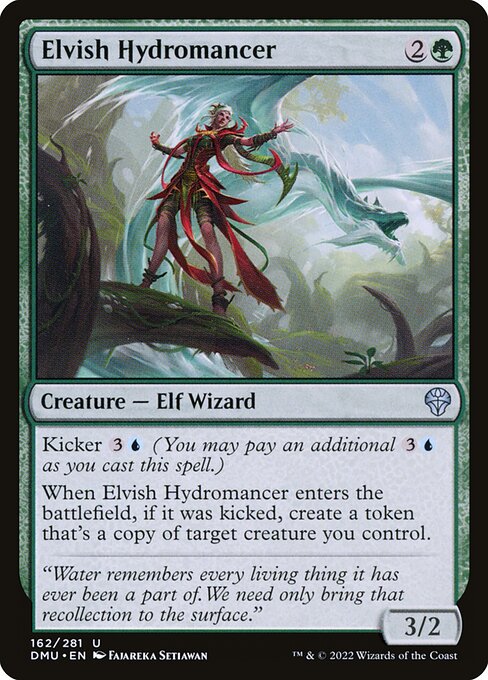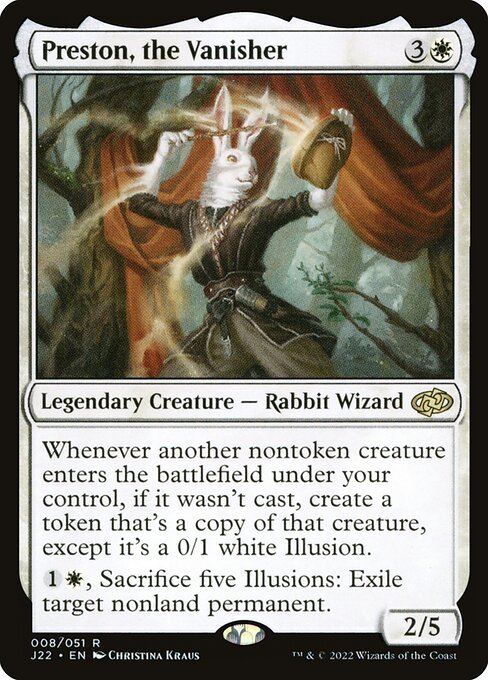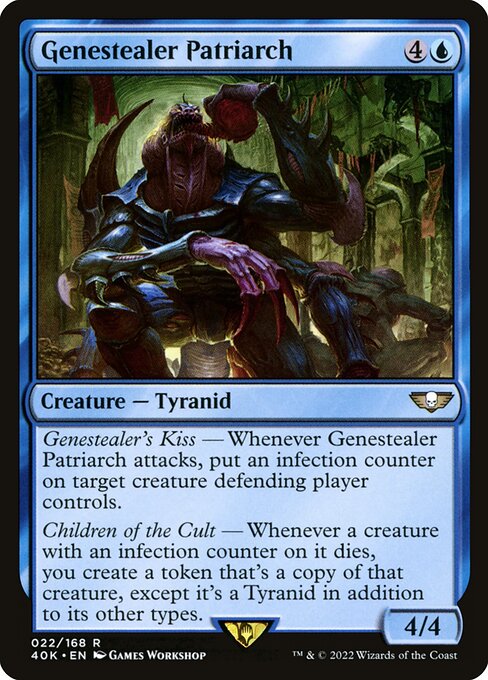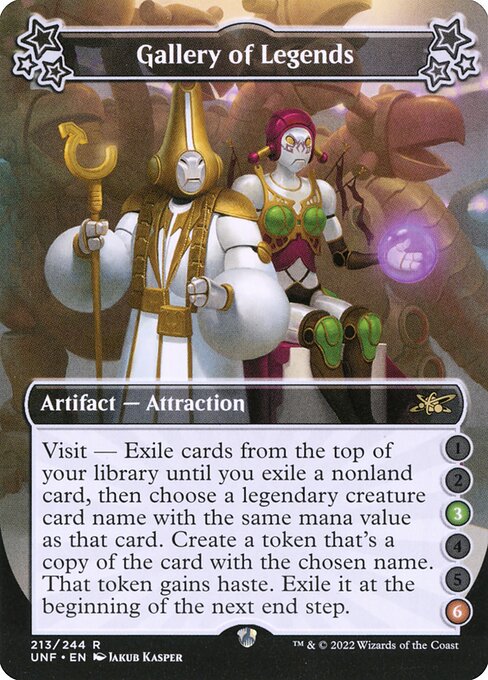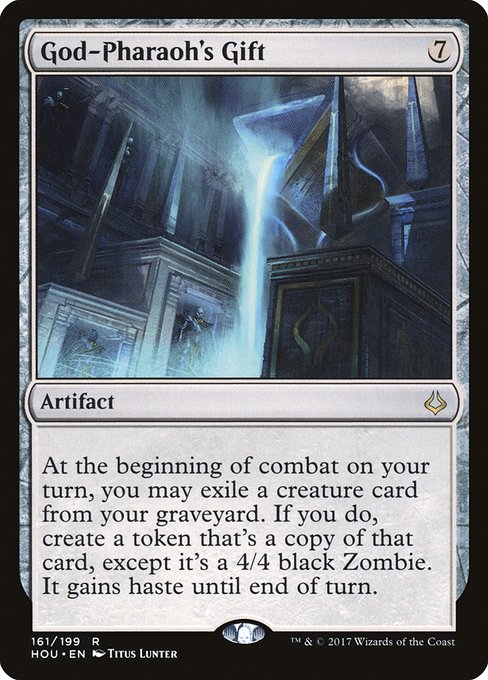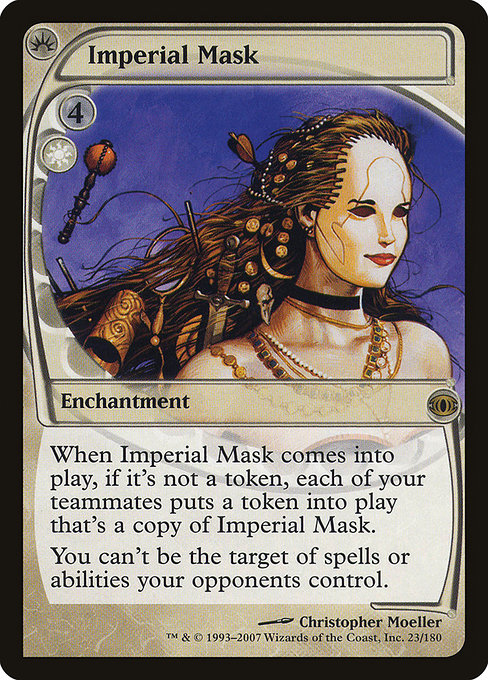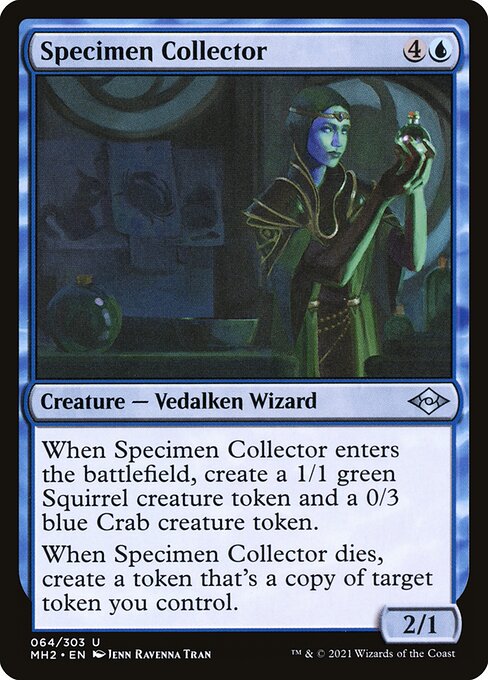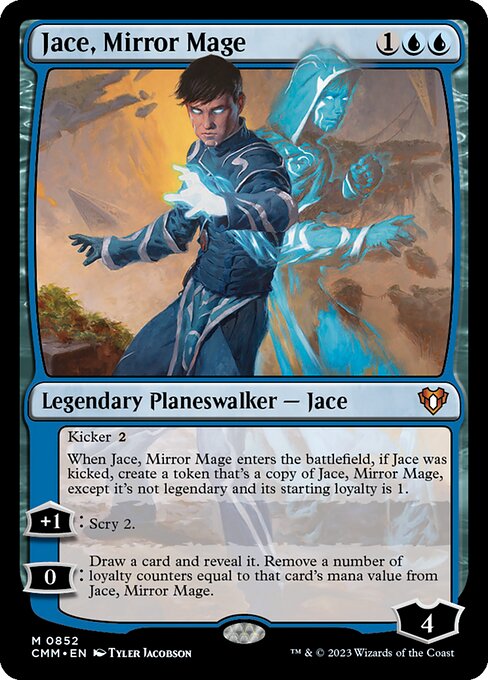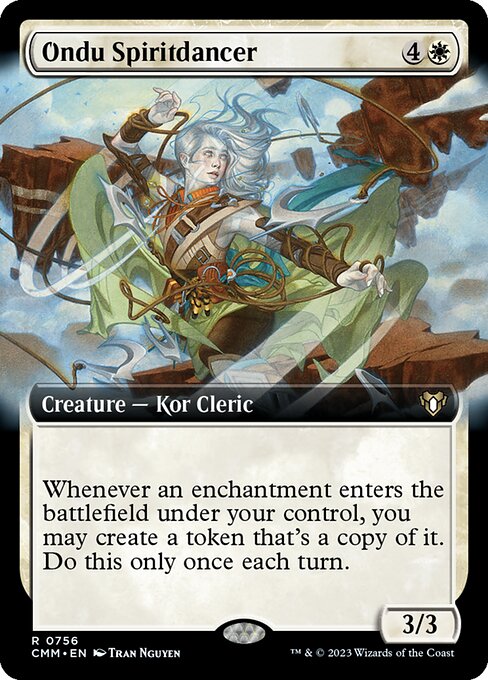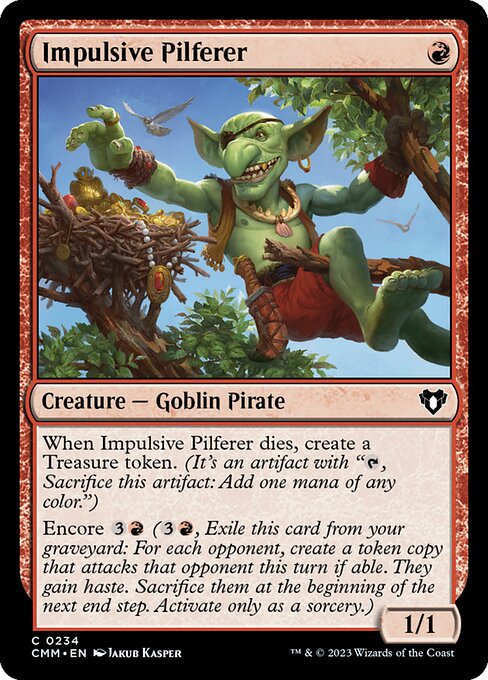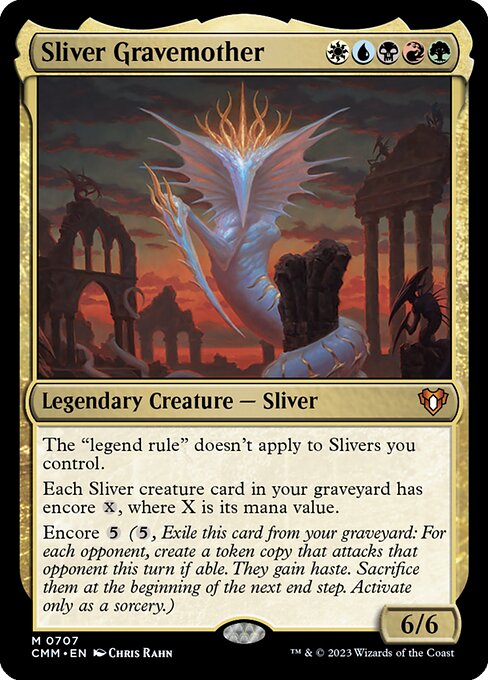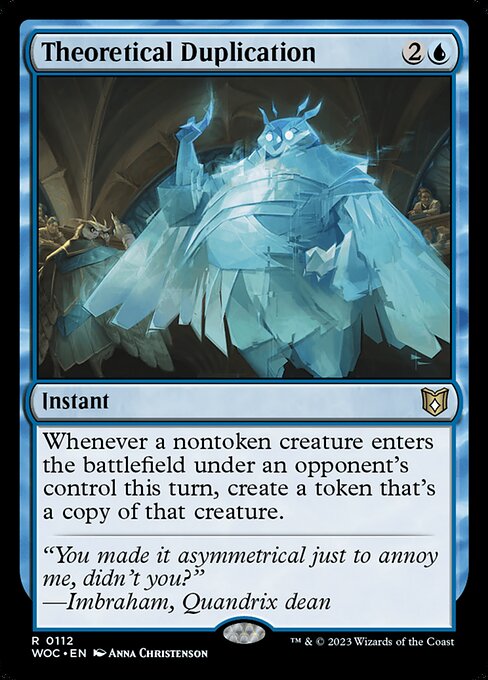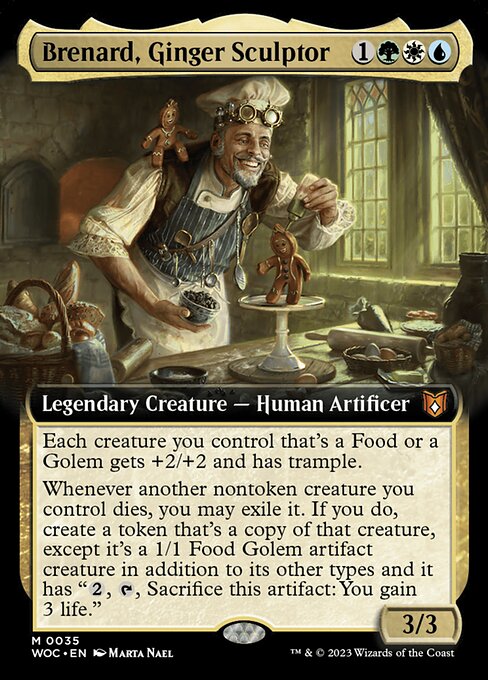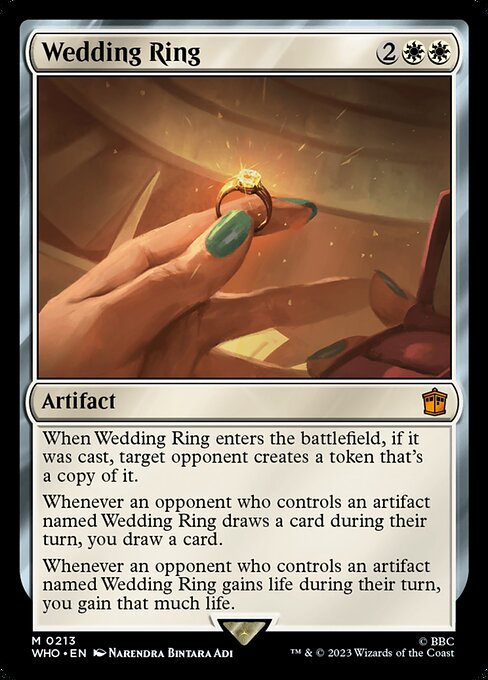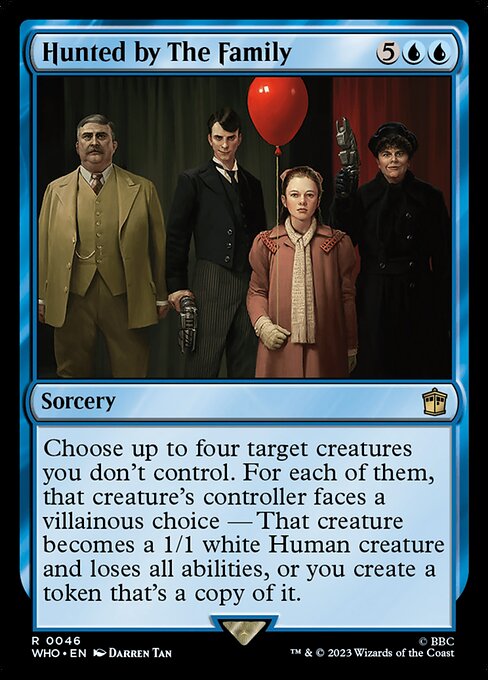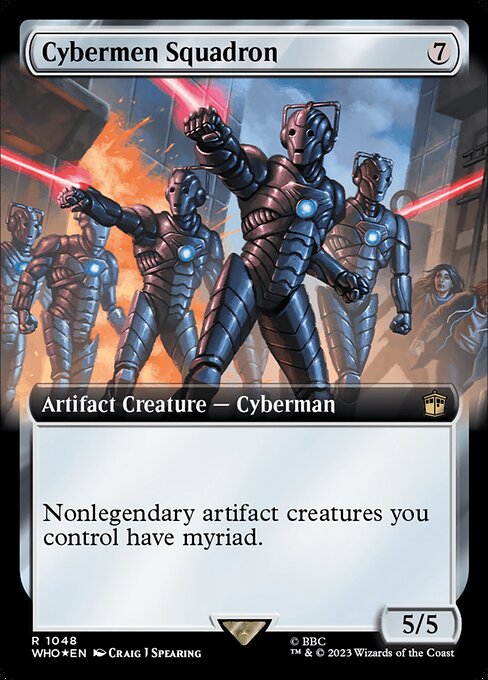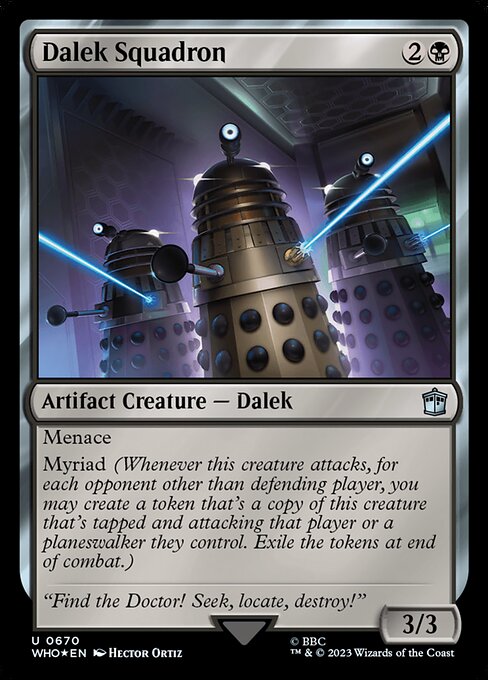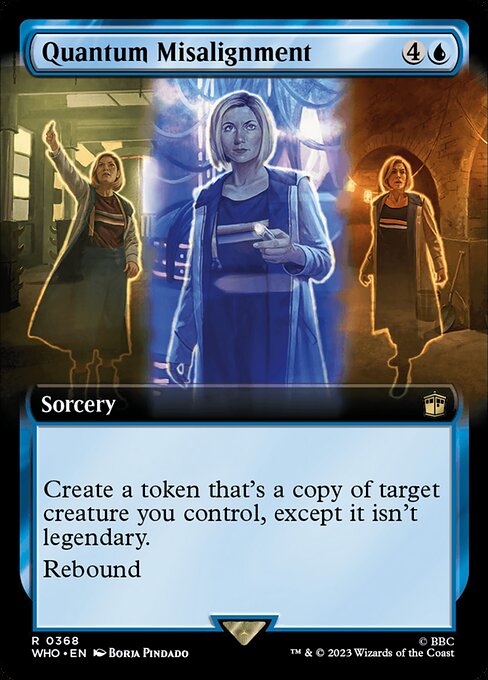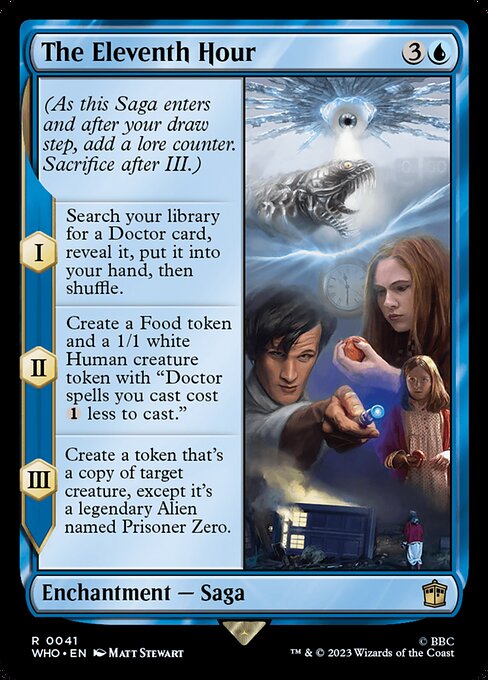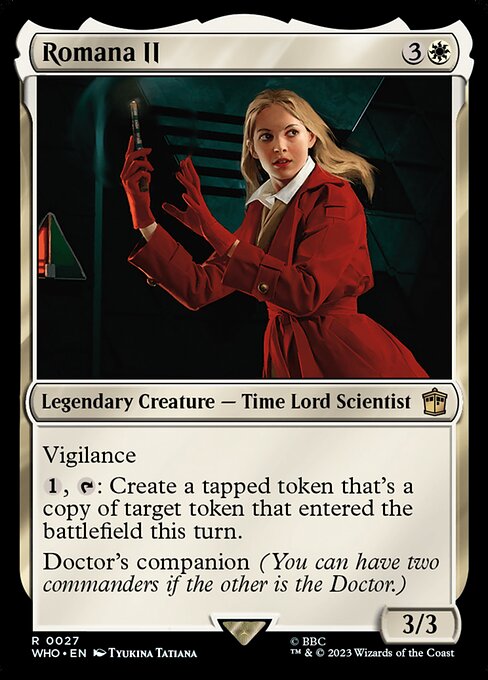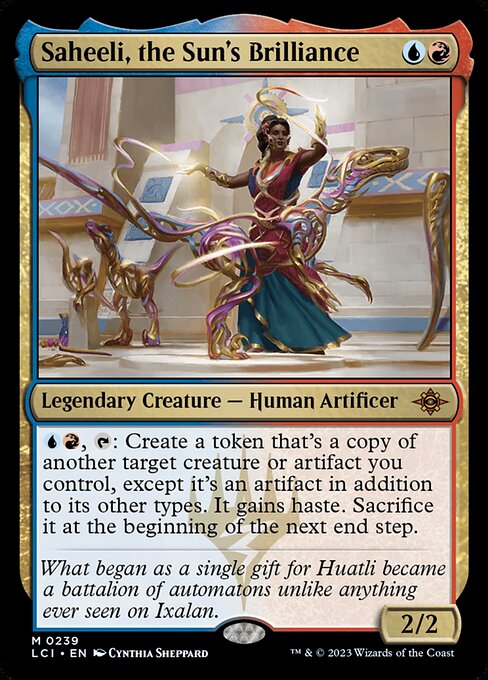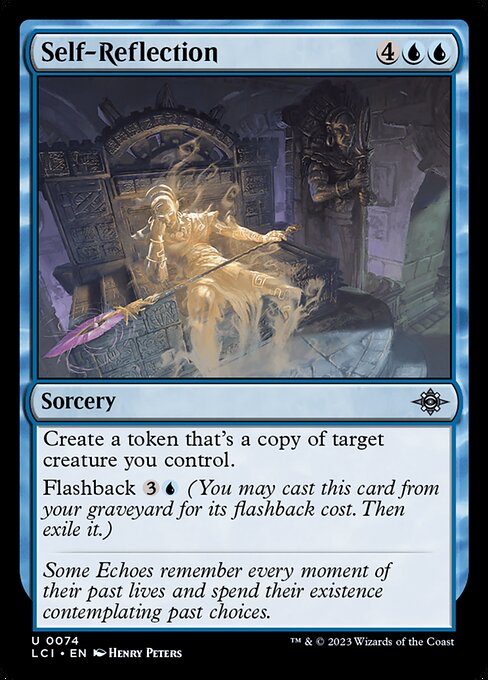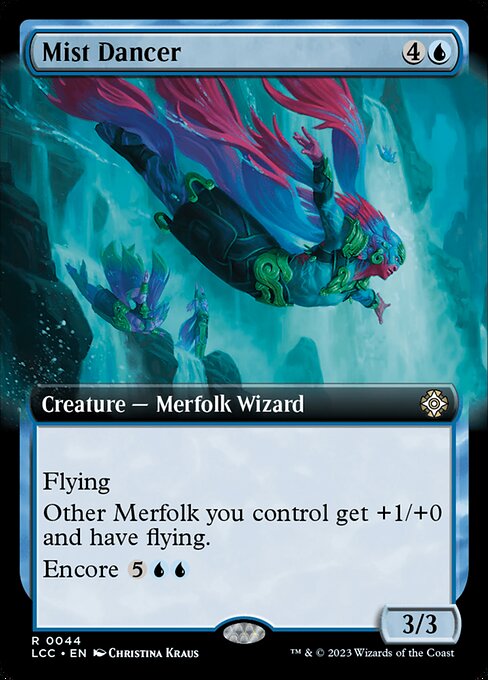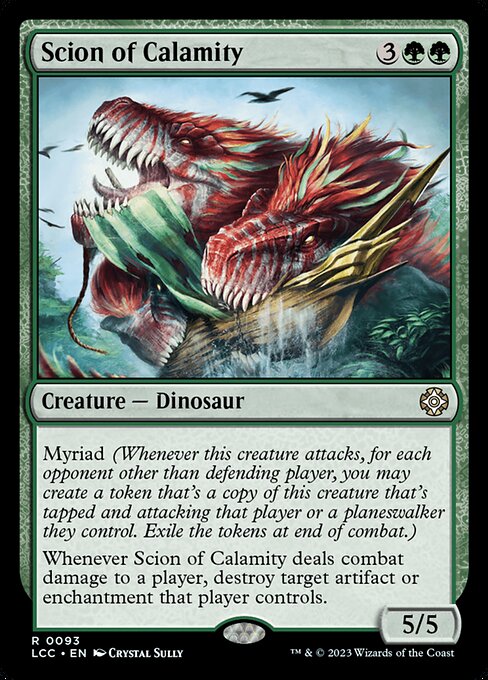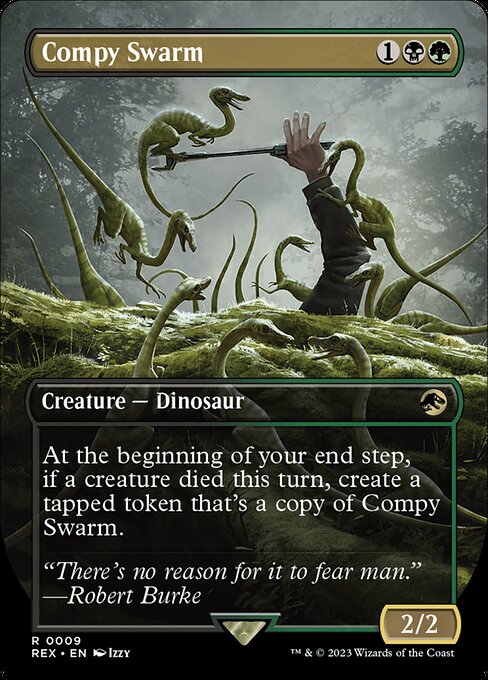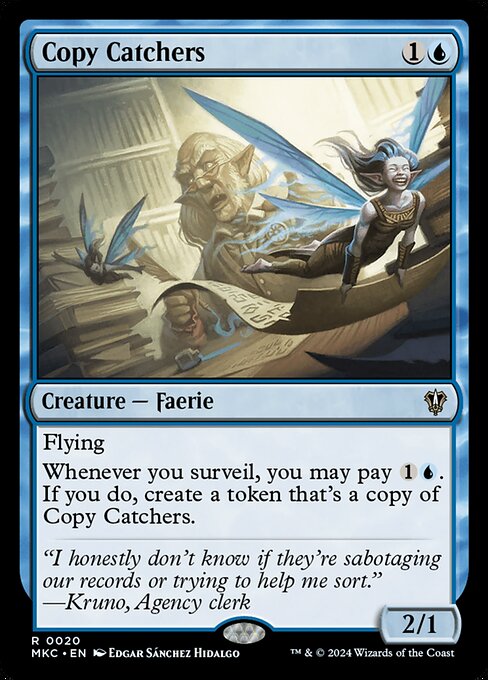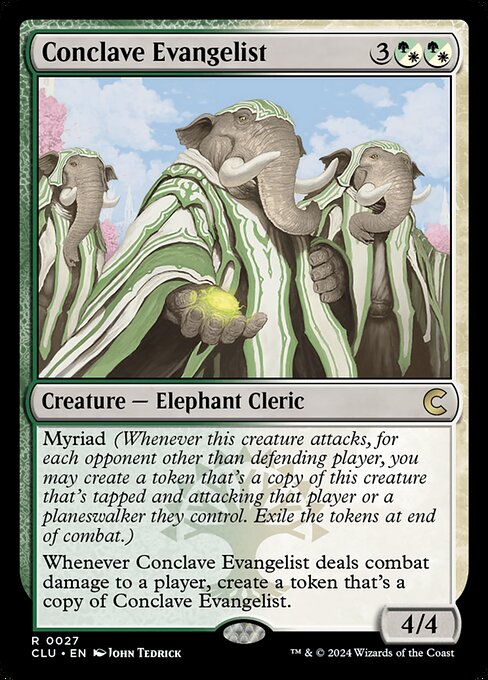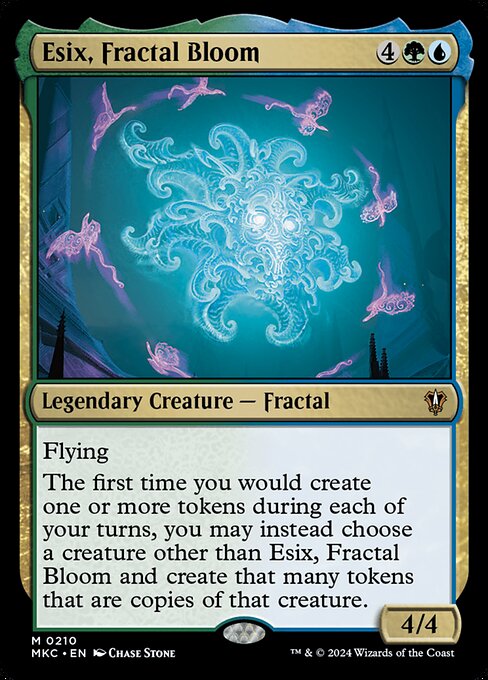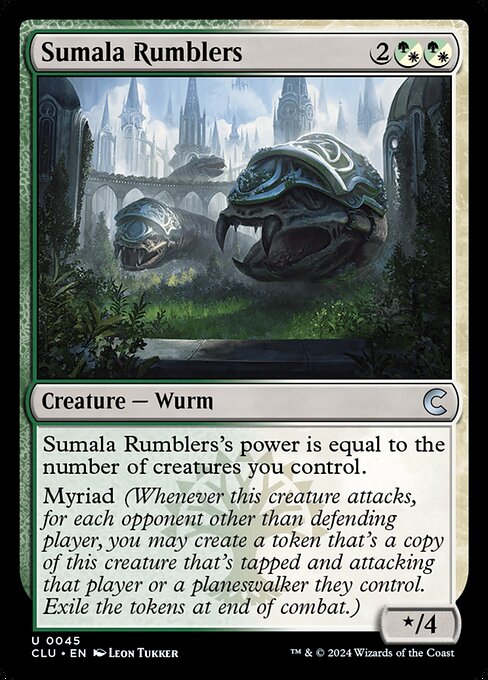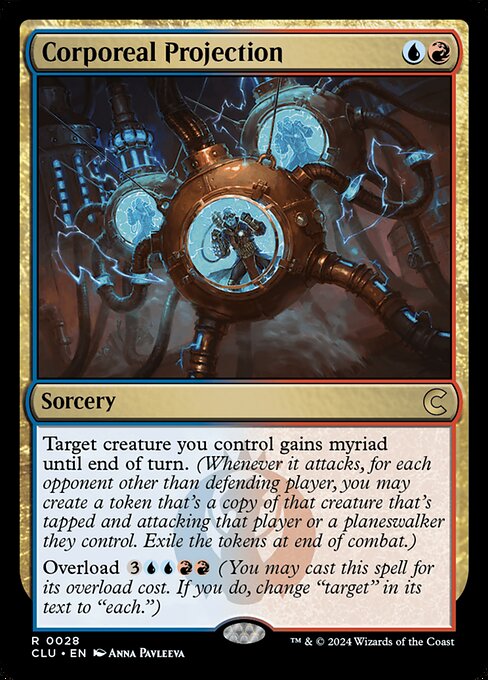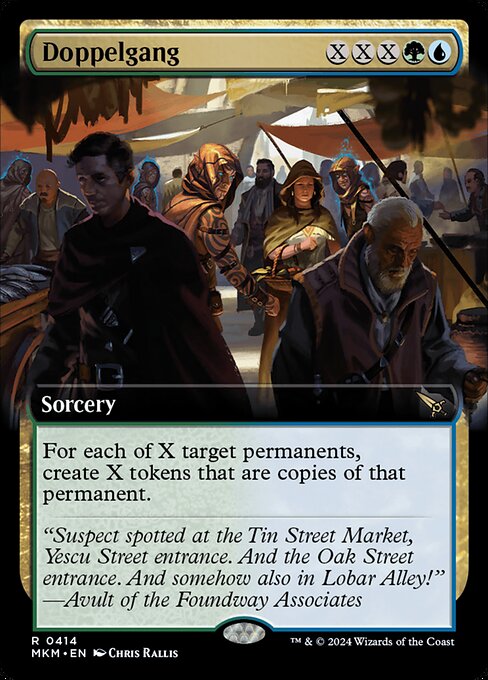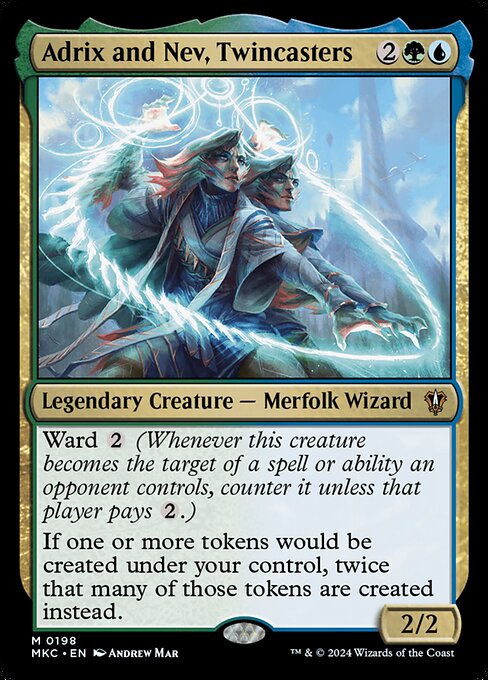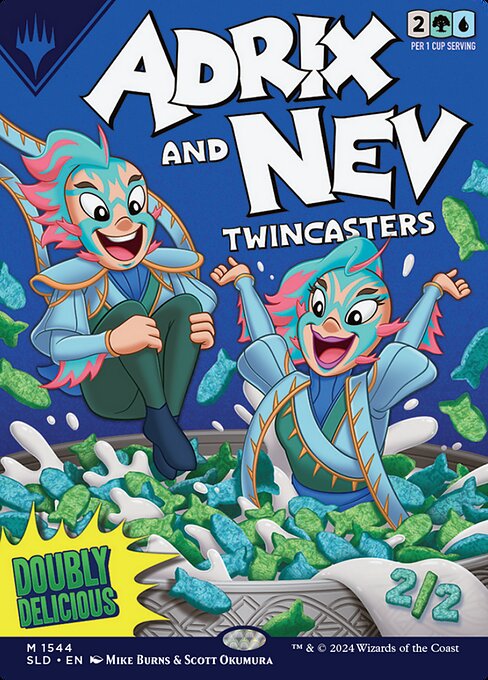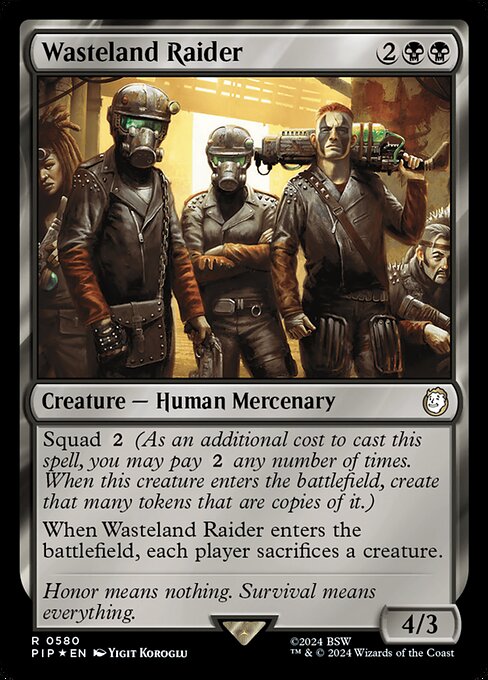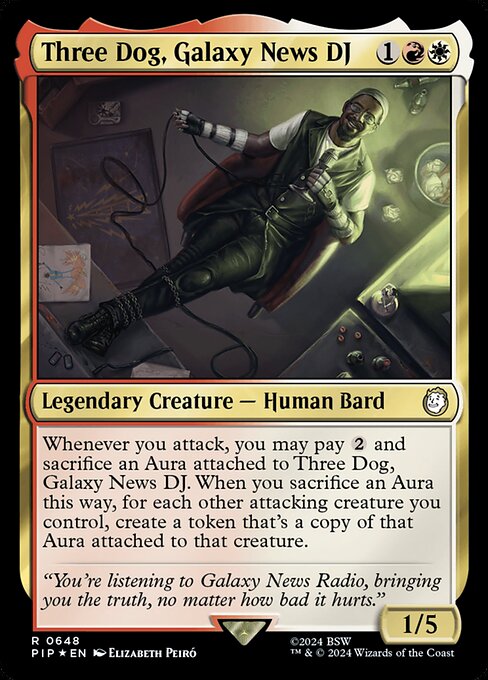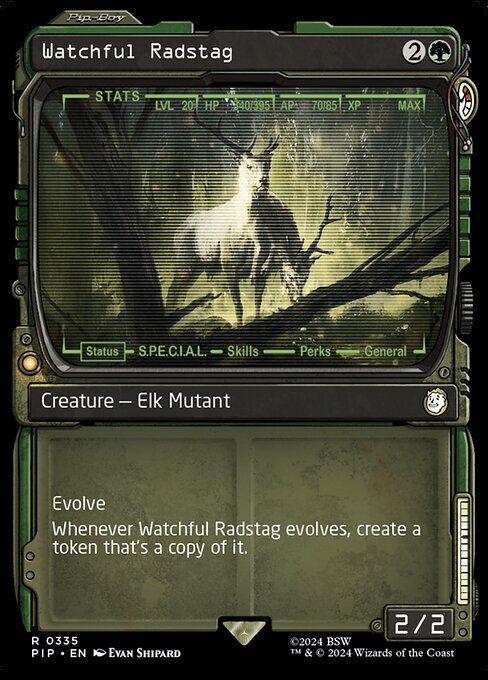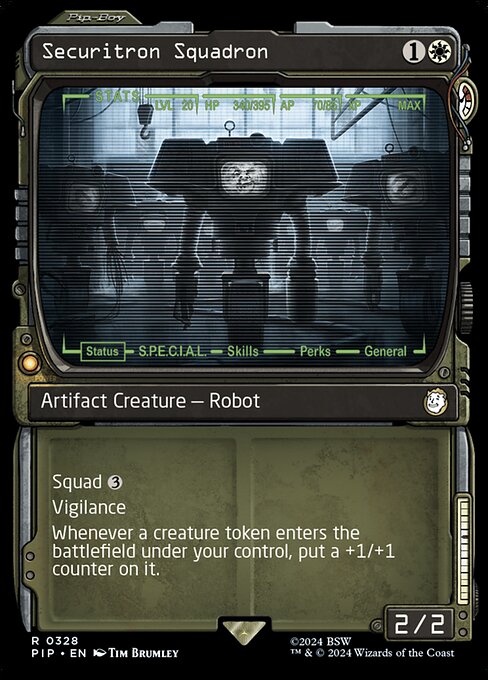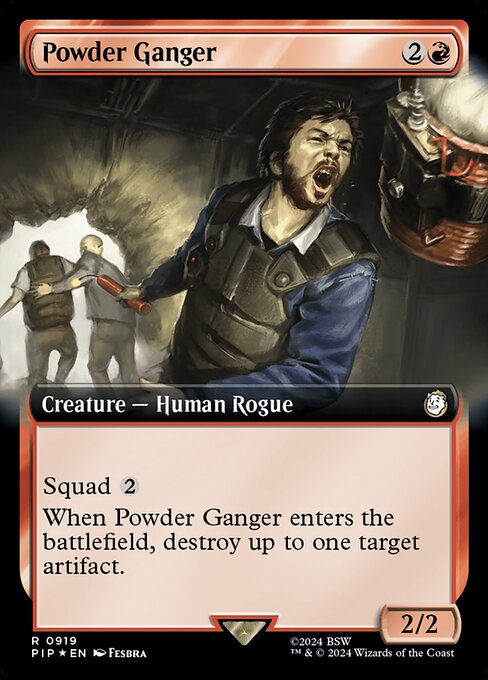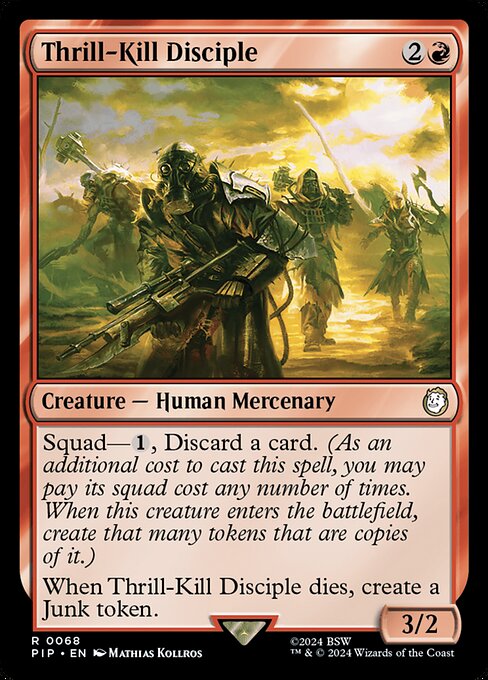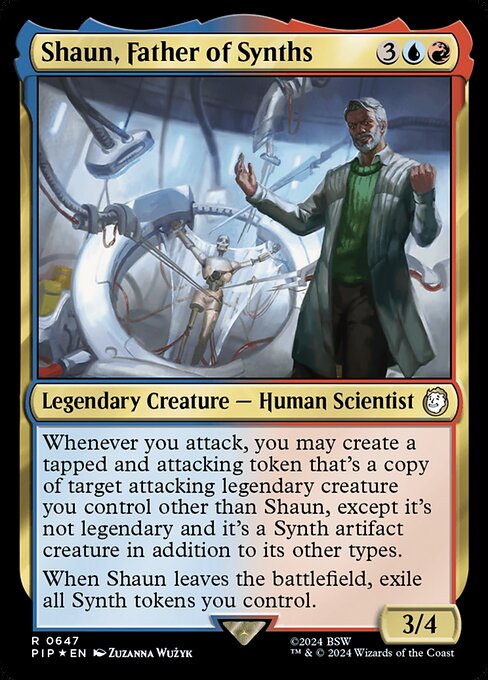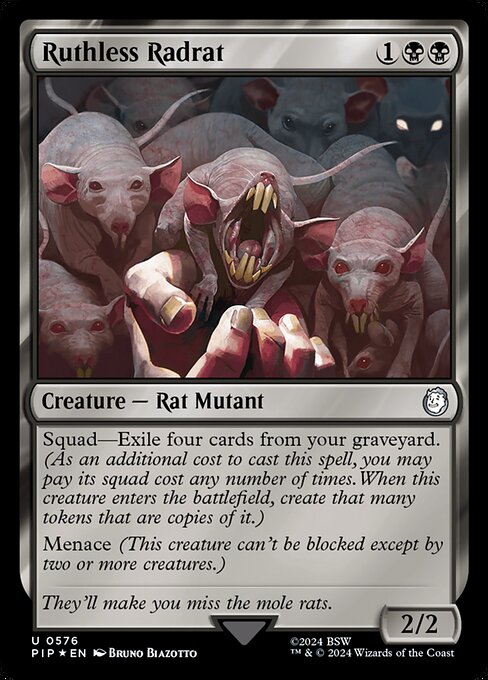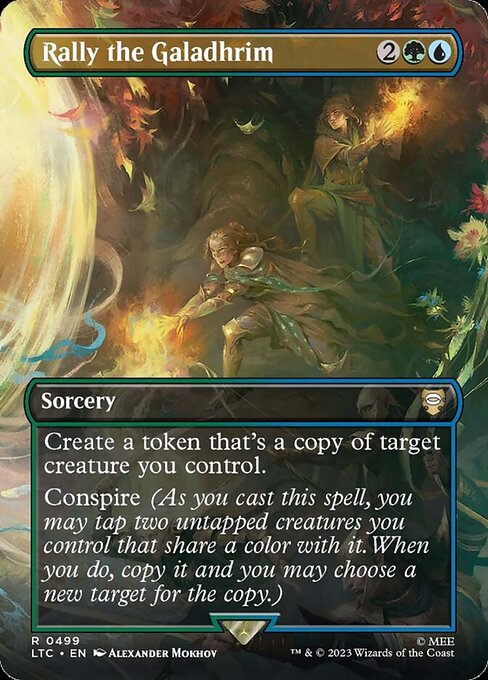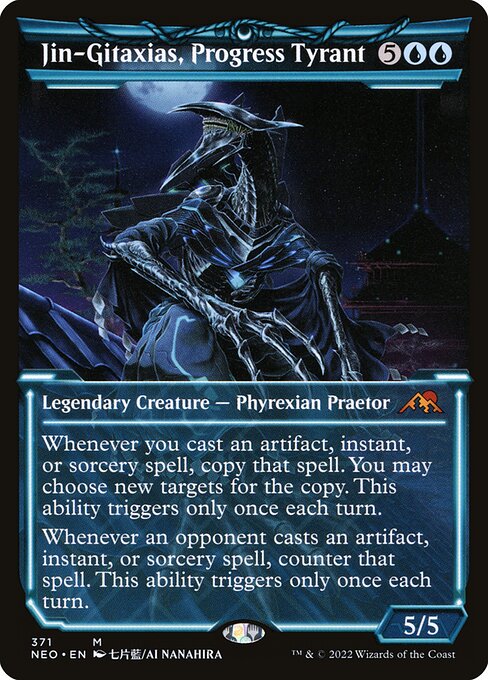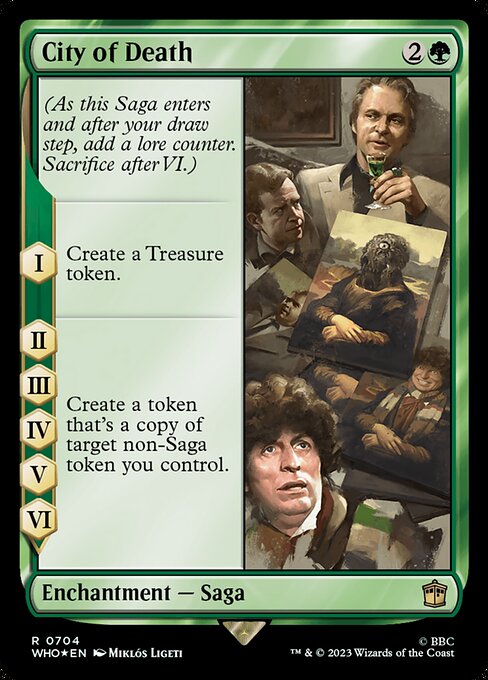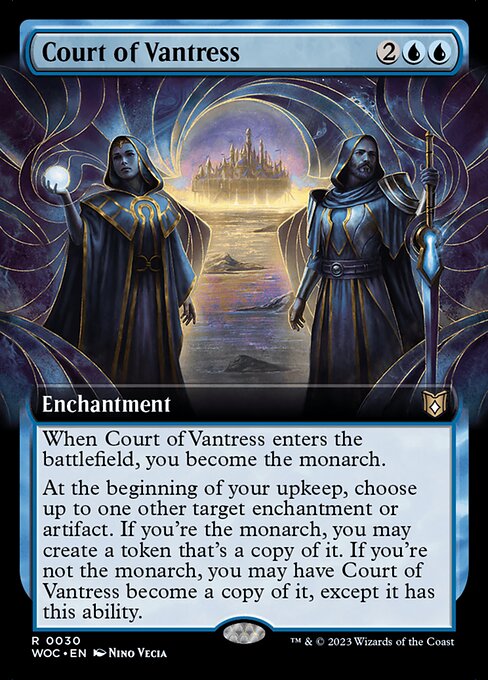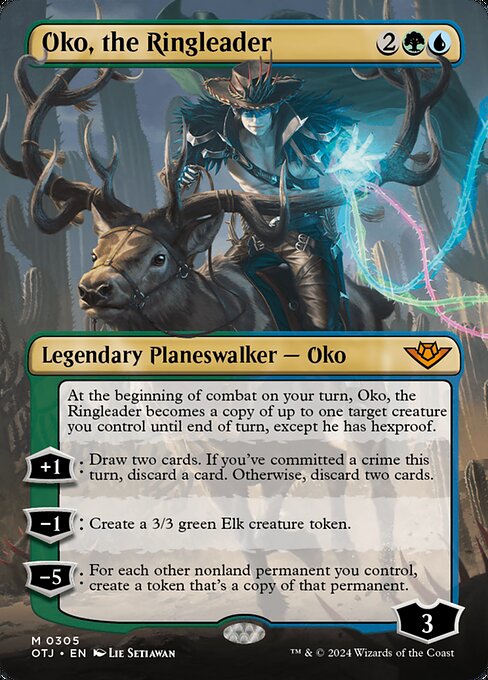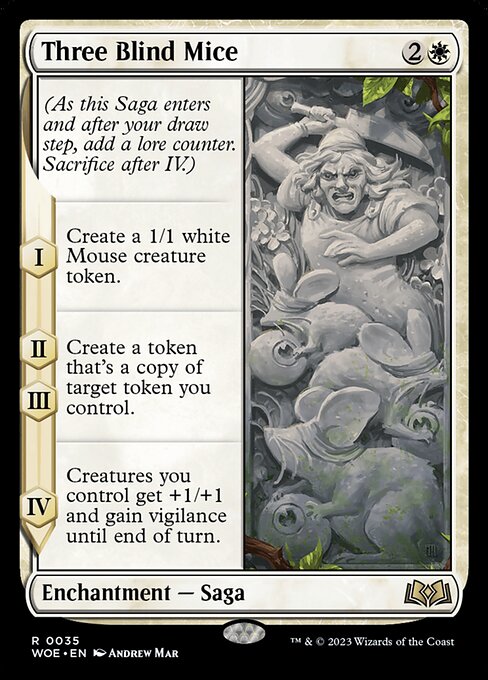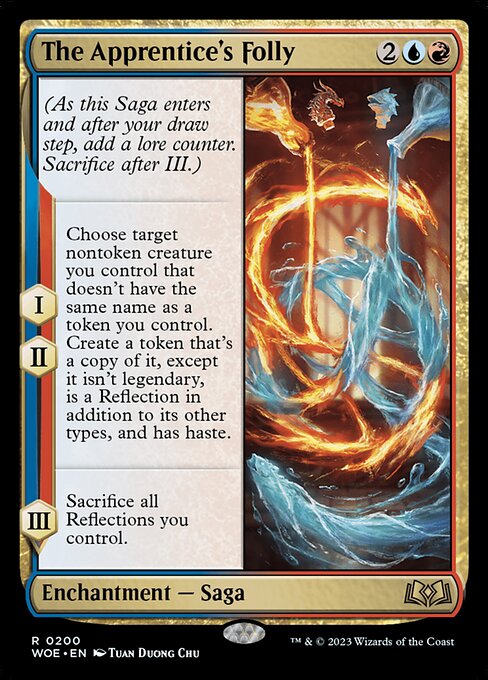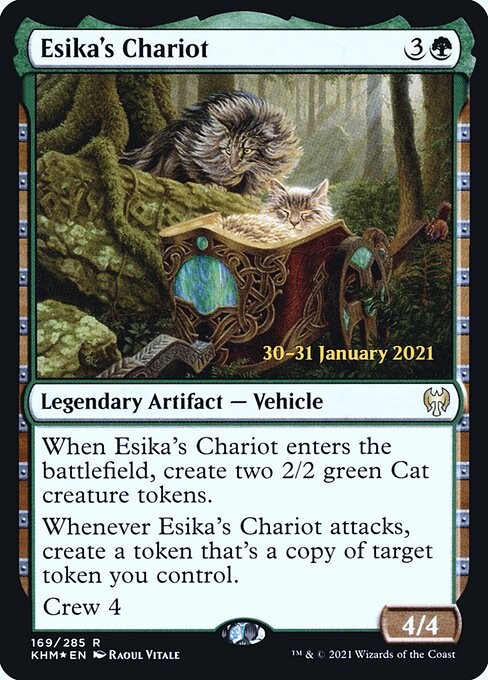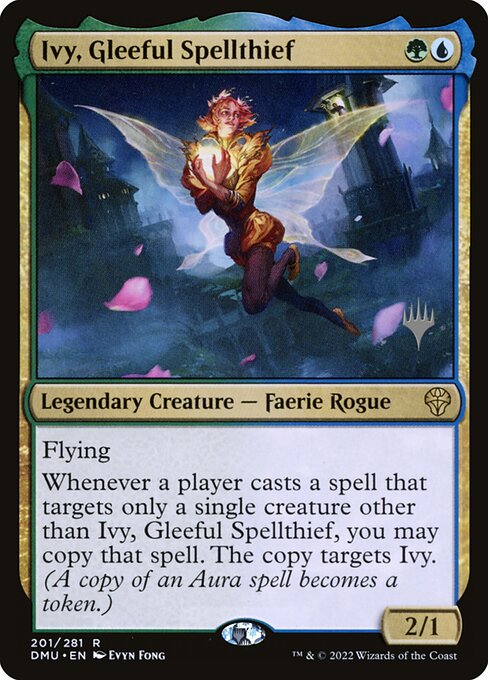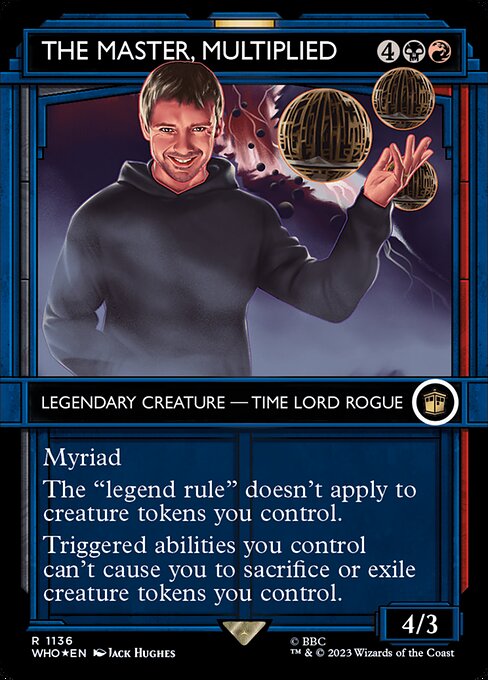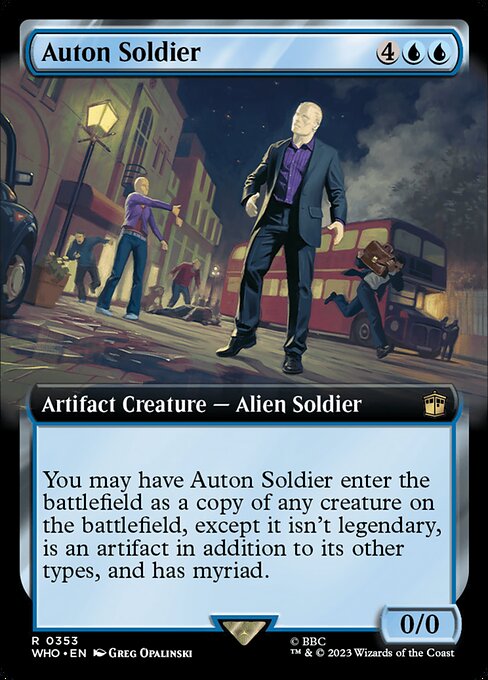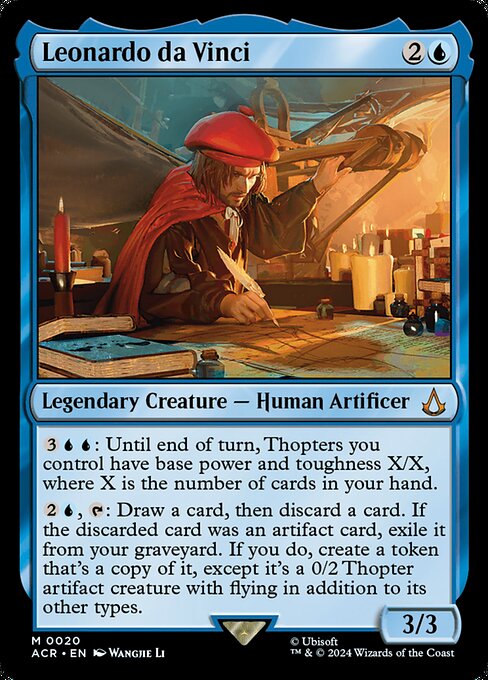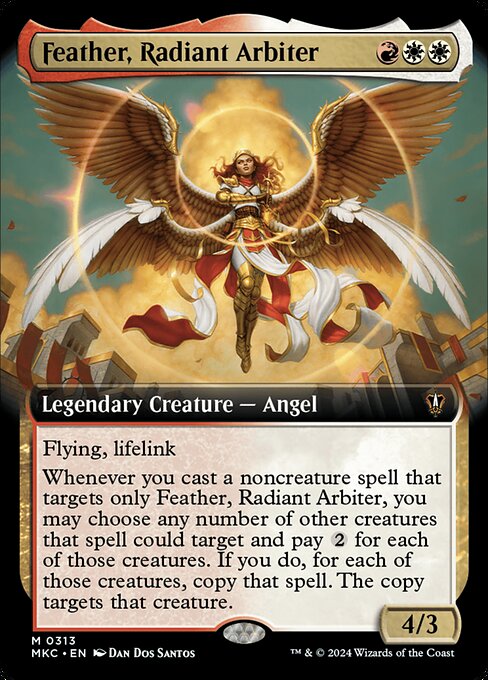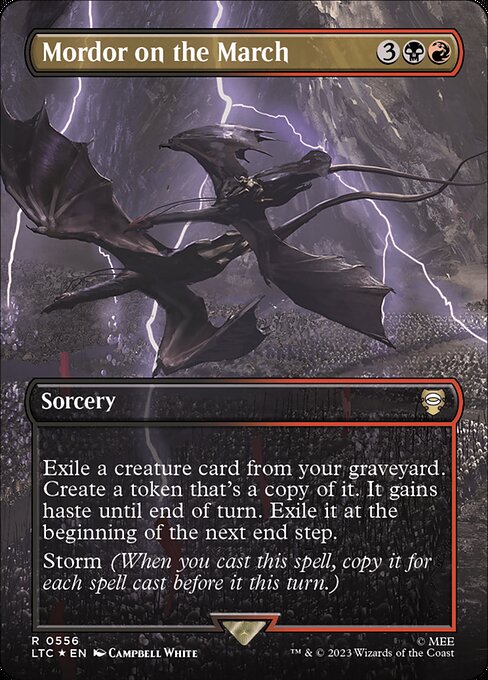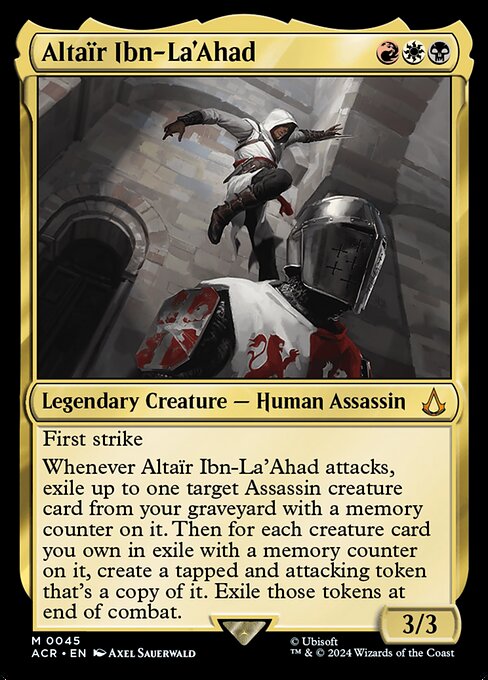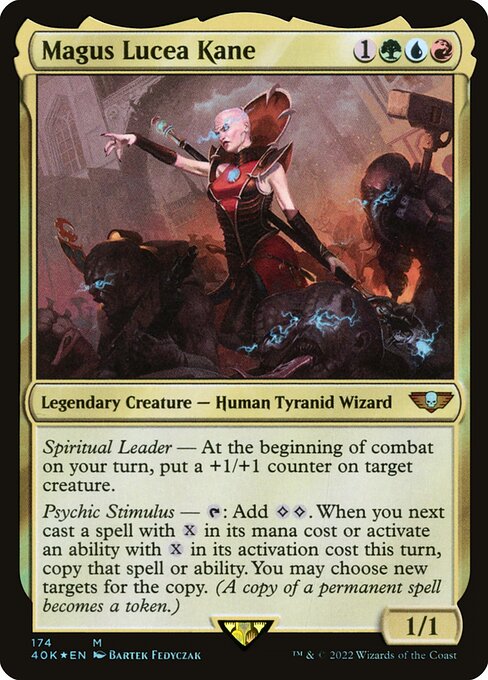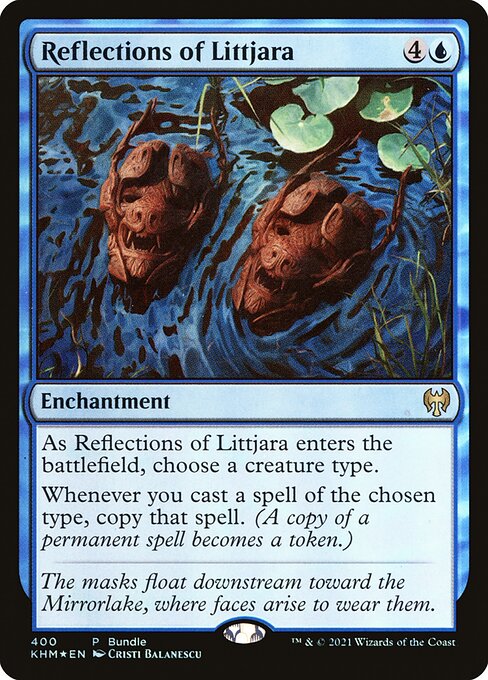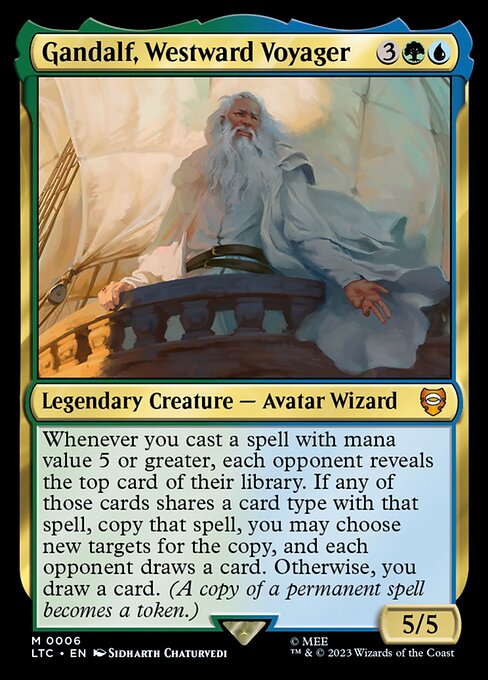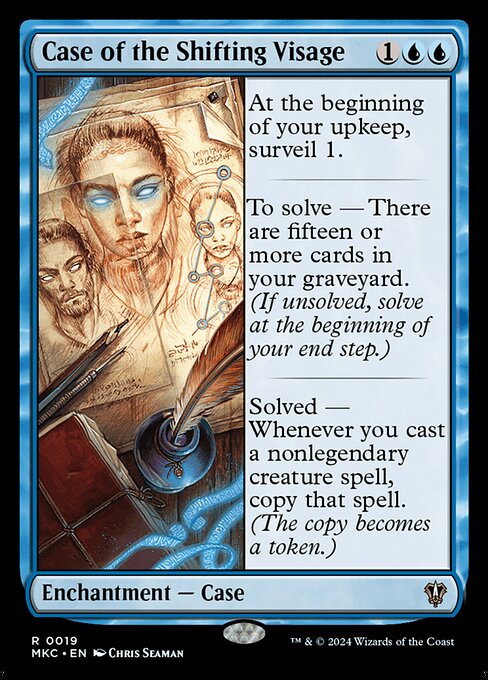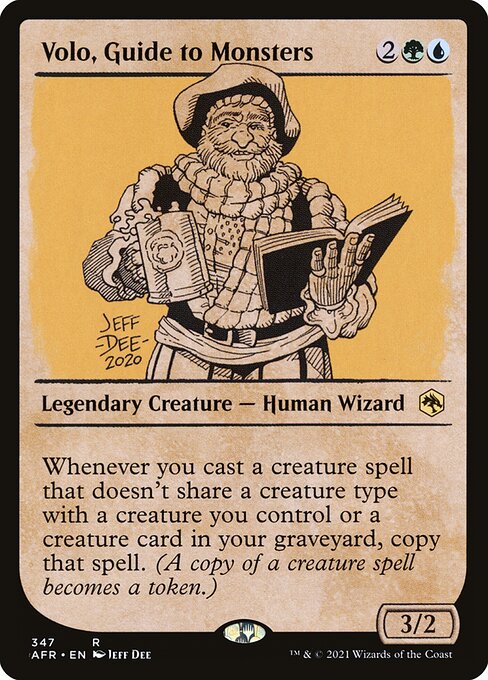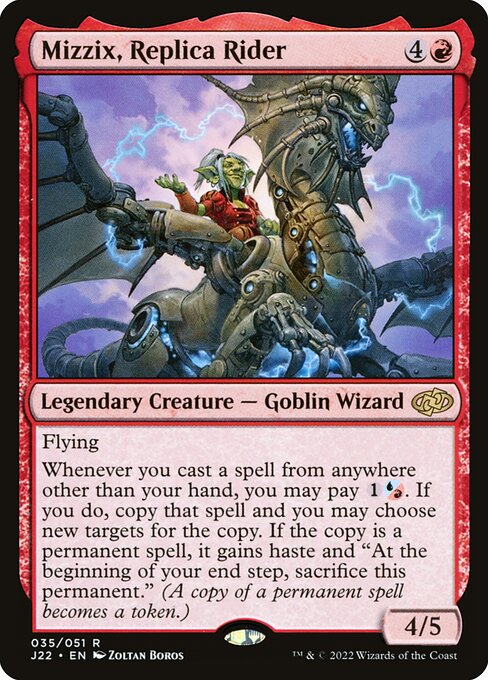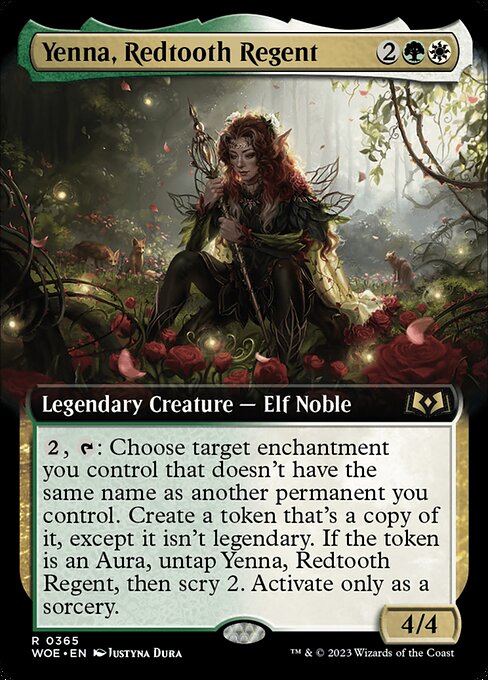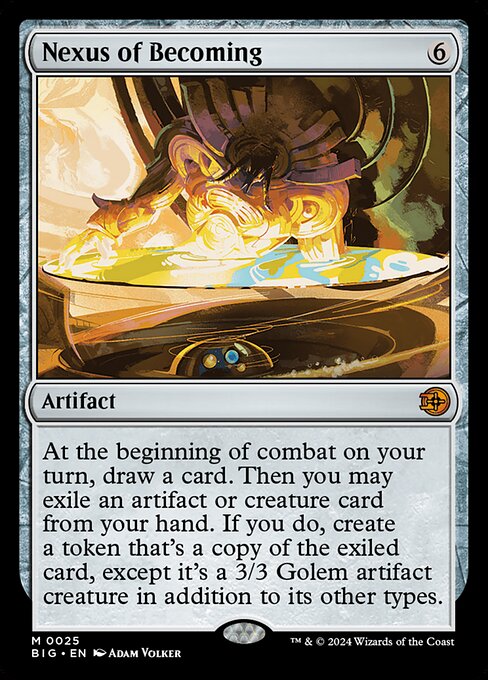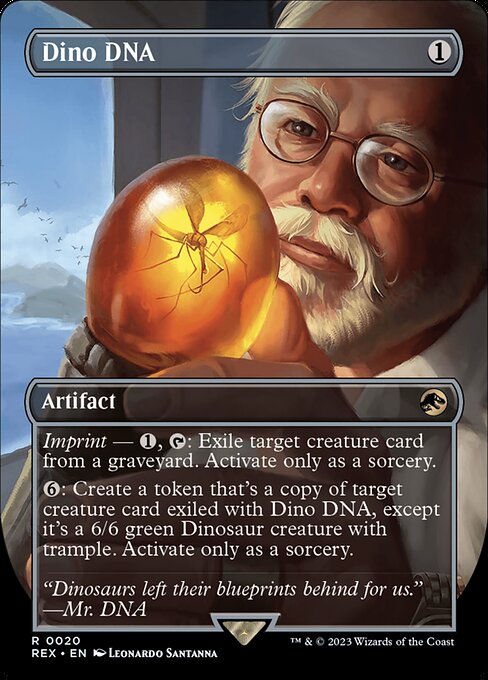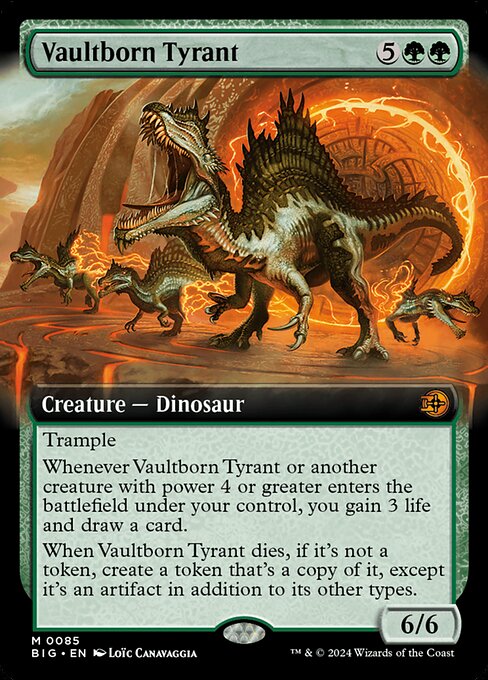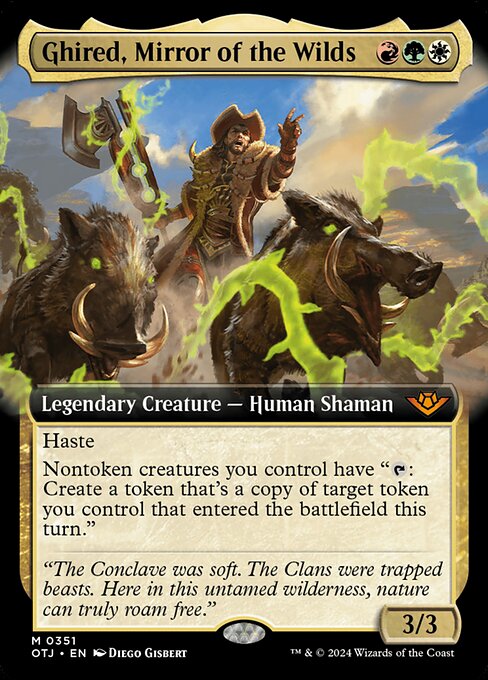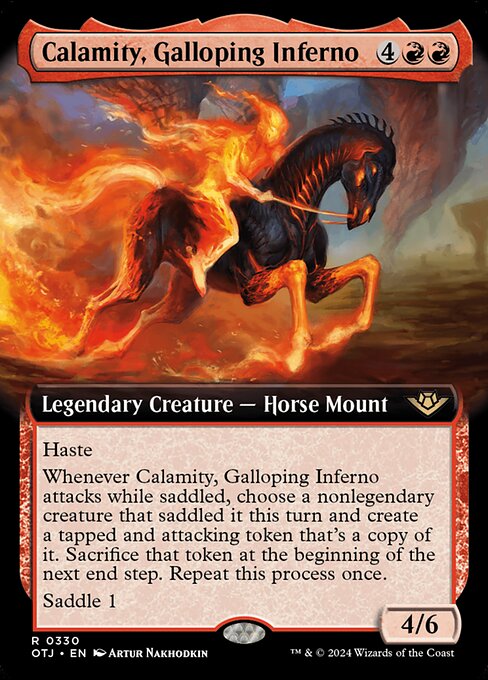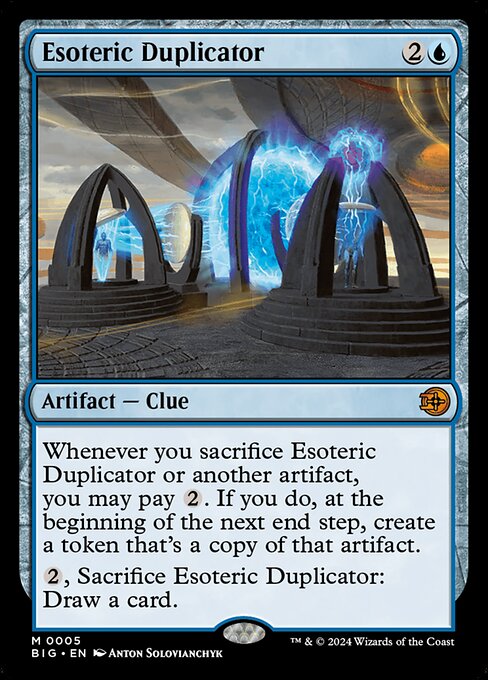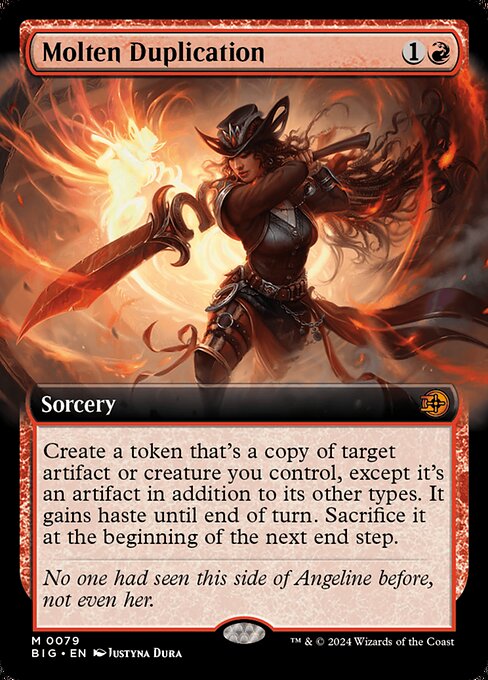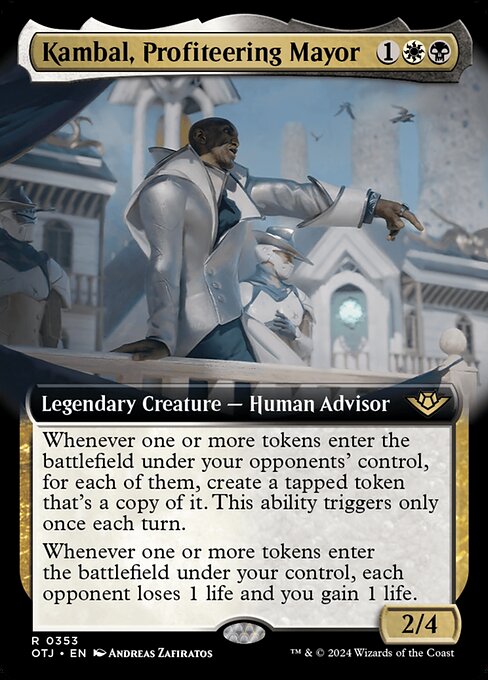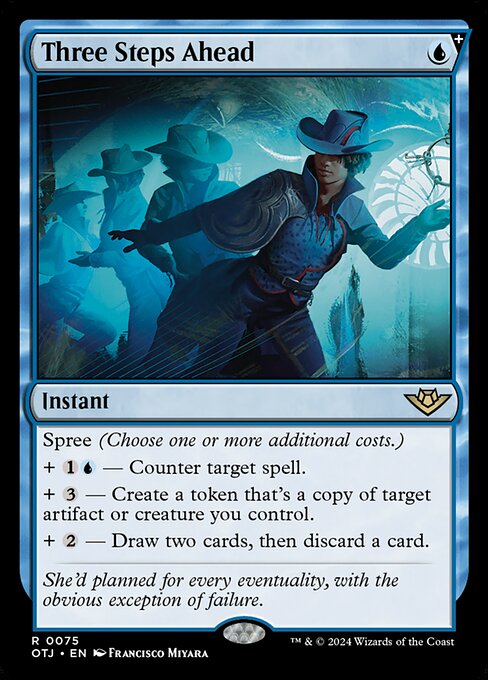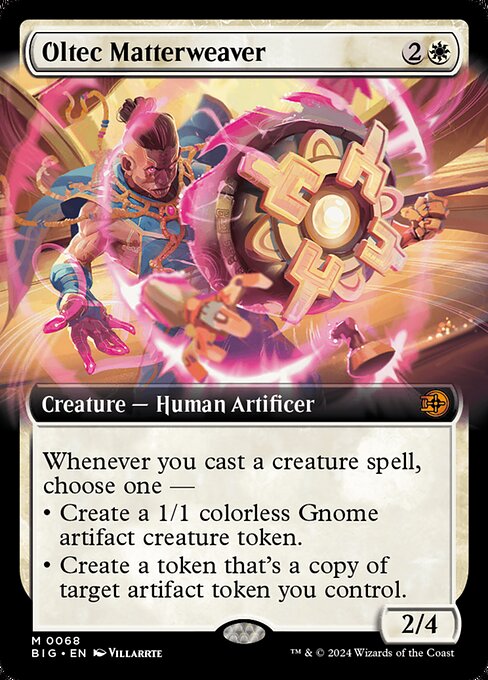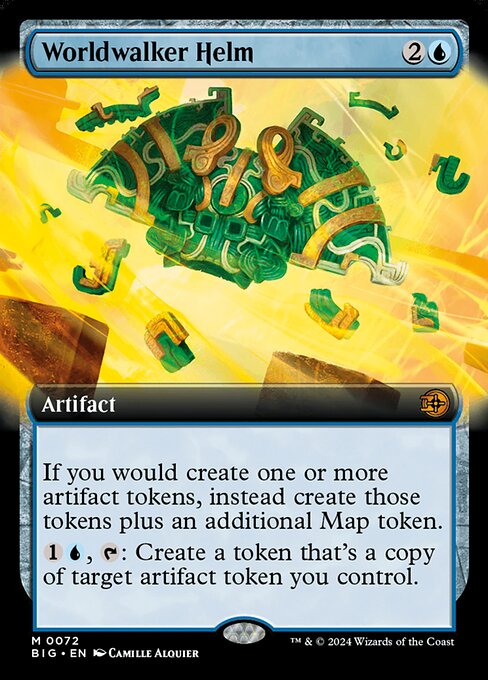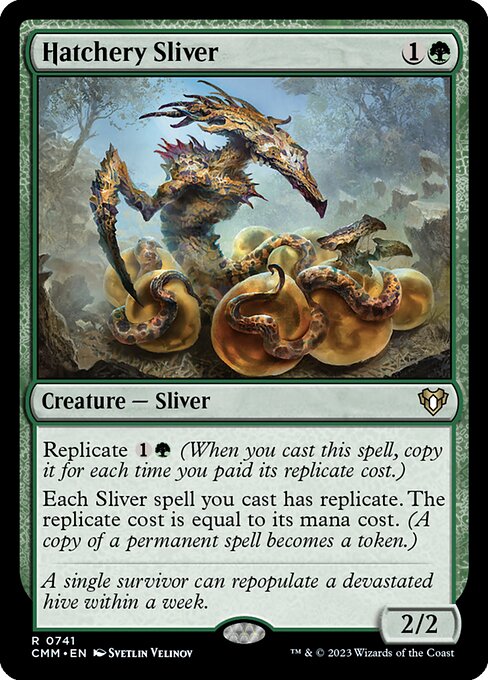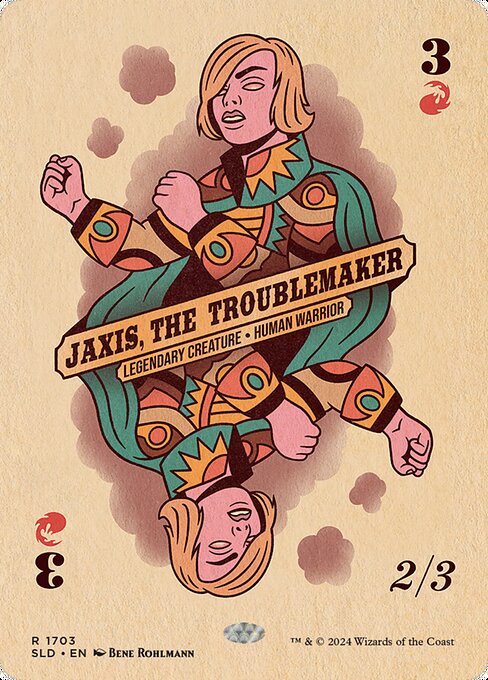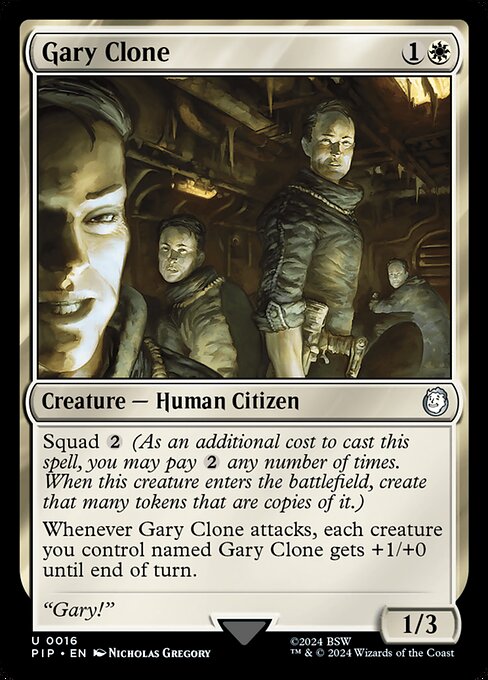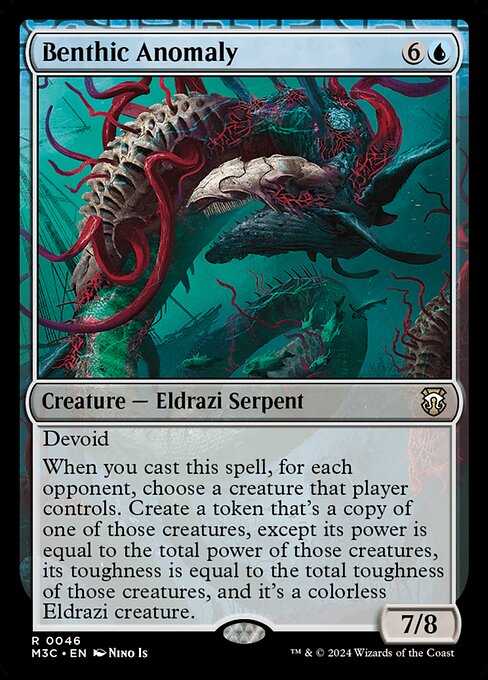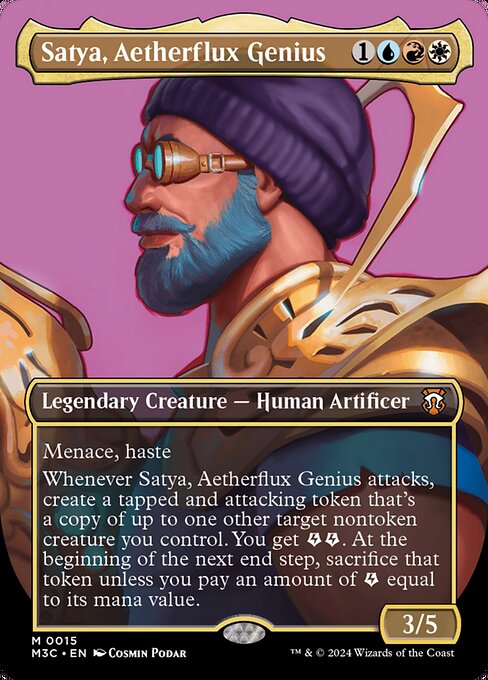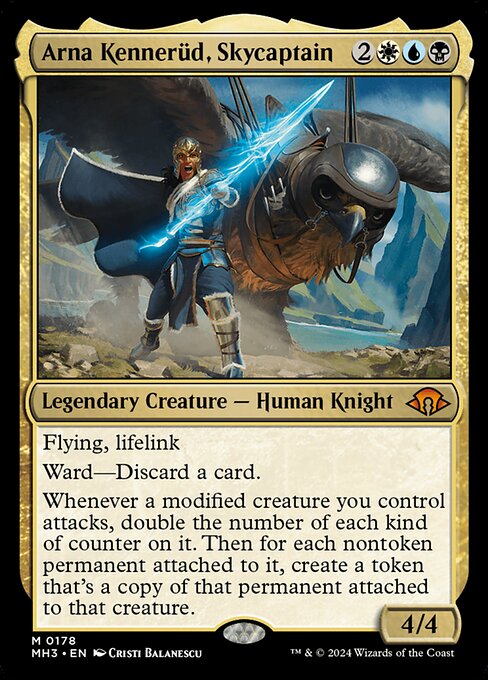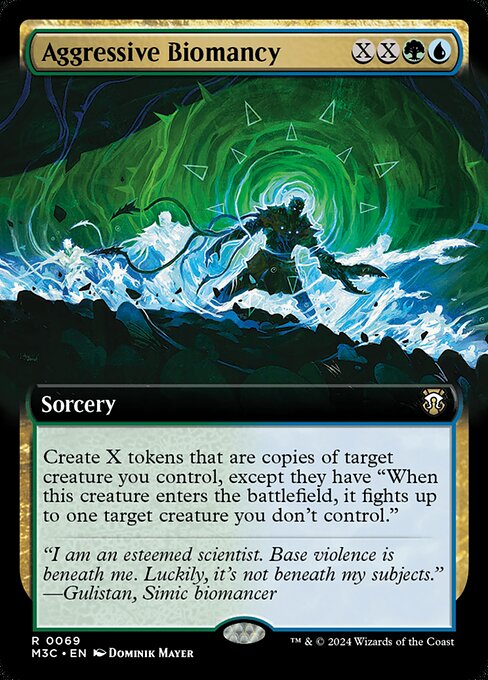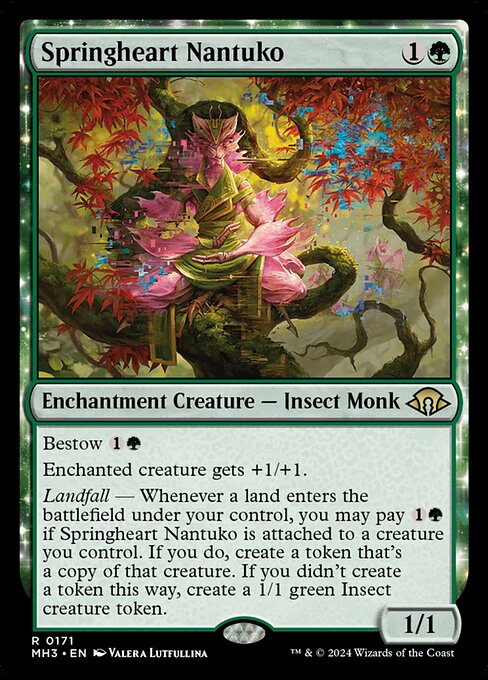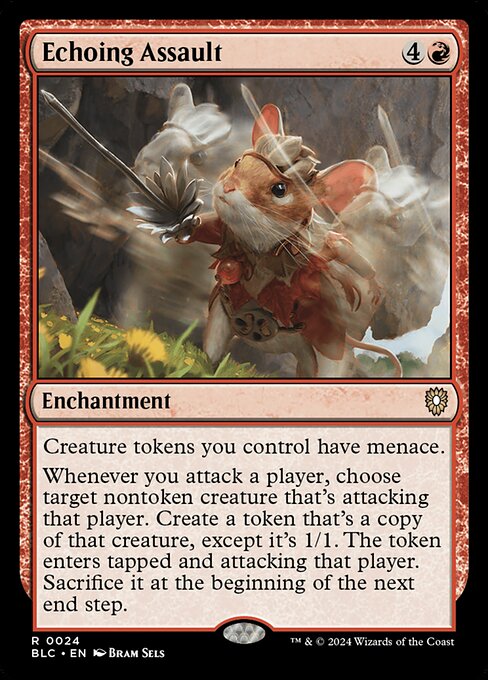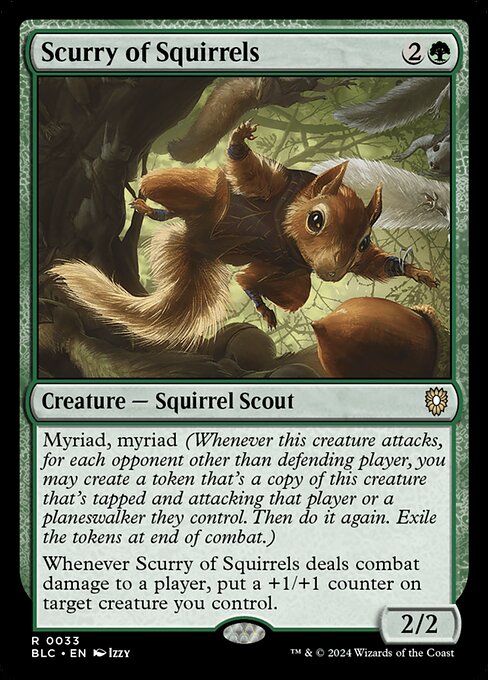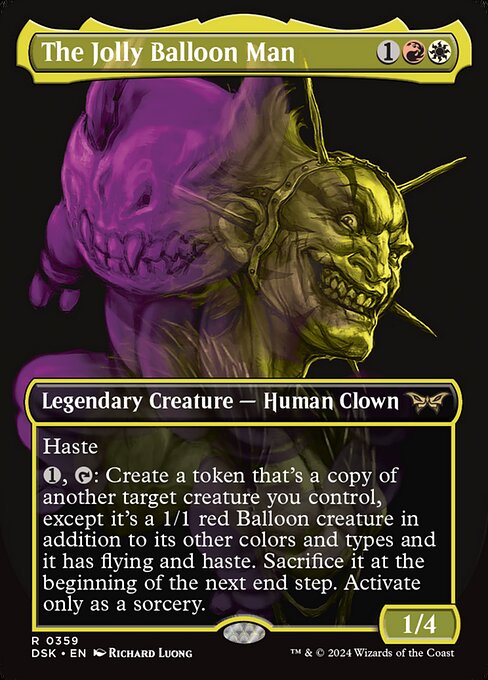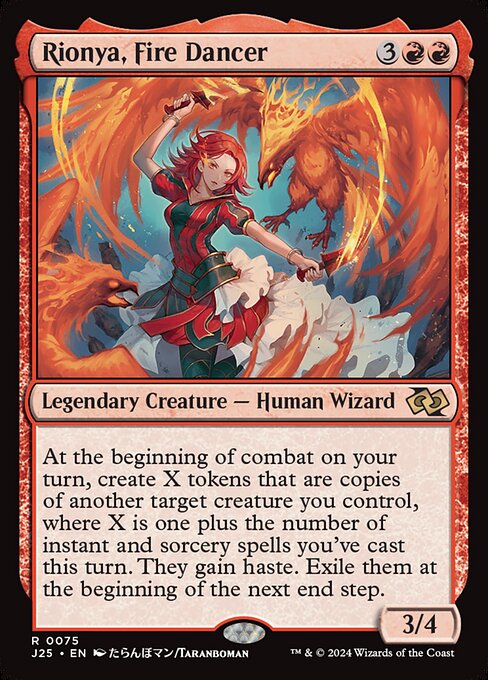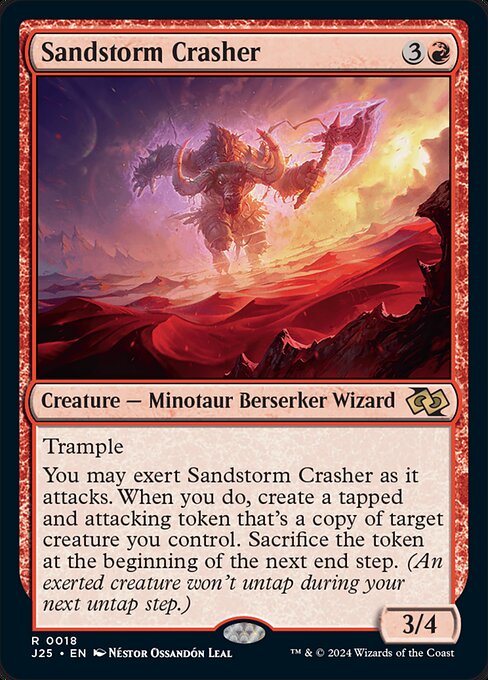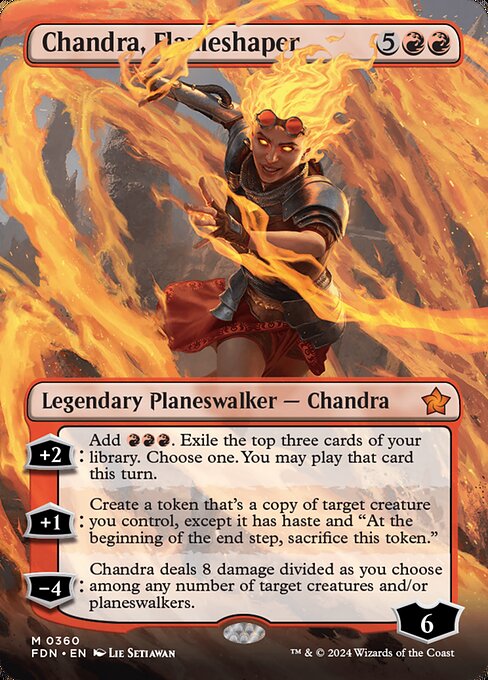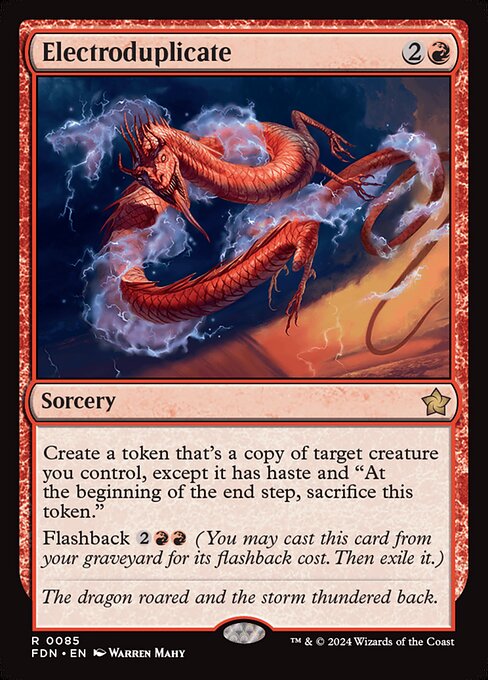Invasão de Alara // Despertar o Maelstrom
//
Batalha — Cerco // Feitiço
Quando Invasão de Alara entrar no campo de batalha, exile cards do topo de seu grimório até exilar dois cards não de terreno com valor de mana igual ou inferior a 4. Você pode conjurar um daqueles dois cards sem pagar seu custo de mana. Coloque um deles em sua mão. Depois, coloque os outros cards exilados dessa forma no fundo de seu grimório em ordem aleatória. // Despertar o Maelstrom é de todas as cores.
O jogador alvo compra dois cards. Você pode colocar um card de artefato de sua mão no campo de batalha. Crie uma ficha que seja uma cópia de uma permanente que você controla. Distribua três marcadores +1/+1 entre uma, duas ou três criaturas que você controla. Destrua a permanente alvo que um oponente controla.
O jogador alvo compra dois cards. Você pode colocar um card de artefato de sua mão no campo de batalha. Crie uma ficha que seja uma cópia de uma permanente que você controla. Distribua três marcadores +1/+1 entre uma, duas ou três criaturas que você controla. Destrua a permanente alvo que um oponente controla.
standard
future
historic
gladiator
pioneer
explorer
modern
legacy
pauper
vintage
penny
commander
brawl
alchemy
paupercommander
duel
oldschool
premodern
Rulings
If the copied permanent is copying something else, then the token enters the battlefield as whatever that permanent copied.
If a non-battle permanent that is already on the battlefield become a copy of a Siege, its controller chooses one of their opponents to be that battle’s protector. However, it will most likely be put into its owner’s graveyard because it has no defense counters (see below).
If a token or a card that isn’t represented by a transforming double-faced card becomes a copy of a Siege, it can’t be cast as its triggered ability resolves. It will remain in exile. If it’s a token, it will cease to exist the next time state-based actions are performed.
Any enters-the-battlefield abilities of the copied permanent will trigger when the token enters the battlefield. Any “as [this permanent] enters the battlefield” or “[this permanent] enters the battlefield with” abilities of the copied permanent will also work.
If the copied permanent is a token, the token that’s created copies the original characteristics of that token as stated by the effect that created that token.
If a battle that’s being attacked somehow stops being a battle, it is removed from combat. Similarly, if its controller changes in the middle of combat, it is removed from combat.
The token copies exactly what was printed on the original permanent and nothing else (unless that permanent is copying something else or is a token; see below). It doesn’t copy whether that permanent is tapped or untapped, whether it has any counters on it or Auras and Equipment attached to it, or any non-copy effects that have changed its power, toughness, types, color, and so on.
Only creatures controlled by a battle’s protector can block creatures that are attacking that battle. This means a Siege’s controller can never assign creatures to block for it.
A Siege’s controller can’t be its protector. If a Siege’s protector ever gains control of it, they choose a new player to be its protector. This is a state-based action.
If a battle has no defense counters, and it isn’t the source of a triggered ability that has triggered but not yet left the stack, that battle is put into its owner’s graveyard. This is a state-based action. This doesn’t cause a Siege’s intrinsic triggered ability to trigger.
If the copied permanent has in its mana cost, X is 0.
A battle’s “defense” is displayed in the bottom right corner of the card. A battle enters the battlefield with that number of defense counters. If another permanent enters the battlefield as a copy of a battle, it also enters with that number of defense counters.
A battle can be dealt damage and be target of spells and/or abilities that target “any target.”
A battle can be attacked by all players other than its protector. Notably, this means a Siege’s controller can attack it.
Sieges each have an intrinsic triggered ability. That ability is “When the last defense counter is removed from this permanent, exile it, then you may cast it transformed without paying its mana cost.”
If you cast a spell without paying its mana cost, you can’t choose to cast it for any alternative costs. You can, however, pay any additional costs. If the spell has any mandatory additional costs, you must pay those.
If a Siege never had defense counters on it (perhaps because a permanent became a copy of one), it can’t have its last defense counter removed. It will be put into its owner’s graveyard. You won’t exile it or cast the other face.
In a multiplayer game, if the protector of a battle leaves the game and that battle is not currently being attacked, its controller chooses a new protector for it as a state-based action. If it is being attacked, its controller chooses a new protector for it once no creatures are attacking it. This means that it continues to be attacked and can be dealt combat damage as normal.
Awaken the Maelstrom has two targets: the player who will draw cards and the permanent an opponent controls that will be destroyed. You must choose legal targets for both to cast Awaken the Maelstrom. All other choices are made on resolution. Specifically, this means you can create a token that’s a copy of the artifact you just put onto the battlefield (which perhaps you just drew) and then put +1/+1 counters on it if it’s also a creature.
As a Siege enters the battlefield, its controller chooses an opponent to be its protector.
If you exile only one nonland card with mana value 4 or less, you’ll have the option to cast it. If you don’t, you’ll put it into your hand.
If the spell has in its mana cost, you must choose 0 as the value of X when casting it without paying its mana cost.
Damage dealt to a battle causes that many defense counters to be removed from it.
If a permanent that is represented by a transforming double-faced card becomes a copy of a Siege, it will be exiled as that Siege’s triggered ability resolves, then it will be cast transformed. Note that this applies only to transforming double-faced cards, not to modal double-faced cards that can normally be played using either face.
Battles can’t attack or block, even if one also becomes a creature. If an attacking or blocking creature somehow becomes a battle in addition to being a creature, it is removed from combat.
For Invasion of Alara’s triggered ability, if you exile two nonland cards with mana value 4 or less, but you don’t cast one of them, the one you don’t put into your hand will remain in exile. It won’t be put on the bottom of your library.
If a non-battle permanent that is already on the battlefield become a copy of a Siege, its controller chooses one of their opponents to be that battle’s protector. However, it will most likely be put into its owner’s graveyard because it has no defense counters (see below).
If a token or a card that isn’t represented by a transforming double-faced card becomes a copy of a Siege, it can’t be cast as its triggered ability resolves. It will remain in exile. If it’s a token, it will cease to exist the next time state-based actions are performed.
Any enters-the-battlefield abilities of the copied permanent will trigger when the token enters the battlefield. Any “as [this permanent] enters the battlefield” or “[this permanent] enters the battlefield with” abilities of the copied permanent will also work.
If the copied permanent is a token, the token that’s created copies the original characteristics of that token as stated by the effect that created that token.
If a battle that’s being attacked somehow stops being a battle, it is removed from combat. Similarly, if its controller changes in the middle of combat, it is removed from combat.
The token copies exactly what was printed on the original permanent and nothing else (unless that permanent is copying something else or is a token; see below). It doesn’t copy whether that permanent is tapped or untapped, whether it has any counters on it or Auras and Equipment attached to it, or any non-copy effects that have changed its power, toughness, types, color, and so on.
Only creatures controlled by a battle’s protector can block creatures that are attacking that battle. This means a Siege’s controller can never assign creatures to block for it.
A Siege’s controller can’t be its protector. If a Siege’s protector ever gains control of it, they choose a new player to be its protector. This is a state-based action.
If a battle has no defense counters, and it isn’t the source of a triggered ability that has triggered but not yet left the stack, that battle is put into its owner’s graveyard. This is a state-based action. This doesn’t cause a Siege’s intrinsic triggered ability to trigger.
If the copied permanent has in its mana cost, X is 0.
A battle’s “defense” is displayed in the bottom right corner of the card. A battle enters the battlefield with that number of defense counters. If another permanent enters the battlefield as a copy of a battle, it also enters with that number of defense counters.
A battle can be dealt damage and be target of spells and/or abilities that target “any target.”
A battle can be attacked by all players other than its protector. Notably, this means a Siege’s controller can attack it.
Sieges each have an intrinsic triggered ability. That ability is “When the last defense counter is removed from this permanent, exile it, then you may cast it transformed without paying its mana cost.”
If you cast a spell without paying its mana cost, you can’t choose to cast it for any alternative costs. You can, however, pay any additional costs. If the spell has any mandatory additional costs, you must pay those.
If a Siege never had defense counters on it (perhaps because a permanent became a copy of one), it can’t have its last defense counter removed. It will be put into its owner’s graveyard. You won’t exile it or cast the other face.
In a multiplayer game, if the protector of a battle leaves the game and that battle is not currently being attacked, its controller chooses a new protector for it as a state-based action. If it is being attacked, its controller chooses a new protector for it once no creatures are attacking it. This means that it continues to be attacked and can be dealt combat damage as normal.
Awaken the Maelstrom has two targets: the player who will draw cards and the permanent an opponent controls that will be destroyed. You must choose legal targets for both to cast Awaken the Maelstrom. All other choices are made on resolution. Specifically, this means you can create a token that’s a copy of the artifact you just put onto the battlefield (which perhaps you just drew) and then put +1/+1 counters on it if it’s also a creature.
As a Siege enters the battlefield, its controller chooses an opponent to be its protector.
If you exile only one nonland card with mana value 4 or less, you’ll have the option to cast it. If you don’t, you’ll put it into your hand.
If the spell has in its mana cost, you must choose 0 as the value of X when casting it without paying its mana cost.
Damage dealt to a battle causes that many defense counters to be removed from it.
If a permanent that is represented by a transforming double-faced card becomes a copy of a Siege, it will be exiled as that Siege’s triggered ability resolves, then it will be cast transformed. Note that this applies only to transforming double-faced cards, not to modal double-faced cards that can normally be played using either face.
Battles can’t attack or block, even if one also becomes a creature. If an attacking or blocking creature somehow becomes a battle in addition to being a creature, it is removed from combat.
For Invasion of Alara’s triggered ability, if you exile two nonland cards with mana value 4 or less, but you don’t cast one of them, the one you don’t put into your hand will remain in exile. It won’t be put on the bottom of your library.
Rulings
If the copied permanent is copying something else, then the token enters the battlefield as whatever that permanent copied.
If a non-battle permanent that is already on the battlefield become a copy of a Siege, its controller chooses one of their opponents to be that battle’s protector. However, it will most likely be put into its owner’s graveyard because it has no defense counters (see below).
If a token or a card that isn’t represented by a transforming double-faced card becomes a copy of a Siege, it can’t be cast as its triggered ability resolves. It will remain in exile. If it’s a token, it will cease to exist the next time state-based actions are performed.
Any enters-the-battlefield abilities of the copied permanent will trigger when the token enters the battlefield. Any “as [this permanent] enters the battlefield” or “[this permanent] enters the battlefield with” abilities of the copied permanent will also work.
If the copied permanent is a token, the token that’s created copies the original characteristics of that token as stated by the effect that created that token.
If a battle that’s being attacked somehow stops being a battle, it is removed from combat. Similarly, if its controller changes in the middle of combat, it is removed from combat.
The token copies exactly what was printed on the original permanent and nothing else (unless that permanent is copying something else or is a token; see below). It doesn’t copy whether that permanent is tapped or untapped, whether it has any counters on it or Auras and Equipment attached to it, or any non-copy effects that have changed its power, toughness, types, color, and so on.
Only creatures controlled by a battle’s protector can block creatures that are attacking that battle. This means a Siege’s controller can never assign creatures to block for it.
A Siege’s controller can’t be its protector. If a Siege’s protector ever gains control of it, they choose a new player to be its protector. This is a state-based action.
If a battle has no defense counters, and it isn’t the source of a triggered ability that has triggered but not yet left the stack, that battle is put into its owner’s graveyard. This is a state-based action. This doesn’t cause a Siege’s intrinsic triggered ability to trigger.
If the copied permanent has in its mana cost, X is 0.
A battle’s “defense” is displayed in the bottom right corner of the card. A battle enters the battlefield with that number of defense counters. If another permanent enters the battlefield as a copy of a battle, it also enters with that number of defense counters.
A battle can be dealt damage and be target of spells and/or abilities that target “any target.”
A battle can be attacked by all players other than its protector. Notably, this means a Siege’s controller can attack it.
Sieges each have an intrinsic triggered ability. That ability is “When the last defense counter is removed from this permanent, exile it, then you may cast it transformed without paying its mana cost.”
If you cast a spell without paying its mana cost, you can’t choose to cast it for any alternative costs. You can, however, pay any additional costs. If the spell has any mandatory additional costs, you must pay those.
If a Siege never had defense counters on it (perhaps because a permanent became a copy of one), it can’t have its last defense counter removed. It will be put into its owner’s graveyard. You won’t exile it or cast the other face.
In a multiplayer game, if the protector of a battle leaves the game and that battle is not currently being attacked, its controller chooses a new protector for it as a state-based action. If it is being attacked, its controller chooses a new protector for it once no creatures are attacking it. This means that it continues to be attacked and can be dealt combat damage as normal.
Awaken the Maelstrom has two targets: the player who will draw cards and the permanent an opponent controls that will be destroyed. You must choose legal targets for both to cast Awaken the Maelstrom. All other choices are made on resolution. Specifically, this means you can create a token that’s a copy of the artifact you just put onto the battlefield (which perhaps you just drew) and then put +1/+1 counters on it if it’s also a creature.
As a Siege enters the battlefield, its controller chooses an opponent to be its protector.
If you exile only one nonland card with mana value 4 or less, you’ll have the option to cast it. If you don’t, you’ll put it into your hand.
If the spell has in its mana cost, you must choose 0 as the value of X when casting it without paying its mana cost.
Damage dealt to a battle causes that many defense counters to be removed from it.
If a permanent that is represented by a transforming double-faced card becomes a copy of a Siege, it will be exiled as that Siege’s triggered ability resolves, then it will be cast transformed. Note that this applies only to transforming double-faced cards, not to modal double-faced cards that can normally be played using either face.
Battles can’t attack or block, even if one also becomes a creature. If an attacking or blocking creature somehow becomes a battle in addition to being a creature, it is removed from combat.
For Invasion of Alara’s triggered ability, if you exile two nonland cards with mana value 4 or less, but you don’t cast one of them, the one you don’t put into your hand will remain in exile. It won’t be put on the bottom of your library.
If a non-battle permanent that is already on the battlefield become a copy of a Siege, its controller chooses one of their opponents to be that battle’s protector. However, it will most likely be put into its owner’s graveyard because it has no defense counters (see below).
If a token or a card that isn’t represented by a transforming double-faced card becomes a copy of a Siege, it can’t be cast as its triggered ability resolves. It will remain in exile. If it’s a token, it will cease to exist the next time state-based actions are performed.
Any enters-the-battlefield abilities of the copied permanent will trigger when the token enters the battlefield. Any “as [this permanent] enters the battlefield” or “[this permanent] enters the battlefield with” abilities of the copied permanent will also work.
If the copied permanent is a token, the token that’s created copies the original characteristics of that token as stated by the effect that created that token.
If a battle that’s being attacked somehow stops being a battle, it is removed from combat. Similarly, if its controller changes in the middle of combat, it is removed from combat.
The token copies exactly what was printed on the original permanent and nothing else (unless that permanent is copying something else or is a token; see below). It doesn’t copy whether that permanent is tapped or untapped, whether it has any counters on it or Auras and Equipment attached to it, or any non-copy effects that have changed its power, toughness, types, color, and so on.
Only creatures controlled by a battle’s protector can block creatures that are attacking that battle. This means a Siege’s controller can never assign creatures to block for it.
A Siege’s controller can’t be its protector. If a Siege’s protector ever gains control of it, they choose a new player to be its protector. This is a state-based action.
If a battle has no defense counters, and it isn’t the source of a triggered ability that has triggered but not yet left the stack, that battle is put into its owner’s graveyard. This is a state-based action. This doesn’t cause a Siege’s intrinsic triggered ability to trigger.
If the copied permanent has in its mana cost, X is 0.
A battle’s “defense” is displayed in the bottom right corner of the card. A battle enters the battlefield with that number of defense counters. If another permanent enters the battlefield as a copy of a battle, it also enters with that number of defense counters.
A battle can be dealt damage and be target of spells and/or abilities that target “any target.”
A battle can be attacked by all players other than its protector. Notably, this means a Siege’s controller can attack it.
Sieges each have an intrinsic triggered ability. That ability is “When the last defense counter is removed from this permanent, exile it, then you may cast it transformed without paying its mana cost.”
If you cast a spell without paying its mana cost, you can’t choose to cast it for any alternative costs. You can, however, pay any additional costs. If the spell has any mandatory additional costs, you must pay those.
If a Siege never had defense counters on it (perhaps because a permanent became a copy of one), it can’t have its last defense counter removed. It will be put into its owner’s graveyard. You won’t exile it or cast the other face.
In a multiplayer game, if the protector of a battle leaves the game and that battle is not currently being attacked, its controller chooses a new protector for it as a state-based action. If it is being attacked, its controller chooses a new protector for it once no creatures are attacking it. This means that it continues to be attacked and can be dealt combat damage as normal.
Awaken the Maelstrom has two targets: the player who will draw cards and the permanent an opponent controls that will be destroyed. You must choose legal targets for both to cast Awaken the Maelstrom. All other choices are made on resolution. Specifically, this means you can create a token that’s a copy of the artifact you just put onto the battlefield (which perhaps you just drew) and then put +1/+1 counters on it if it’s also a creature.
As a Siege enters the battlefield, its controller chooses an opponent to be its protector.
If you exile only one nonland card with mana value 4 or less, you’ll have the option to cast it. If you don’t, you’ll put it into your hand.
If the spell has in its mana cost, you must choose 0 as the value of X when casting it without paying its mana cost.
Damage dealt to a battle causes that many defense counters to be removed from it.
If a permanent that is represented by a transforming double-faced card becomes a copy of a Siege, it will be exiled as that Siege’s triggered ability resolves, then it will be cast transformed. Note that this applies only to transforming double-faced cards, not to modal double-faced cards that can normally be played using either face.
Battles can’t attack or block, even if one also becomes a creature. If an attacking or blocking creature somehow becomes a battle in addition to being a creature, it is removed from combat.
For Invasion of Alara’s triggered ability, if you exile two nonland cards with mana value 4 or less, but you don’t cast one of them, the one you don’t put into your hand will remain in exile. It won’t be put on the bottom of your library.
Your collection? Your decks?
Want to manage your collection and/or create decks?
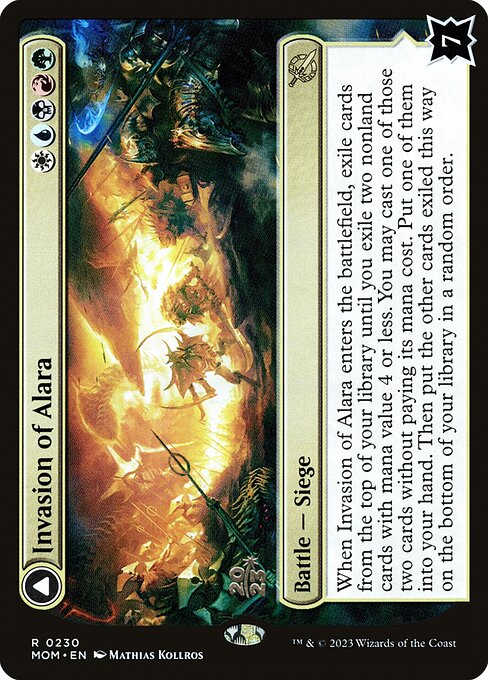

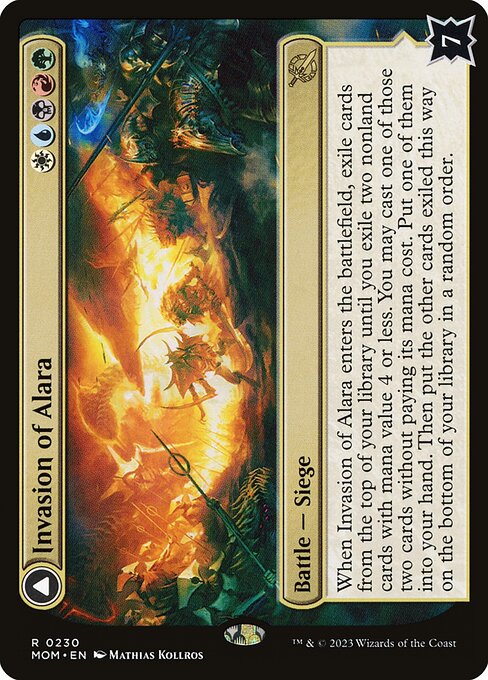
 0
0
 0.34€
0.34€
